GHOSTS, UFOS & FOLKLORE
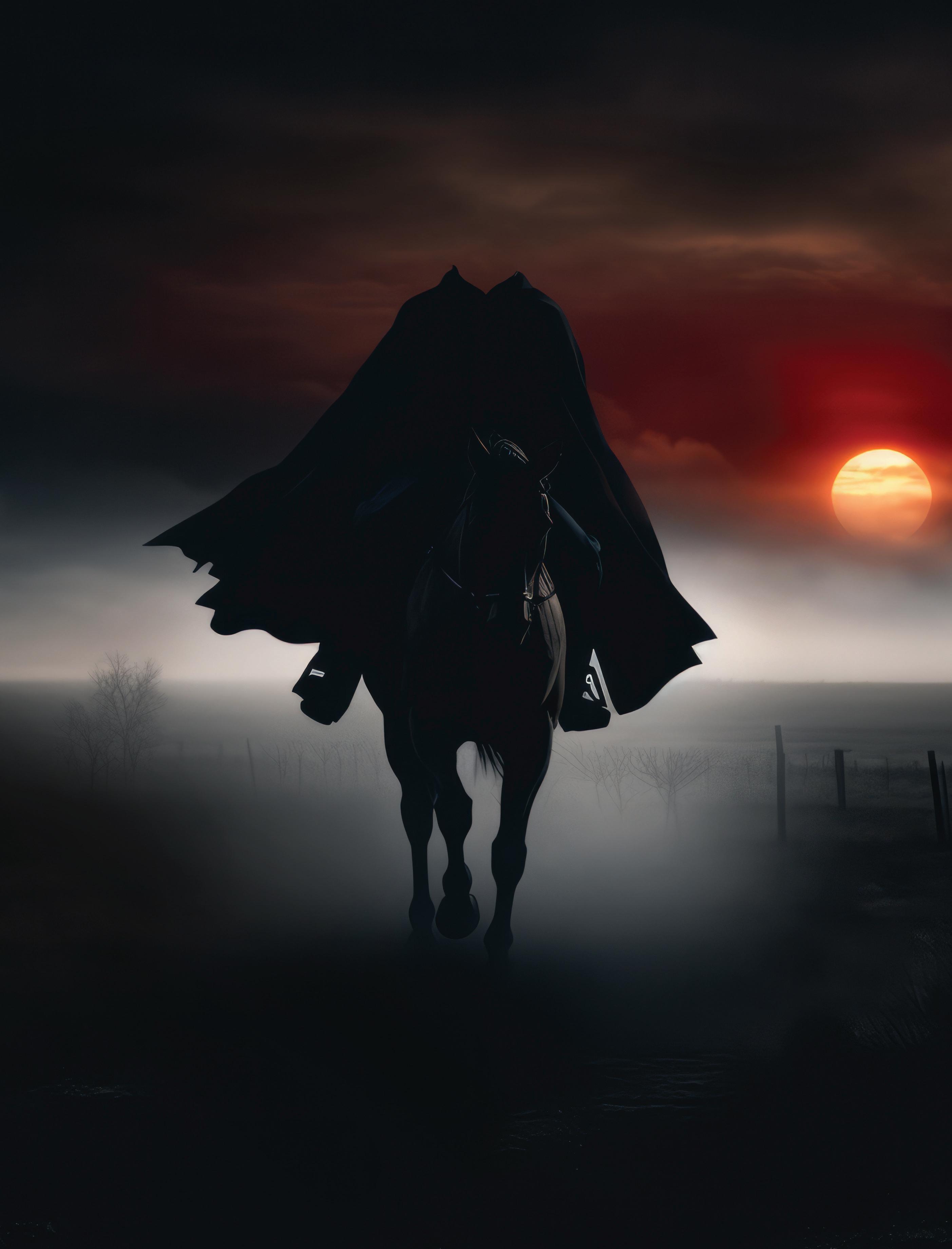
GHOST TOURS
Spine-tingling tales share local history across the state
UNEXPLAINED PHENOMENA
Prehistoric peoples, early settlers, and modern Texans report mysterious sites in the night skies
30 YEARS
OF SALADO TABLEROCK
FRIGHT TRAIL
THE HAUNTED MAGAZINE OF TEXAS
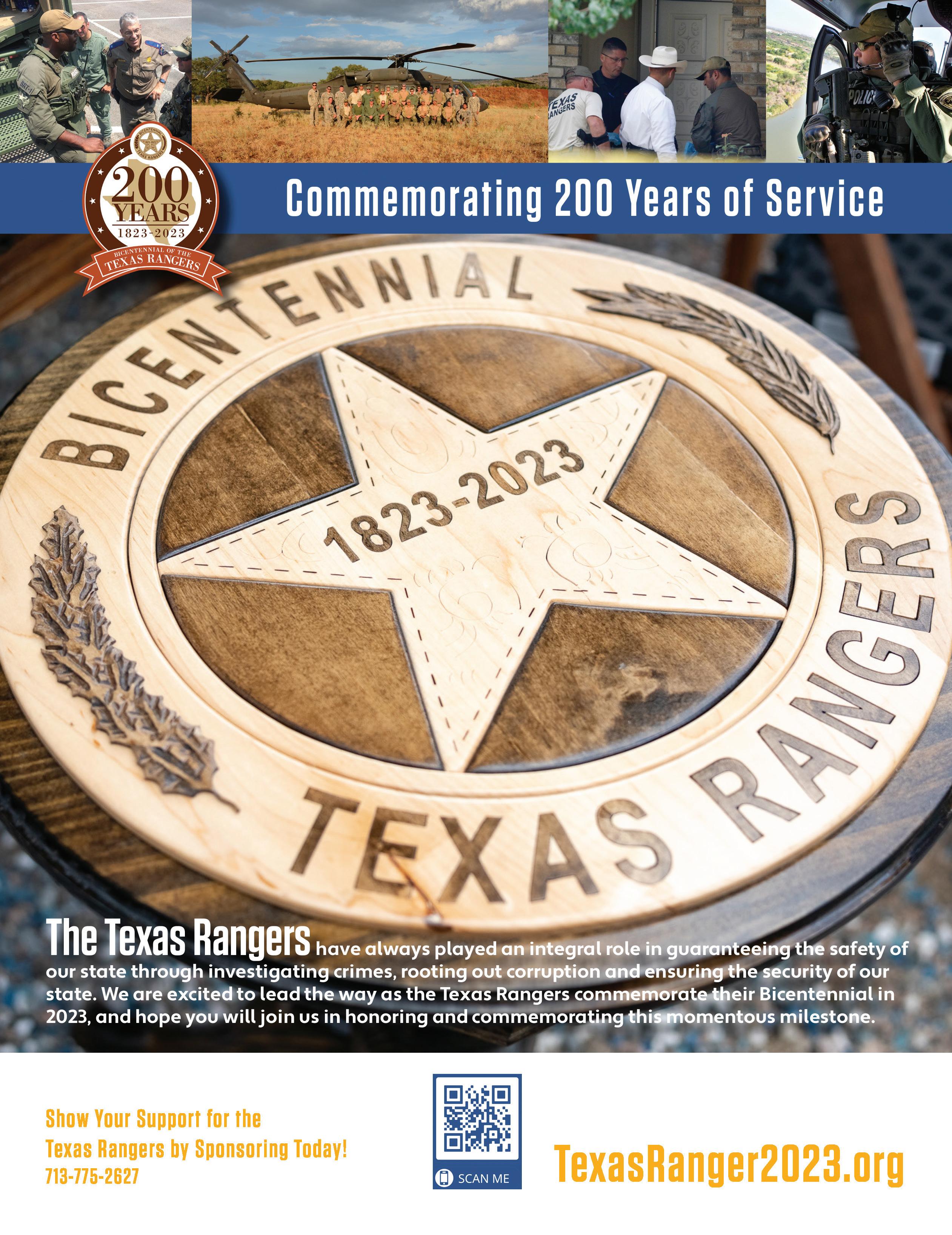
Texas Heritage Trail Regions
The Texas Heritage Trails program is based on 10 scenic driving trails created as a marketing tool in 1968 by Gov. John Connally and the Texas Highway Department (now the Texas Department of Transportation). In 1997, the State Legislature charged the Texas Historical Commission (THC) to create a statewide heritage tourism program. The THC responded with a program based on local, regional and state partnerships and using the 10 driving routes. These “trails” serve as the nucleus of 10 heritage regions and include heritage tourism attractions both on and off the trail.
Happy Fall!
It is a thrill to extend a spectral and phantasmic welcome to you for our well anticipated Issue 26 – Ghosts, UFOs and the Folklore of Texas. I am sure that even our most fearless readers had goosebumps or even shivers go down their spines upon seeing the frightening cover image of the “Headless Horseman of Texas”!
So be forewarned...as we delve into the fascinating world of Texas folklore, myths, and often eerie tales, we embark on a journey through a rich literary tapestry that will entertain the human fascination with the unexplained. This issue promises to captivate the imagination and transport you to realms both historical and supernatural.
Our team of dedicated writers, researchers, and artists has once again poured their passion and expertise into this undertaking. We’ve curated a selection of articles ranging from numerous ghost tours, a literary fright trail and ghost art, to a much-foreseen celestial historic occurrence (aka the 2024 Solar Eclipse). In the following pages of “the folklore of Texas,” you will find a pirate’s chest of chilling narratives, folklore analysis, and striking illustrations that bring these stories to life.
Of course, some things remain constant. We continue to highlight an official state icon (Texas has a total of 76), and enjoy contributions by the Texas State Library and Archives Commission (TSLAC) and the Texas Historical Commission (THC). Our last issue highlighted the THC’s Texas Treasure Business Awards program that recognizes businesses that have been in continuous for-profit operation in Texas for at least 50 years. Awards are presented on a quarterly basis and we’re pleased to share information on the most recent recipients. Lastly, be sure to acquaint yourself with our authentic person, place and thing!
BRAZOS TRAIL
TexasBrazosTrail.com
FOREST TRAIL
TexasForestTrail.com
FORTS TRAIL
TexasFortsTrail.com
HILL COUNTRY TRAIL
TxHillCountryTrail.com

INDEPENDENCE TRAIL
TexasIndependenceTrail.com
LAKES TRAIL
TexasLakesTrail.com
MOUNTAIN TRAIL
TexasMountainTrail.com
PECOS TRAIL
TexasPecosTrail.com
PLAINS TRAIL
TexasPlainsTrail.com
TROPICAL TRAIL TexasTropicalTrail.com
Whether you are a seasoned enthusiast of the supernatural or a newcomer to ghostly legends, this issue of Authentic Texas promises an enlightening and mythical experience for all. We hope to inspire readers to be curious and take unknown paths as they explore the paranormal and folklore of Texas.
Welcome! A mystical and page-turning adventure awaits you!
With ghostly regards,
Pamela Anderson President, Texas Heritage Trails LLC
1
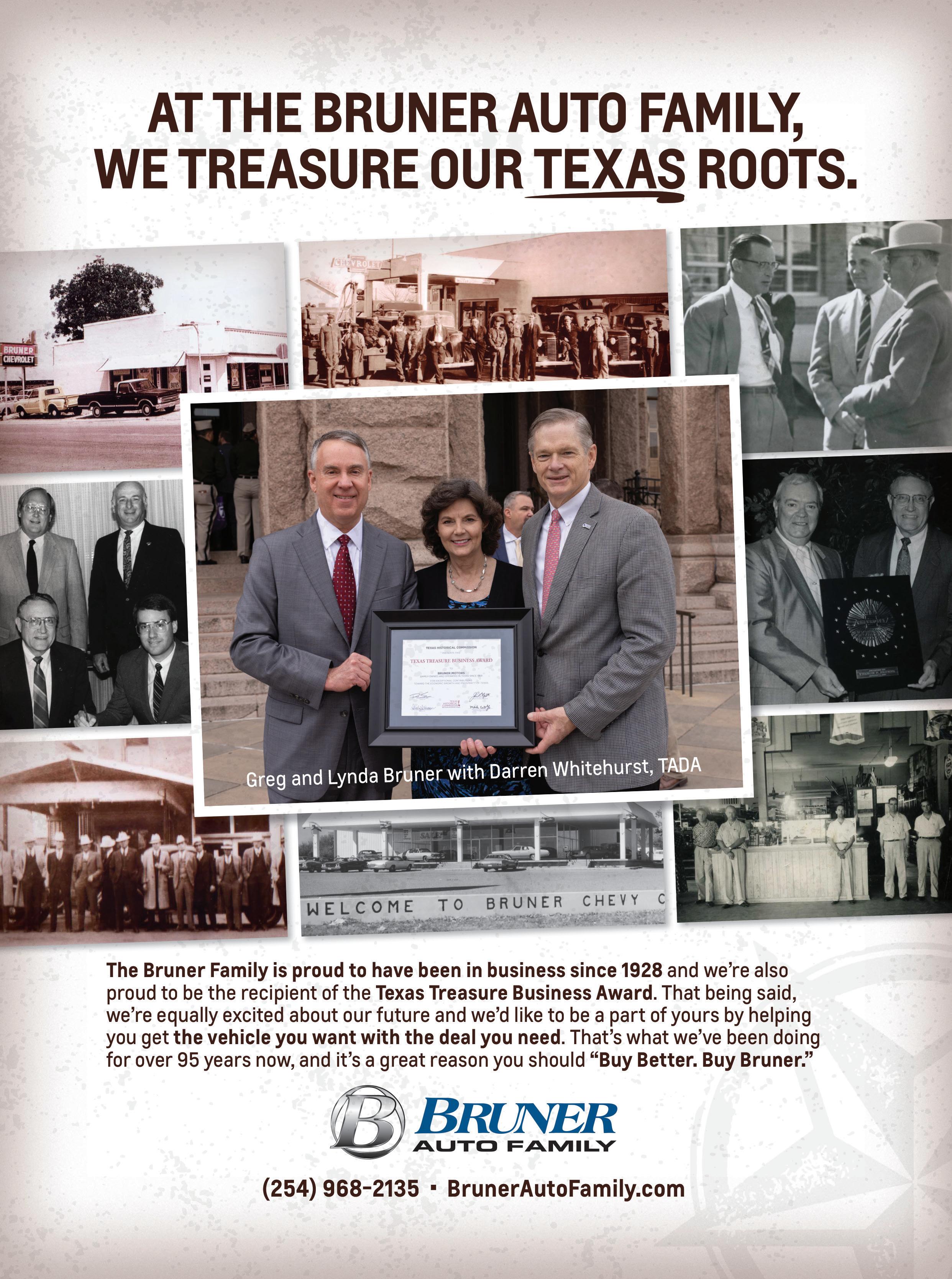
2

3 authentic thing 30 Texas Folklore Society unites the people of Texas and the Southwest authentic person 24 Bob Bluthardt preserving history at Fort Concho National Historic Landmark FEATURES ISSUE 26
Authentic place 36 Jefferson, Texas reveals its history as the “Most haunted small town in America”
Postcard illustration of the cypress trees in the Water at Caddo Lake State Park near Jefferson, Texas
Founded by Texas Heritage Trails LLC

PUBLISHER
Margaret Hoogstra director@authentictexas.com
ADVERTISING SALES DIRECTOR
Tammie Virden sales@authentictexas.com
ADVERTISING SALES
Sharon Whitaker swhitaker@authentictexas.com
ADVERTISING SALES
Philip Walker pwalker@authentictexas.com
DESIGN DIRECTOR
Troy Myatt
SENIOR ART DIRECTOR
Steven Lyons
CONTRIBUTORS

Susan Floyd, Rob Hodges, Mallory Laurel, Kathleen Maca, Eric Miller, Jackie Mills, Bob McCullough, Amy Miller, Carla Pendergraft, Julie Smith, Tristan Smith, Philip Walker
EDITORIAL BOARD
Texas Brazos Trail Region
Pamela Anderson, LLC Manager
Texas Forts Trail Region
Owen Miller, LLC Manager
Tammie Virden, Executive Director
Texas Mountain Trail Region
Randall Kinzie, LLC Manager
Wendy Little, Executive Director
Texas Pecos Trail Region
Bill Simon, LLC Manager
Melissa Hagins, Executive Director
Texas Plains Trail Region
Dolores Mosser, LLC Manager
Allison Kendrick, Executive Director
Texas Heritage Trails LLC P.O. Box 208, Abilene, TX 79604 AuthenticTexas.com
(325) 660-6774
Texas Heritage Trails LLC is owned and operated by five nonprofit heritage trails organizations.


4 AuthenticTexas.com/subscribe Get a regular helping of Texas Heritage with a print, digital, or combo subscription and our free monthly newsletter. Subscribe Today!
Discover how Texas women changed history • Pioneering women • Women in politics • Texas women’s suffrage movement Come visit us and explore our interactive exhibits, historical documents and more. Bring your family, student group or friends. No cost. Plan your visit twu.edu/lead leadership@twu.edu 940-898-4573
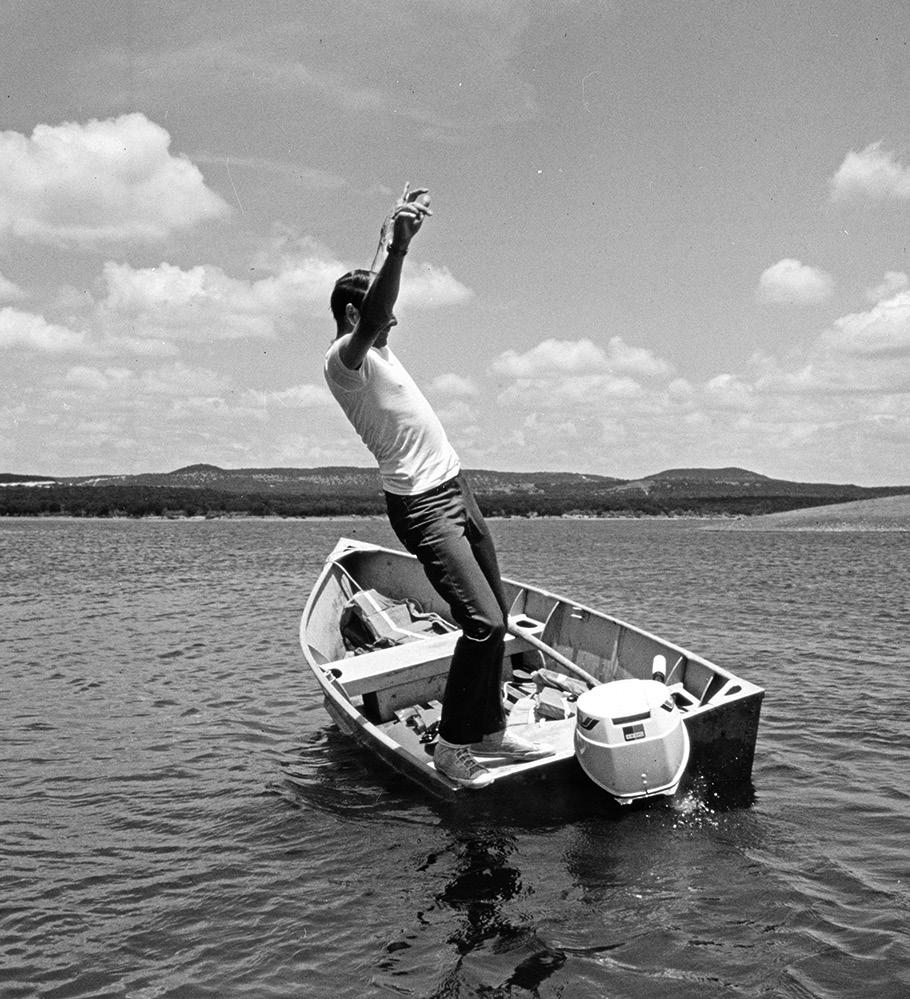

5 yonder Texas icon city lights Eats & Drinks Trail Drives Deep in the art Live Show 8 Purple Sage The Official Native Shrub of Texas 58 Jake & Dorothy’s Café Celebrating 75 years of chicken fried steak and waffle fries 44 Haunted Sites From museums to hotels, Texas has plenty of haunted sites 64 Elgin The ghost signs in a public art scene as wide as Texas 66 Dead Man’s Gun A 1902 Colt Bisley with a tragic Texas history 70 Solar Eclipse Texas cities and travelers are gearing up for the 2024 Solar Eclipse 60 Slaton Bakery A century of sweetness 46 Unexplained Phenomena UFOs were sighted in Texas as early as 1878 62 Gerardo’s Third generation still serving homemade Mexican food 50 Astro Tourism Dark skies attract visitors and many work to keep Texas stars big and bright 52 Texas Pecos Trail Region Highlighting the people and places in this heritage trail region 12 Salado Tablerock Festival of Salado scares up literary delights 14 Alpine Historic Alpine Ghost Tours bring local history to life 10 Terlingua A ghost town’s Día de los Muertos tradition 16 Corpus Christi The Blue Ghost offers more than the typical tour 18 Galveston See Galveston in a different light 22 Mission Flores Funeral Home –A historic and treasured Texas Business LOCAL LIFE LEGACY DEPARTMENTS TEXAS HISTORICAL COMMISSION 78 Unearthing the Past Discovering Texas history and heritage through the lens of archeology 80 Texas Treasure Business Award Spotlights A snapshot of recent award recipients ISSUE 26 TEXAS STATE LIBRARY & ARCHIVES
Visit Our State Parks Through History with the State Archives
74
Online exhibits showcase photos, drawings and documents and commemorate Texas State Parks’ Centennial

6
8
texas icon
Purple sage is Texas tough – and beautiful!
LOCAL
10
yonder
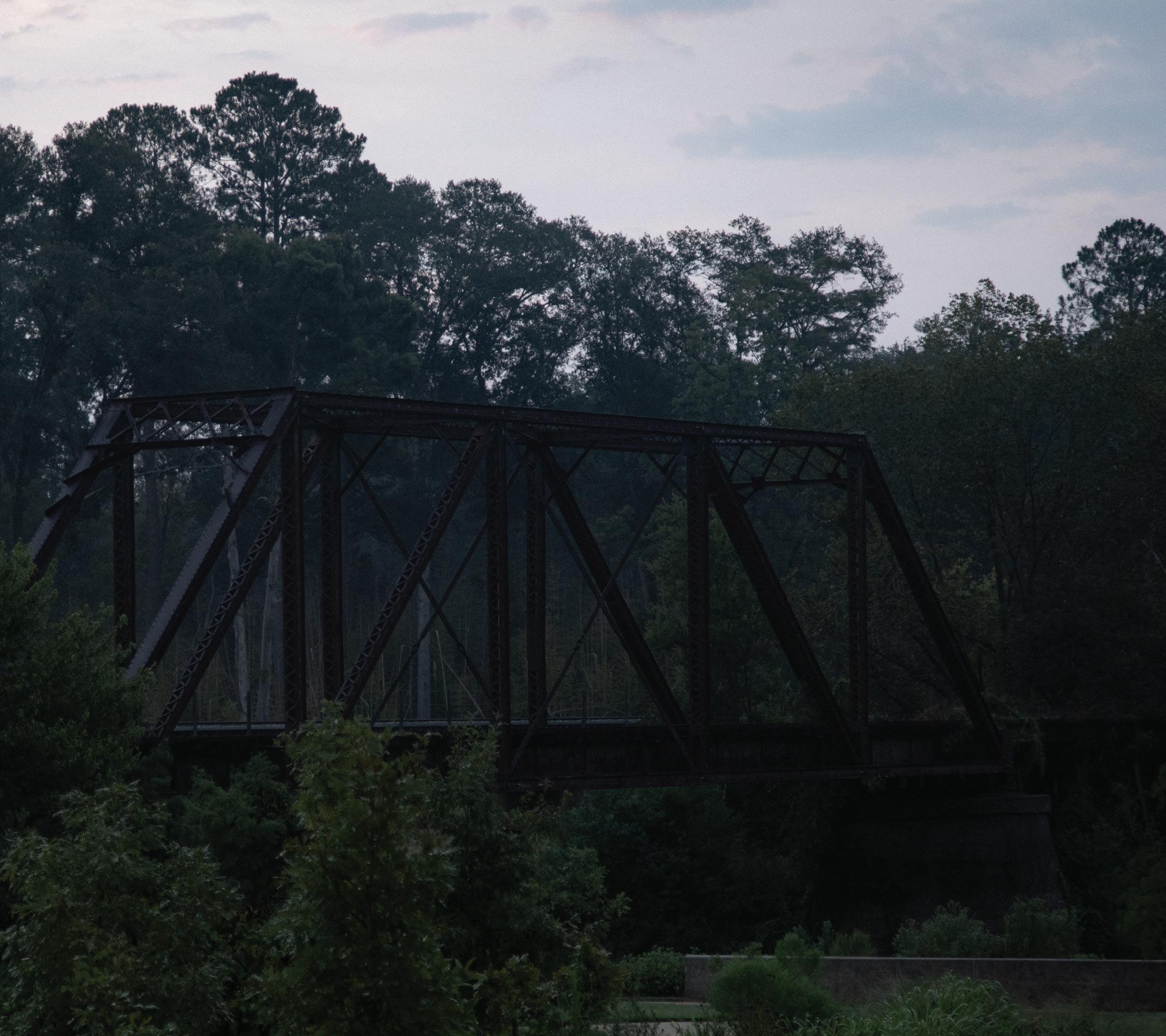
Terlingua remembers those passed on; literary characters tell frightful tales in Salado; Alpine scares up local history and tales.
16
city lights
The Blue Ghost floats in Corpus Christi; scare up some fun in Galveston; a historic funeral home in Mission is recognized as a Texas treasure.
34
Features
The Texas Folklore Society, the town of Jefferson, Fort Concho director Bob Bluthardt
7
Purple Sage
Symbol of Texas Toughness
by Bob McCullough
Texans typically like to be thought of as resilient, durable and able to withstand adversity. It’s no surprise then that the state’s official native shrub – purple sage – exhibits those traits synonymous with toughness.

In all likelihood, most sons and daughters of the Lone Star State aren’t aware that Texas even has an official native shrub. They’re more likely to recall other state symbols like the state flower (bluebonnet), state tree (pecan) and state bird (mockingbird). But sure enough, Texas in 2005 added an official native shrub to its list of symbols that mirror the state’s heritage, culture and natural history.
Credit former State Representative Dennis Bonnen, who ultimately became Speaker of the Texas House of Representatives, and former State Senator Mike Jackson for securing passage of House Concurrent Resolution 71 and subsequently obtaining Governor Rick Perry’s signature.
“There was a teacher in Representative Bonnen’s legislative district who had his 4th grade students research and nominate various state designations and then hold a schoolwide election,” said Shera Eichler, who was the legislator’s chief of staff from 2002 through 2020. “They discovered that Texas did not have a state native shrub, so they
8 texas icon LOCAL
offered several options on the school election ballot, and Texas purple sage was the winner. The 4th grade class then wrote to then-Representative Bonnen and asked him to author the resolution to designate it as the state native shrub, and he enthusiastically agreed.”
In the words of House Concurrent Resolution 71, “purple sage (Leucophyllum frutescens) is indigenous to the Lone Star State and a treasured part of the Texas landscape.” It’s also known as cenizo, Texas silverleaf, barometer bush and Texas ranger, and it grows naturally on the Edwards Plateau and the South Texas plains.
“This hardy evergreen was first described by Jean Louis Berland, a botanist who collected specimens of Texas flora in the late 1820s and early 1830s,” the resolution continues. “Bearing silvery gray to green foliage, the shrub bursts into color year-round soon after a rain, with blossoms varying from purple to lavender, pink, blue and white.
“Native Americans brewed a pleasant herbal tea from Texas purple sage and used it to treat chills and fever. The shrub also provides forage for cattle, protection for birds and a nesting place for songbirds, including the state bird of Texas. In
addition, the plant serves a multitude of design functions, working well as an ornamental shrub or as a hedge, screen, windbreak or foundation planting.”

The versatile, drought-tolerant plant, which can grow to 10 feet tall, can be found in arid and semi-arid regions of Texas. It requires low maintenance when incorporated into a landscape, said Sharon Hixson of the Native Plant Society of Texas and Becky Etzler, executive director of Kerrville’s Riverside Nature Center. It’s also a popular planting around ranch gates where irrigation is scarce.
After extolling the virtues of Texas purple sage, House Concurrent Resolution 71 fittingly concludes that it “has been described as a plant that ‘can face droughts, freezes, high winds, salt spray, hungry deer and blazing heat and keep right on performing beautifully.’ Such fortitude is a quality highly admired in the Lone Star State.”
“In view of this plant’s important role in the ecology of Texas and its usefulness to the people of this land from ancient to modern times, it is altogether fitting that the Texas purple sage be appropriately recognized” as a symbol of Texas toughness.

9 AUTHENTIC TEXAS FALL 2023
Día de los Muertos at the Terlingua Cemetery
 by Randall Kinzie
by Randall Kinzie
There’s something ironic in celebrating Día de los Muertos in a ghost town. Yet every year, local and area residents as well as visitors from all points of the compass gather to honor the memory of those buried in the Historic Cemetery in the Terlingua Ghost Town.
The cemetery reflects the starkness and the beauty of the region. Established in 1902 and listed on the National Register of Historic Places, it has over 500 graves or commemorative monuments. Pathways meander among the various plots, numerous graves are covered with rocks and many grave markers are homemade. It is still an active cemetery and is said to be one of the most photographed places in Texas.
Día de los Muertos – translated from Spanish meaning “Day of the Dead” – is a celebration that
helps families honor their ancestors. It’s meant to be a joyful time when people remember the deceased and enjoy memories. Day of the Dead combines an ancient Aztec custom of honoring the dead with All Saints’ Day, a Catholic commemoration the Spanish brought to Mexico in the 1500s.
As with most holidays, Día de los Muertos traditions are rich with cultural influence and adjust over time. There are altars (ofrendas) where favorite foods or drinks of the deceased are placed. Skeletons remind the living that death is just a part of life. Small, decorated sugar skulls (calaveras) are placed on altars and exchanged as gifts. They are decorated with colorful paint, glitter, and beads and are smiling to remind the living of the happiness their loved one once brought them.
In Terlingua, it’s tradition to gather at the cemetery at sunset on November 2nd for the local
10 yonder LOCAL
MOUNTAIN TRAIL REGION TERLINGUA
My research is really geared toward the families that were here — the Hispanic families. You read a lot of histories of the Big Bend, and many are written by Anglos and are Anglocentric. Very few cover the Hispanic people, even though they were the backbone of everything down here.
observance of Día de los Muertos. An altar at the entrance to the historic cemetery is decorated with candles, crosses, and photos of loved ones. Candles, flowers, offerings and memorabilia are placed on the graves of family members. Visitors are welcome to bring flowers or mementos to place on one of the three large altars to commemorate loved ones who have passed on.
Kara Gerbert, a longtime resident of Alpine who has participated in the celebration says, “It’s a day the locals get together to remember the families and the persons buried there. It’s not somber, but it is appropriately respectful.”
Following the local custom, a bonfire is started early in the evening and burns late into the night. People bring chairs and gather around to visit with old friends and meet new people, listen to music and share food and beverages. Many in attendance have family buried in the cemetery. Others see the celebration as a way to acknowledge the history of the town.
Terlingua is a historical site and a tourism destination. Located out in Far West Texas between Big Bend National Park and Big Bend State Park, Terlingua is also several miles from the United States and Mexico border. With an abundance of cinnabar in the area, miners were attracted to the area in the 1880s. By 1902,Terlingua consisted of temporary structures and a population of approximately 300 laborers, mostly Mexican. Howard Perry established the Chisos Mining Company in 1903 and quickly built up the area. By 1922, Terlingua produced 40 percent of the quicksilver mined in the U.S. and was home to 2,000 miners and their families. The 1930’s saw the decline of production and in 1942 the Chisos Mining Company filed for bankruptcy. By the end of World War II, mining stopped and the population of the area began to decline. Terlingua became a ghost town shortly thereafter. Today the town has numerous abandoned buildings and structures in various forms of decay, but there are also several active businesses and occupied homes.
Front Street Books
121 E. Hollard Ave.
Alpine, TX 79830
(432) 837-3360
fsbooks.square.site
The Dead Still Speak: Terlingua Cemetery


Inventory: A Key of Information, Maps, and
Photography by Thomas
Terlingua Trading Company
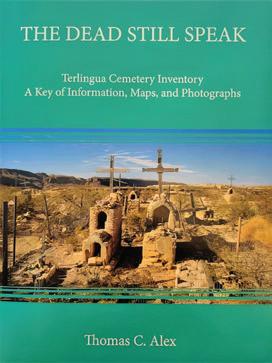
100 Ivey Rd. Terlingua, TX 79852
(432) 371-2234
ghosttowntexas.com
C. Alex
Another Alpine resident, Belle PenaLancaster, has attended a few of the celebrations and says, ”People are respectful. They share stories and talk of memories. There is usually a potluck that is held as well. Overall, it’s a great experience!”
As darkness falls, the cemetery glows with the soft light from the multitude of candles that have been placed on seemingly every grave, that line pathways and that adorn the various altars. People meander throughout the cemetery looking at graves and chatting with each other.
Like many other Texas “ghost towns,”
Driving south on U.S. 118 from Alpine for about seventy-eight miles and following the signs from FM 170 for about five miles, travelers will arrive at the entrance to Terlingua Ghost Town. Driving up the hill, one notices a variety of buildings: taquerias, galleries, overnight accommodations and the facade of Starlight Theatre, the area’s premier restaurant and live music venue. The Historic Terlingua Cemetery is about midway up the hill and to the left – and locals love it! As always, be respectful of the surroundings and enjoy the Terlingua Ghost Town for what it is: community.
11 AUTHENTIC TEXAS FALL 2023
Photos Courtesy Kara Berbert, Alpine Avalanche
Former Big Bend National Park archaeologist Tom Alex is the author of several books on the Big Bend area. He spent several years mapping and cataloging the Terlingua Cemetery in hopes of telling the stories of long-lost Terlinguans.
Visit Terlingua visitbigbend.com/ terlingua Terlingua Cemetery texastimetravel. com/directory/ terlinguacemetery Visit Big Bend visitbigbend.com DON’T MISS
Tablerock of Salado
Fright to Your Night!!!
by Jackie Mills & Pamela Anderson
Looking for a fun way to add some “fright to your night?” Then hurry on over to Tablerock Festival of Salado’s Fright Trail!
This popular Central Texas attraction has thrilled participants for over 18 years. In keeping with the Halloween spirit, Tablerock Festival of Salado’s one-half mile walking trail is transformed into a chilling yet educational literary haunt suitable for all ages.
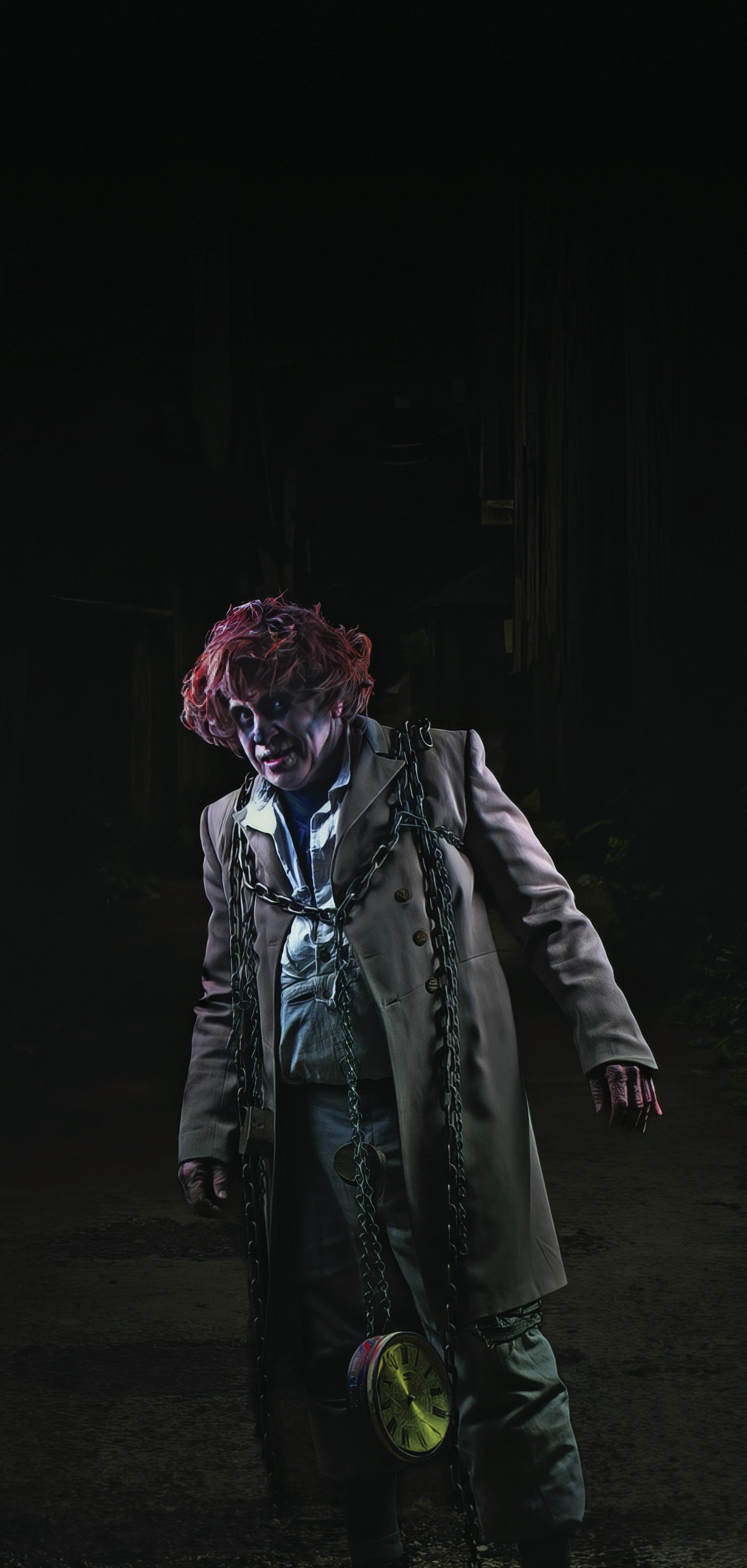
Tablerock Festival of Salado, Inc. is a nonprofit organization, founded by citizens of Salado and Bell County to manage a 450-seat amphitheater built on 13 acres of land donated by the Goodnight family. Tablerock’s amphitheater, walking trail and park land are favorite outdoor gathering and entertainment spots throughout the year. Tablerock recently produced its 30th year of Salado Legends, written by Jackie Mills.
The notion of creating Fright Trail began when Jackie Mills, a Salado resident and a nationally honored playwright, attended the 1999 Annual Institute of Outdoor Theater Conference in Xenia, Ohio. Hosted by various United States outdoor dramas, this conference is an opportunity to rub elbows with writers, directors, professors, actors, and other notable people from all the 125 outdoor theaters throughout the United States and parts of the rest of the world.
“The 1999 conference was all the buzz in preparation for a session featuring PsychoPath Haunted Trail at
12 yonder LOCAL
BRAZOS TRAIL REGION SALADO
the Caesar’s Ford Amphitheater Park,” Mills recalls. The theatrical event was produced by Jan Abel, the Director of Blue Jacket (much like Tablerock’s Salado Legends). The walking path behind the Caesar’s Ford Amphitheater stage was decorated by several dilapidated barns, storage sheds and trees. According to Mills, “A psychopath ran along the eerie setting, through guts and gore, causing startled attendees to scream and shout.” Mills was impressed by the lines of people waiting to attend PsychoPath. With permission from its producer, she was inspired to create a similar experience at Tablerock – without the guts and gore.
Mills subsequently wrote threeminute scripts for about 30 classic fairy tales, poems and plays, and guides with educational facts about their authors. With the help of her talented theatrical team, Tablerock’s Fright Trail was born. The event features classic literature scenes re-enacted by Tablerock actors. Frankenstein, Dracula, and The Raven are included, and attendees meet creatures conjured up by Charles Dickens, Lewis Carroll, William Shakespeare, Mary Shelley, and Washington Irving. A standout attraction at Tablerock’s Fright Trail is the portrayal of the iconic “Headless Horseman,” a character drawn from Irving’s gothic masterpiece, The Legend of Sleepy Hollow. There are also fantasy stories such as the Wizard of Oz and Alice in Wonderland for younger children.

Come and see! Come and hear!
DON’T MISS
Salado Chamber of Commerce
423 S. Main St. Salado, TX 76571
(254) 947-5040 Salado.com
Tablerock of Salado 409 Royal St. Salado, TX 76571
(254) 421-3903 Tablerock.org
Salado Historical Society
SaladoHistorical Society.com
Salado Museum & College Park 423 S. Main St. Salado, TX 76571 (254) 947-5232 Salado Museum.org
Come experience FRIGHTS and DELIGHTS on the last two Saturdays in October. Tickets can be purchased online at CentralTexasTickets.com or at the gate. Drinks, snacks, and candy are available at the concessions. Tablerock features events throughout the year.


13 AUTHENTIC TEXAS FALL 2023
Far left Marley’ ghost from A Christmas Carol by Charles Dickens
Left top to bottom The “Headless Horseman” from Washington Irving’s gothic masterpiece, The Legend of Sleepy Hollow, Witches concocting a brew from William Shakespear’s MacBeth, and spooky displays along the Tablerock pathway.
Unveiling the Ghosts of Alpine’s Past
by Wendy Little
What carefully curated event combines local folklore, ghost stories, theater, comedy, and the documented history of Alpine, Texas? The award winning Historic Alpine Ghost Tours, held in the Alps of Far West Texas!
Produced by the Historic Alpine Association (AHA) and the Sul Ross State University Fine Arts Department, the semiannual ghost tours are held Spring and Fall. Alpine native and President of AHA, Abbey Branch, came up with the idea of creating ghost tours because she wanted to share the ghost stories that she loved hearing as a child, and from reading the book Tales of the Big Bend, that was given to her by her middle school history teacher. Abbey wanted to do a walking tour but bring the subjects of the stories to “life” somehow. So, the wheels started turning to make the tours a live show. Abbey’s enthusiasm for bringing her hometown community and visitors together with fun, unique events had already sparked a renaissance in small town entertainment for Alpine. So, in 2021 Abbey approached Marjie Scott, chair of the Sul Ross Fine Arts Department, and together they worked on the ghost tours. They invited the students in the theater
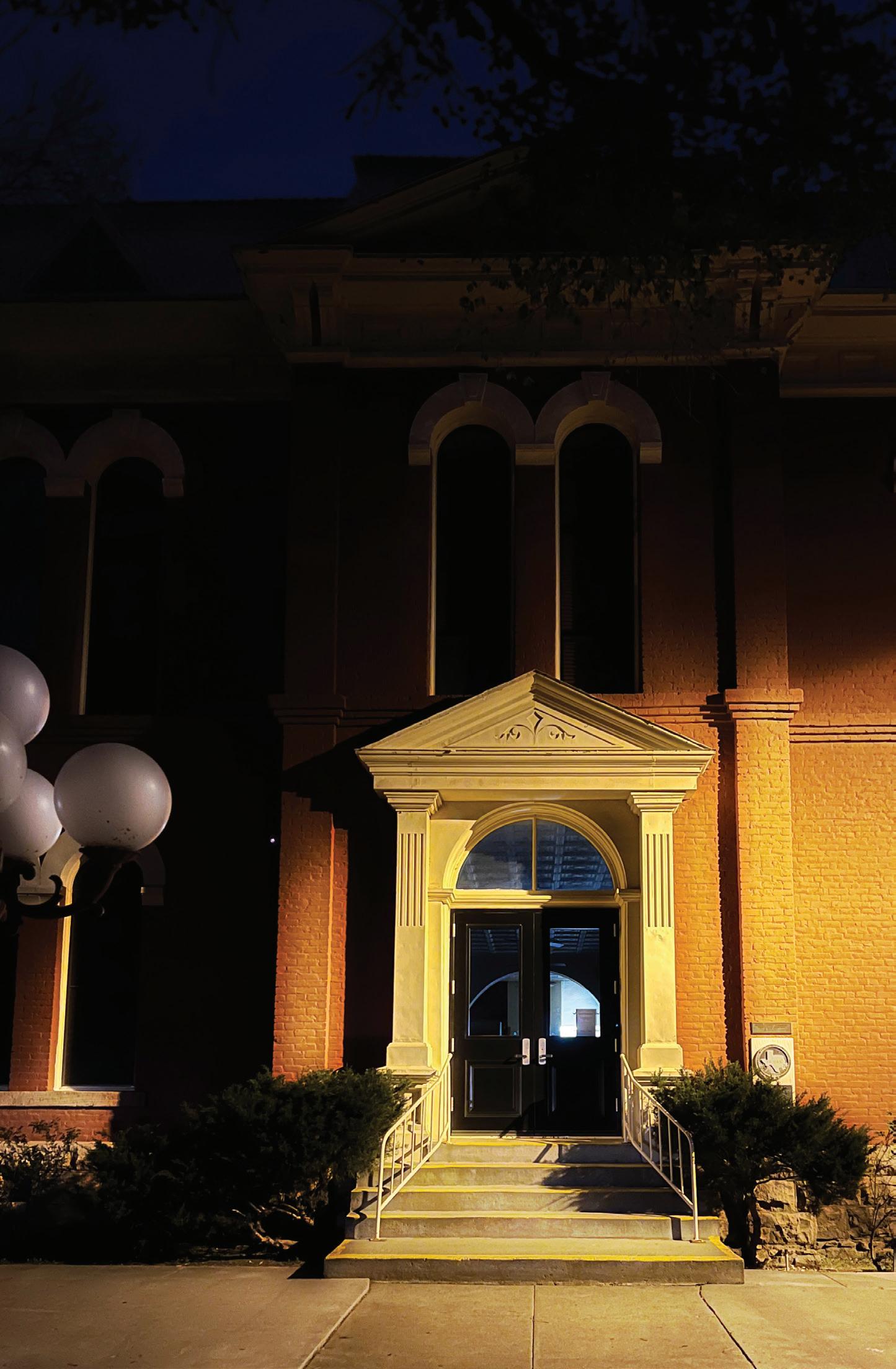
14 yonder LOCAL
MOUNTAIN TRAIL REGION ALPINE
program to participate by being actors portraying the ghosts.
“It is not a typical ghost tour, but a moving theatrical performance,” said Abbey. “I wanted to partner with Marjie to get the theater students involved so we could provide opportunities for them, while also taking the tour to the next level. Our intent is to encourage travel and tourism to Alpine, and to promote awareness about significant historical landmarks, but also to raise money for the theater department. All proceeds from the tours are donated to Sul Ross theater scholarships.”

Bret Scott, Associate Professor of Communication at Sul Ross, and married to Marjie, leads the tours. Bret spent a decade at Second City, a famous comedy club in Chicago, and presents the tours with a delightful mix of historical content, humor and inappropriate jokes – although family friendly. Amusement and hilarity ensue as Bret does his best to herd the enthusiastic participants through the streets of Alpine, and to protect them from the less than kindly spirits – participants may have an encounter with the infamous vengeful La Llorona. If so, Bret’s there to help.
The tour kicks off at the famous Reata Restaurant with a spooky cocktail, (un-spooky for the kiddos or those that don’t partake), and each

participant is given an electronic candle to guide them along the tour. Bret leads the group to locations including the Brewster County Courthouse, where participants meet the ghost of Harvey Hughes, who was hanged on the lawn of the courthouse in 1923, one of the last legal hangings in Texas. Crystal Holland, who was murdered in 1916 in front of the Historic Holland Hotel by her jealous husband also makes an appearance. Additionally, spirits from local folklore pay a visit at the Hotel Ritchey, along historic Murphy Street, and on a deserted section of track near the Alpine Train Station.
“The tours promote the rich history of Alpine while also enjoying some ghost stories from the Big Bend region,” said Marjie, who writes the scripts and serves as the ghost tour director. “And there may be some actual ghost sightings too.” Participants on the tour are encouraged to take photos where they might capture orbs or another ghostly phenomenon.
Following the tour, guests are invited to enjoy a complimentary spooky nightcap at The Holland Hotel, one of the four famous hotels along Highway 90 that were designed by the famous architect of the Southwest, Henry C. Trost. The Gage Hotel in Marathon, Hotel Paisano in Marfa, and Hotel El Capitan in Van Horn were also designed by Trost.

15 AUTHENTIC TEXAS FALL 2023
Left Brewster County Courthouse
Top left a ghostly sighting at Hotel Ritchey
Top right Sul Ross students play a role in sharing local history.
Bottom right Tour leader Bret Scott keeps participants entertained; |
Photos courtesy Conley Razor
Visit Alpine visitalpinetx.com Reata Restaurant 203 North 5th St. Alpine, TX 79830 (432) 837-9232 reata.net/alpine Holland Hotel 209 West Holland Ave. Alpine, TX 79830 (432) 837-2800 thehollandhotel texas.com DON’T MISS
The Blue Ghost
Explore the Haunts of America’s First Supercarrier
 by Tristan Smith
by Tristan Smith
One of America’s most venerated haunted locations isn’t a house. There are no rooms with furniture shrouded in sheets, dark corners of Victorian-era parlors, or musty old stone basements filled with shadows. No, instead, it’s floating in Corpus Christi Bay, right off the coast. Known as the “Blue Ghost,” the USS Lexington was the Navy’s first supercarrier and, according to many visitors, is haunted.
Built during World War II and commissioned in February 1943, the USS Lexington saw extensive service throughout the Pacific Theater. She became the recipient of 11 battle stars and the Presidential Unit Citation. Following the war, she was decommissioned but later modernized and reactivated in
the 1950s before operating more as a training carrier at the end of her life. She was decommissioned in 1991, having an active service life longer than any other of her Essex class siblings.
During her active years, Lexington ran up a list of notable accomplishments, although its time spent during World War II, garnered much of those. Operating in the Pacific, Lexington was a major player in the Allied war effort, playing crucial roles in several pivotal battles such as Midway and the Coral Sea. Throughout the war, she stood out with her resilience and tactical acumen. From the Lexington’s deck, her air group engaged in dogfights and carried out airstrikes that helped turn the tide of the war.
16 city lights LOCAL
TROPICAL TRAIL REGION
CORPUS CHRISTI
Above The USS Lexington at sea in 1986 | Courtesy National WASP WWII Museum
It was during this time that she garnered her nickname. It’s unknown exactly where the name “Blue Ghost” originated, but it could be Lexington’s ghostly appearance. Her sleek, blue-gray camouflage made it seem as those she appeared and disappeared amongst the rolling waves of the Pacific. Or, it could be the impact Lexington had on her adversaries, being elusive and delivering devastating strikes. Reportedly, she may have earned the nickname from Tokyo Rose, the famed Japanese propagandist, who reported her sunk four times, only for the ship to return to combat.
During the war, her planes destroyed 372 aircraft in the air and another 475 on the ground, while her guns brought down between 15 and 20 additional planes. However, Lexington also took her fair share of damage and casualties. She endured four major attacks. Two of these are most notable, one in 1943 when she was struck by a Japanese torpedo and again in 1944 when a Japanese kamikaze attack hit the engine room and back of the bridge. While not all were war casualties, 370 men died aboard the Lexington.
Manifestations of spirits via sightings or sounds have been reported hundreds of times by visitors and staff from throughout the ship. People have felt sick in some areas, like the Switch Room; the sounds of footsteps and voices have been heard; the spirits of a Japanese pilot, an American seaman, an Engine Room operator, and others have all been sighted as well. In the Engine Room, hit by the kamikaze pilot, witnesses have even experienced the sounds of men screaming and entities scurrying.
The USS Lexington Museum has embraced its haunted heritage. In collaboration with Castle of Terror Productions, the museum transforms the historic ship into the largest haunted house in South Texas. The “Haunting on the Blue Ghost” is held on Fridays and Saturdays in October plus Halloween; visitors climb down ladders, exploring more than eighty compartments on two decks of the aircraft carrier. Participants should be ready to handle an intense haunted house experience including steep ladders, dark corridors, creaky hatchways and more!
In a less produced experience, guests can reserve “Ghost Tours” of the ship. A trained paranormal guide joins the group, taking them into spaces throughout the ship where there have been reported sightings. Taking place in the evening, aboard a closed ship, there is little other interference from regular visitor activities and noises.
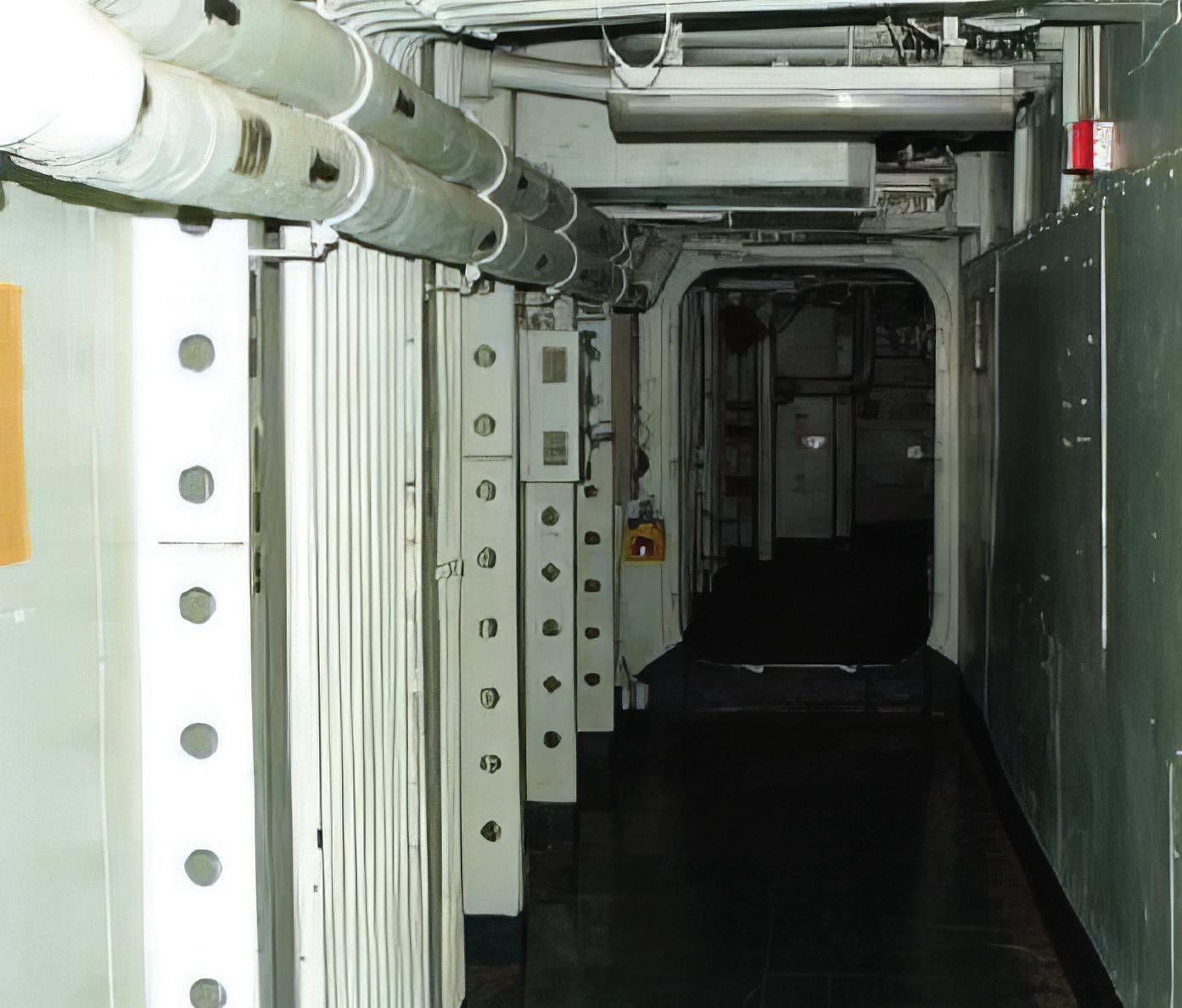
For those brave enough to venture out alone and serious in their interest in paranormal investigation, the museum also offers a “Late Night! Paranormal Investigation.” Participants in these investigations are more hands-off; guests utilize their methods and equipment. Booked at night, visitors will get a brief introduction and lay-of-the-land, from the ship’s paranormal investigator before striking out on their own; the investigation of the ship ends at about 2 a.m.
The USS Lexington Museum can be found permanently docked, just across the ship channel from downtown Corpus Christi. It is also open to the public for non-ghostly guided and self-guided tours as well.

DON’T MISS
Visit Corpus Christi visitcorpus christi.com
USS Lexington Museum
2914 North Shoreline Blvd. Corpus Christi, TX 78402
1-800-LADYLEX usslexington.com
Guided Tours must be booked at least two-tothree days in advance to allow for the scheduling of a guide. Remember, paranormal activity is unpredictable, so there is no guarantee of any encounters. Tickets for “Haunting on the Blue Ghost” are only available in person at the Museum’s admission booths.
17 AUTHENTIC TEXAS FALL 2023
For those brave enough and capable of climbing stairways and exploing multiple compartments, the USS Lexington Museum embraces its haunted heritage with “Ghost Tours” and “Late Night! Paranormal Investigation.”
Scaring Up Fun in Haunted Galveston
by Kathleen Maca
Walk down the streets of Galveston past aging mansions and buildings where generations of people have walked before and you might feel a chill on a warm night, see movement in the shadows or hear a voice when no one is near. Is it a Gulf breeze playing tricks, or something else?
There’s a saying on the island that the dead outnumber the living in Galveston. Some of those dead have refused to leave.
Since I was a child, I have loved a good ghost story. And not much has changed, except that now I’m the one sharing them with others.
After years of researching the history behind tales of Galveston hauntings and tragedies, and countless hours interviewing locals about their eerie experiences for my books Ghosts of Galveston and Ghostly Tales of Galveston, I realized that the truth of local history is far spookier than any fiction someone could create.
Working like a detective in reverse, I started with local tales and traced them backward to find early newspaper accounts, police records and death certificates that verified – and sometimes clarified - details. I’ve even found some first-person accounts of ghost sightings that date back to 1860. It’s no

18 city lights LOCAL
INDEPENDENCE TRAIL REGION
GALVESTON
wonder the subject is nothing new to locals.
So why is Galveston so haunted? For an island no more than three miles wide and about 27 miles long, it has seen more than its fair share of tragedy. The most famous of these was the 1900 Storm which caused the deaths of approximately 8,000 people and still stands as the nation’s deadliest natural disaster.
But other eras have added to the death toll as well: fighting between local Karankawa Indians and Spanish explorers, pirates, multiple yellow fever epidemics, the Spanish Flu, maritime and railway accidents and even a Civil War battle that was fought along The Strand – which is a popular shopping and entertainment district today.
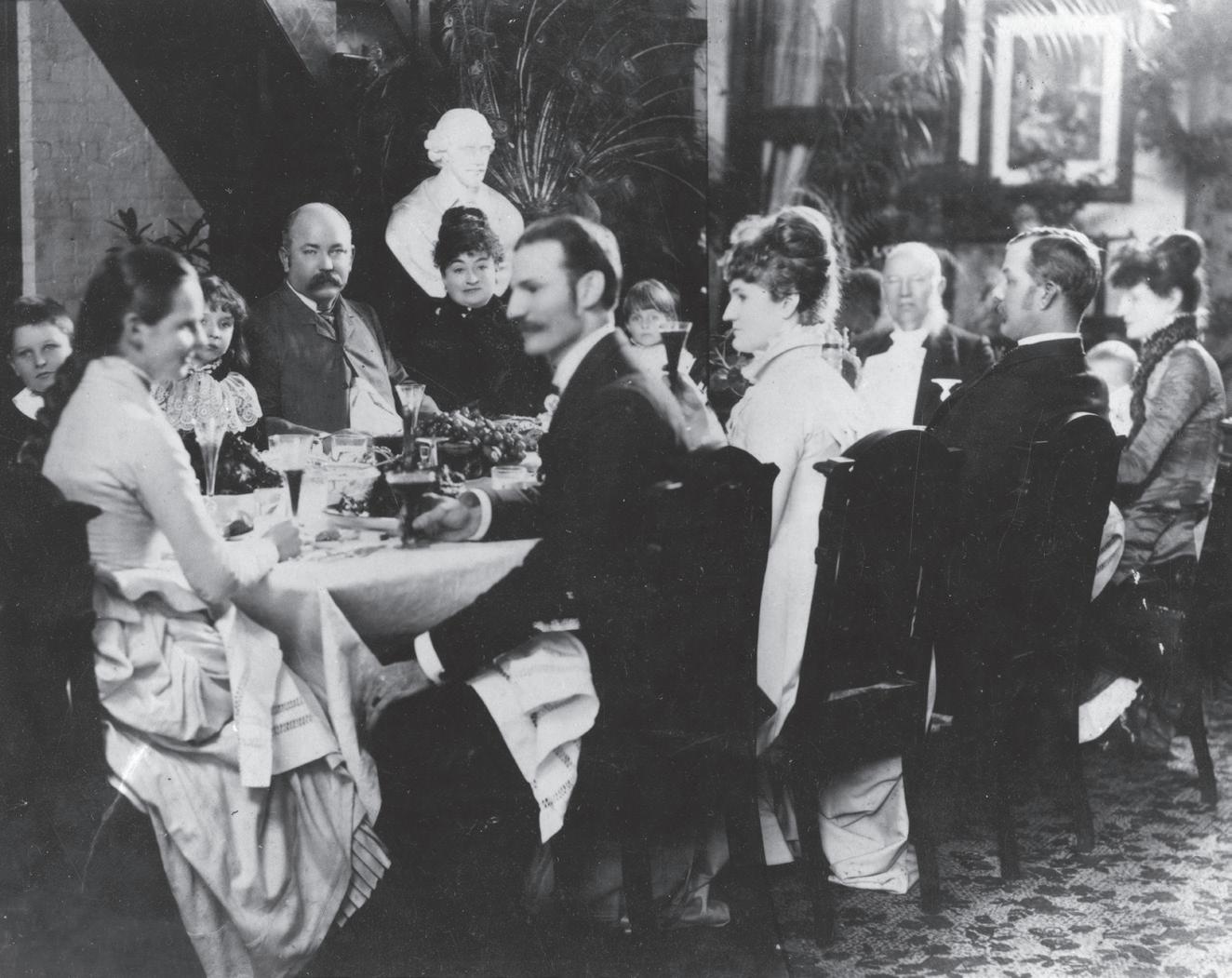
The anger, joy, horror, excitement and confusion experienced by people who lived through these times have left a sort of impression of energy behind. Energies that some people call ghosts.
Some paranormal investigators believe that spirits can draw energy to manifest from water. If that’s so then, being an island surrounded by the stuff, that might explain a few things.
I often think how, because the town has retained so much of its historic architecture, entire districts would be recognizable to someone traveling from the past to the present. Or perhaps they may never have left.
A decade ago, the historic tour homes hesitated to mention any spirit activity on their properties, fearing that those stories might take attention away from the home history itself. That has changed, and
now the lore of the reappearances of former owners is often woven into the tours.
Earlier this year I filmed an episode with the television investigative show Ghost Brothers at the 1838 Menard House, the oldest home on the island. Having been a docent there years ago I have heard many accounts of odd sightings and experiences there such as cold spots, voices, items seemingly moving on their own and shadow figures. But I separate those from stories like the often-told legend of the bride (or Mardi Gras ball guest, depending on who is telling the story) falling down the stairs, which I’ve investigated and proven never happened.
Where can you find more “reliable” hauntings in Galveston? The simple answer is – everywhere.

Audra, the unfortunate “ghost bride” of the Grand Galvez hotel is one of the island’s favorite stories shared by locals. Her tale centers around a fiancée reportedly being lost at sea, and Audra hanging herself in despair. What could make the story any more tragic? Her fiancée, who had been rescued by a passing ship, returned soon after her death. She still wanders the halls of the elegant hotel, along with a number of other ghostly regulars. Two days a week visitors can take a tour with Melissa Hall, the inn’s ghost expert, and hear about the scores of spirits who have seemingly checked in to the hotel and liked it so much that they stayed.
Most native Galvestonians embrace the haunted culture of the island, even in their own businesses and homes. Just ask any shopkeeper if they have a

19 AUTHENTIC TEXAS FALL 2023
Left Aging structures in Galveston – from businesses to homes – can tell a tale for those willing to investigate. Above From its present to its gloried past, Galveston Island has seen its share of tragedy and glory. An interactive way to enjoy the stories of local spirits is by taking a ghost tour.
spirit dwelling within their walls, or if anything unexplainable has happened recently. Chances are they will stop what they are doing to share a recent occurrence sure to send a shiver up your spine.
Tina’s on the Strand is a perfect example. The resident ghost of this upscale boutique and gift shop is one of a little boy they call Daniel, who plays with their signature square candles as if they were blocks and causes other harmless mischief.
Further down The Strand you’ll find the Mysticatz shop, whose owners have captured activity on night cameras for years.
Other locations, like Hendley Market, are reportedly home to multiple spirits including 1900 Storm victims and Civil War soldiers.
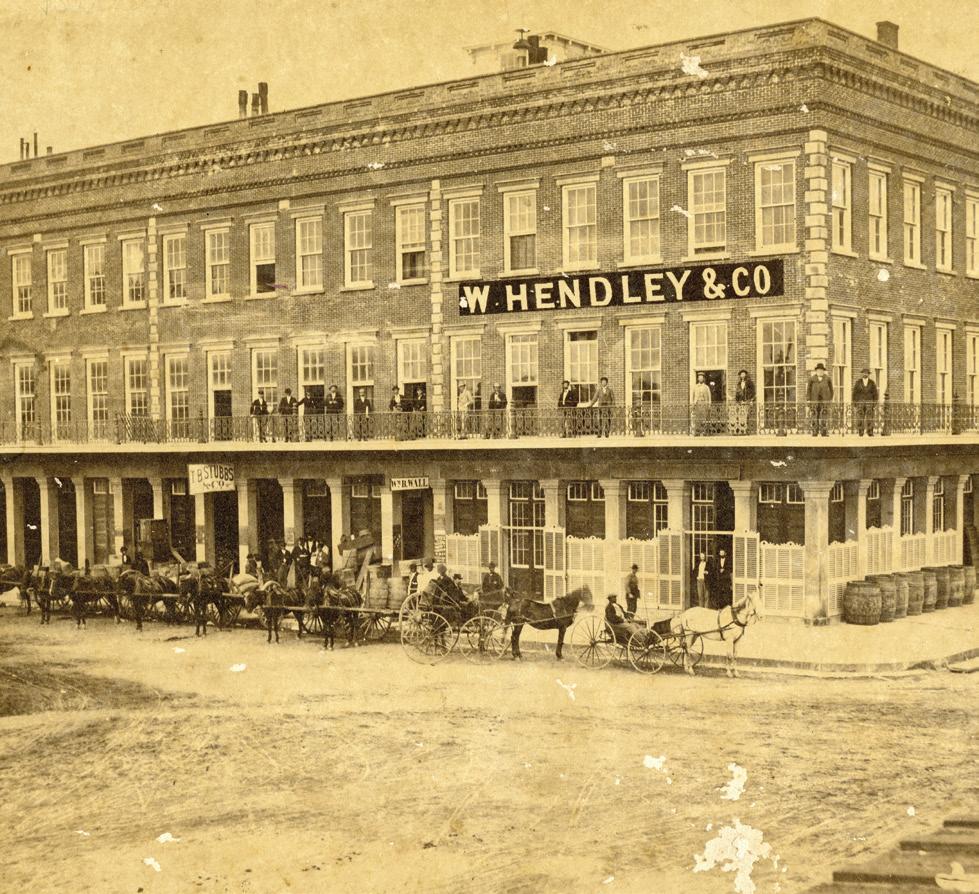
On the creepier side, the poltergeist of a decapitated sailor occasionally makes it known he is not happy about being stuck at the Galveston Railroad Museum in back of Shearn Moody Plaza. Poltergeist, which is German for “noisy ghost,” perfectly describes his grumpy behavior of knocking things off of shelves, glaring at workers from train cars and stomping through the lobby.
Even the brightly lit Walmart on Seawall Boulevard seems to be inhabited by the ghosts of nuns and children who perished in an orphanage that once stood on the same ground, but was destroyed by the famous hurricane. Not surprisingly, the toy section is the center of most of the activity.
But the most interactive way to enjoy stories of local spirits is by taking a ghost tour. As the music on
The Strand fades and doors lock, a guided tour will lead you beneath the glow of gaslight street lamps, to peer into the windows of darkened shops while hearing accounts of spirits that linger around every corner.
Have my guests and I ever experienced the unexplained during a tour? Definitely. But even on quiet nights, unseen presences can be felt providing goosebump-worthy fun. Visitors don’t have to believe in ghosts to have fun on one of these tours, but they might change their minds by the time they go home.
In addition to the danger of a ghostly encounter, be aware that not all tours are created equal. A good resource to find a reliable tour is to ask the Galveston Island Visitor Information Center at 2228 Ships Mechanic Row for recommendations.
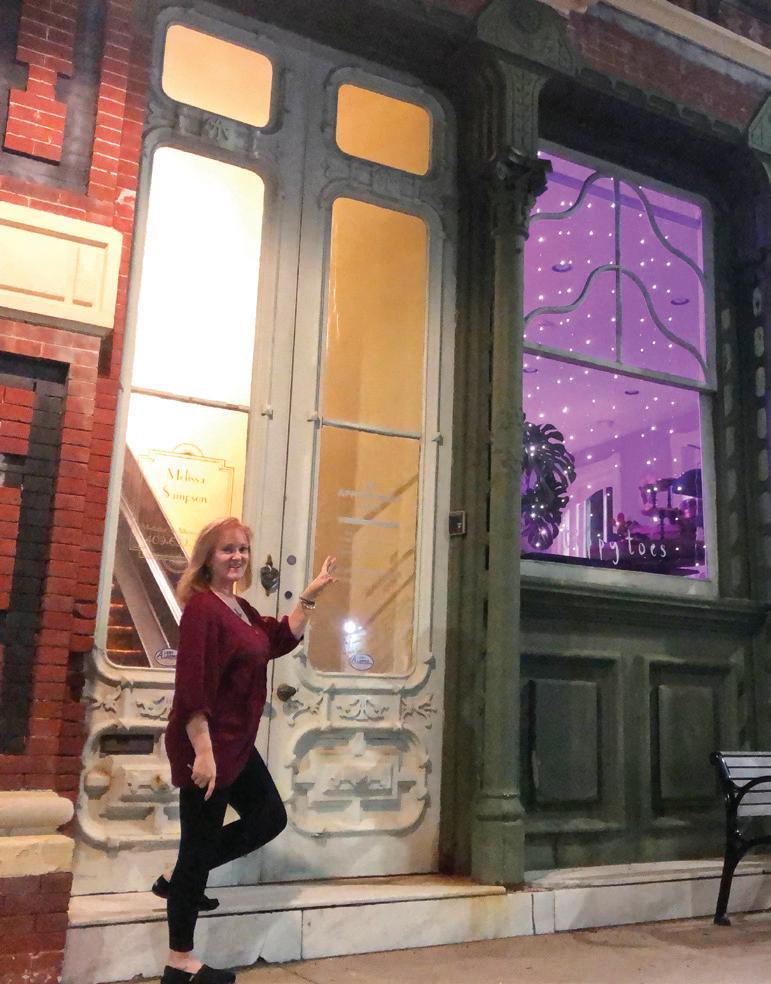
Those who are interested in sordid history, but skittish of ghosts, will want to check out Kimber Fountain’s Red Light District walking tour. The author of a terrific book on the subject, she’ll share stories about the notorious district from a bygone era where “hourly love” was available for a price. Do ghosts really exist in Galveston? That’s for visitors to decide for themselves. If you’re ready to venture into the island’s darker side, check out these recommendations. Come with an open mind and you may leave with your own story to tell. Just be prepared to expect the unexpected...and don’t say I didn’t warn you.
You may never look at Galveston the same way again.
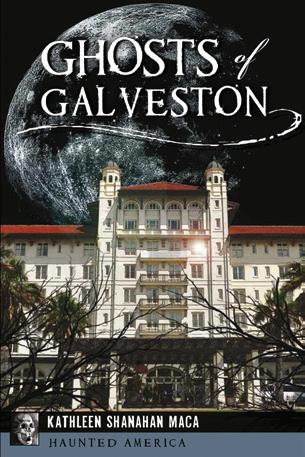
TOURS
Kathleen Maca’s Strand Ghost Tours kathleenmaca.com
Grand Galvez Ghost Tour with Melissa Hall grandgalvez.com
Kimber Fountain’s Red Light District Tour redlightdistrict toursofgalveston.com
HAUNTED STAYS
Tremont House 2300 Ship Mechanic Row thetremonthouse.com
Grand Galvez 2024 Seawall Boulevard grandgalvez.com
HAUNTED RESTAURANTS
Riondo’s Ristorante 2328 The Strand
Shark Shack Beach Bar & Grill 2402 The Strand Hubcap Grill 2021 The Strand Grand Galvez Monarch restaurant & Founder’s Bar 2024 Seawall Boulevard
Tremont House Blum & Co. Café 2300 Ships Mechanic Row
HAUNTED SHOPS
Mysticatz 2021 The Strand facebook.com/Mysticatz
Tina’s on the Strand 2326 The Strand tinasonthestrand.com
Strand Brass 2115 The Strand strandbrass.com
Hendley Market 2010 The Strand hendleymarket galveston.com
20 city lights LOCAL
Ghosts of Galveston by Kathleen Maca
Above Hendley Market is reportedly home to spirits from the Civil War era to the Great Storm. Author and tour guide Kathleen Maca has a different way of looking at and experiencing Galveston.
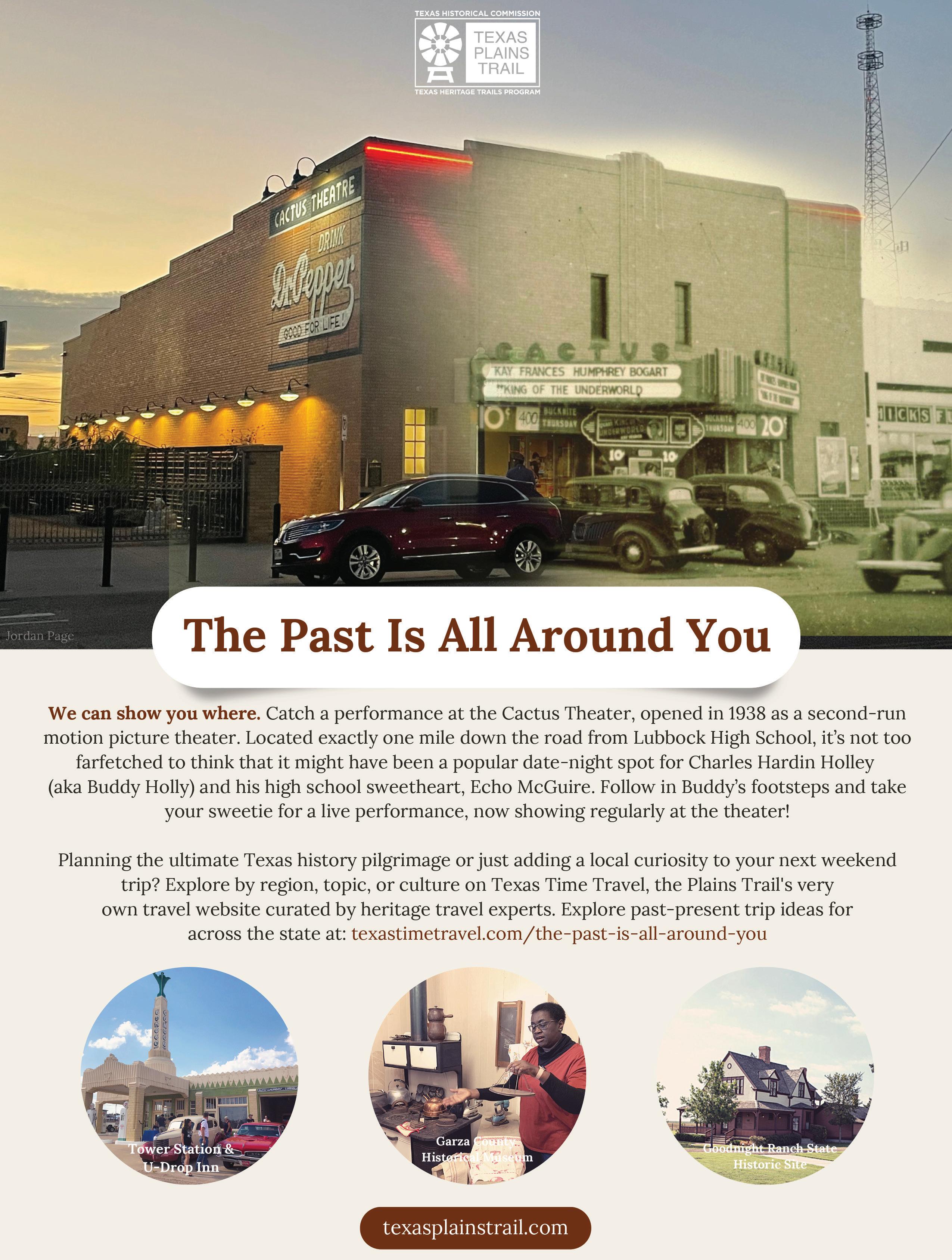
21
Flores Funeral Home
Founded and Family Owned since 1913
by Mallory Laurel
Carved from a humble beginning, today Flores Funeral Home stands among the Valley’s oldest businesses and among the most respected mortuary establishments. Epitacio Flores was originally a cabinet maker who began using his carpentry skills to make wooden caskets. Flores Funeral Home began in 1913 when Epitacio and his son, Jose R. Flores, founded “Agencia de Inhumaciones, E. Flores y Cia” which translates to “Burial Agency, E. Flores and Co.” As the business grew, they purchased a Model-T Ford; Epitacio handcrafted a curtained, glass-sided box on the back of the vehicle, creating their first hearse.
Following his father’s death in 1935, Jose took over as sole owner and renamed the business “Flores Funeral Home.” Eventually Arturo, Adalberto, and Jose Jr. – Jose’s three sons – joined the family business. In 1959 Jose R. Flores, Jr., became the first Flores to become licensed as an embalmer. He took over as funeral director in 1964, formally incorporated the business, and moved it to its current location. His two daughters, Veronica
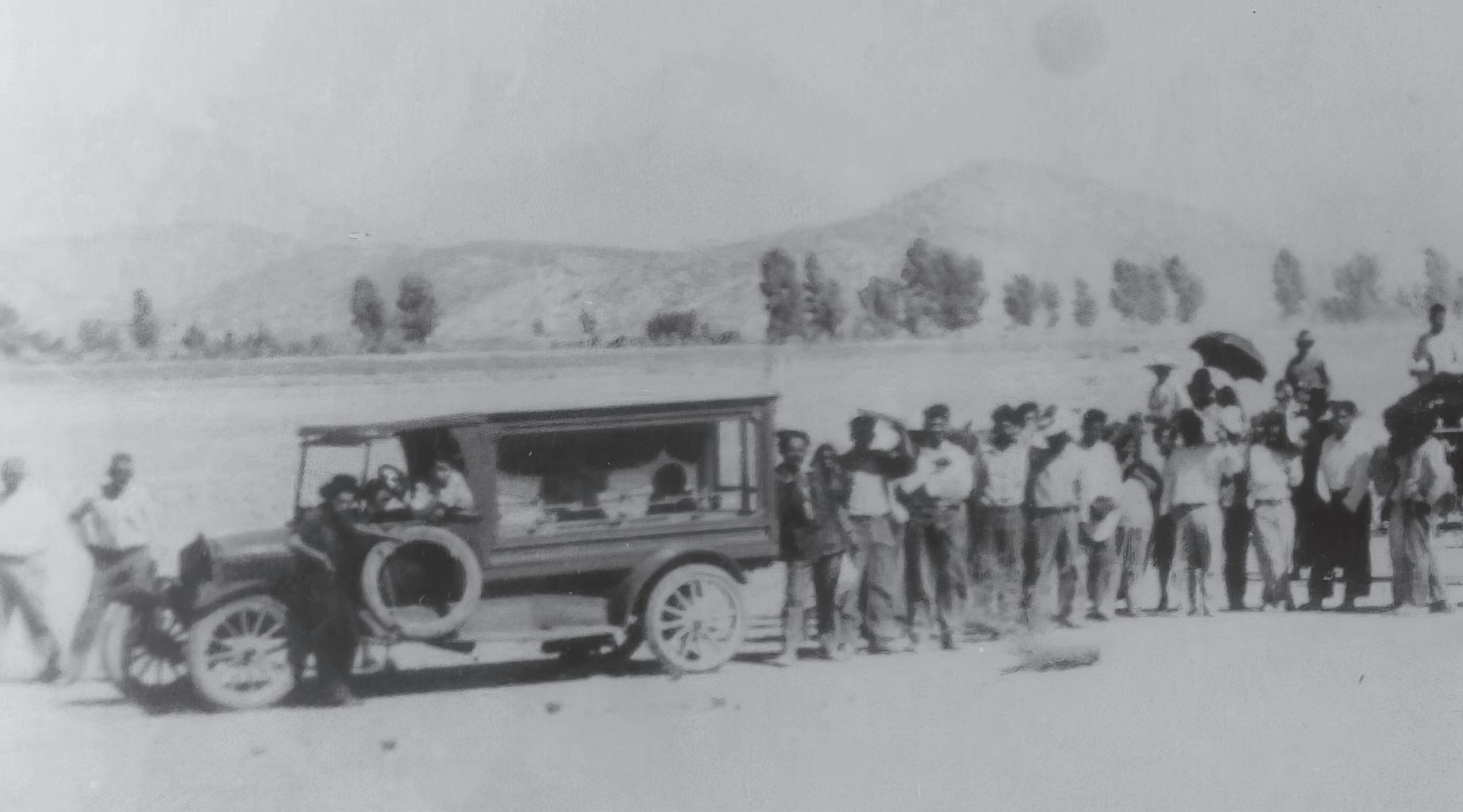
and Connie, followed in his footsteps. Veronica I. Flores received her embalming license in 1989 and became the first female funeral director in Mission. In 2005, Connie O. Flores became the fourth-generation member of the family to become owner and CEO of the company. She and her husband, Ricardo Renteria, continue to run the business today. It is the oldest continuously operating business in the City of Mission.
Flores Funeral Home provides a choice of traditional funerals, viewings, and burial services; cremations with memorial services; direct cremations; and/or immediate burials. While all funeral homes pride themselves on excellent service, Flores believes that the “value proposition” is what sets them apart. Excellence in the value of the services provided means the highest quality experience possible for clients and their families. Funeral director Ricardo Renteria takes every call, meets with family members and makes sure everything is coordinated according to their wishes. Nothing is outsourced or left for them to figure out. Flores uses only the best brands (Batesville and Matthews Aurora), offers
22 city lights LOCAL
TROPICAL TRAIL REGION MISSION
Flores Funeral Home 219 South Mayberry St. Mission, TX 78572 (956) 585-2611 floresfuneralhome.com
Above Aspiring funeral directors Epitacio and son Jose crafted their first hearse by making a curtained, glasssided box on the back of a Ford Model T.
“white glove services” for funeral and burial services, and pays top dollar for their licensed embalmers who work in a state-of-the-art moratorium.


Renteria says, “A wedding takes six months to plan; with a funeral, you have three days. This is the last time the family will see their loved one. We make sure the services we provide are of the highest possible quality because we want that

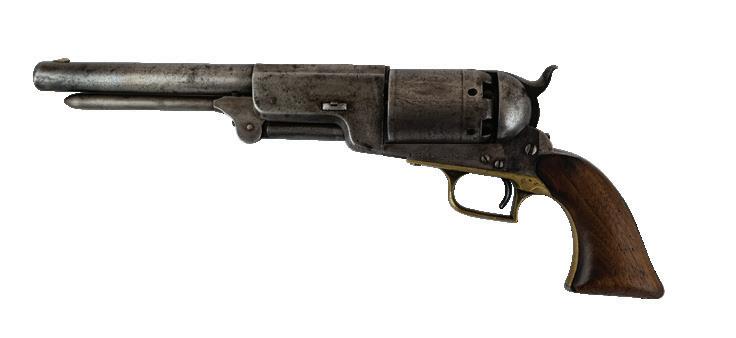
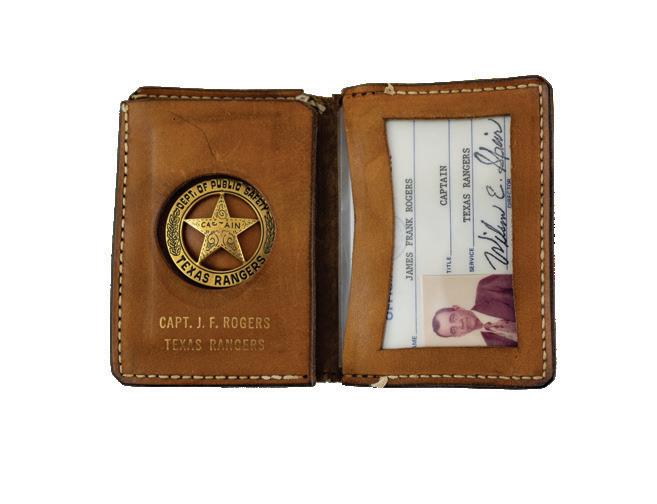
moment to be meaningful. We want them to be able to have closure, to say goodbye.”
According to Renteria, the funeral industry has shifted in three major ways. First, in the olden days, funerals were more about the deceased; today, it’s more focused on the family. The largest emphasis for funeral homes is helping the family grieve, to get closure, and to say goodbye. Second, in the last two decades, there has been an industry-wide shift from traditional burials to cremation. The rising costs of burial plots, along with shifting religious and popular views, has largely expedited the move toward cremation services. Third, the post-COVID world has forced the industry to modernize. Customers do a lot more price-shopping online than before. Flores has adapted by modernizing their website, social media presence, and incorporating video streaming into their service model.
Mission was founded in 1908; Flores Funeral Home was established in 1913. Renteria continues, “We’ve grown with Mission. Our family has been here and been involved with the city for a long time. Generations of the Flores family have served with the Chamber of Commerce. The people of Mission know us because we’re a part of the community. We take pride in that.”
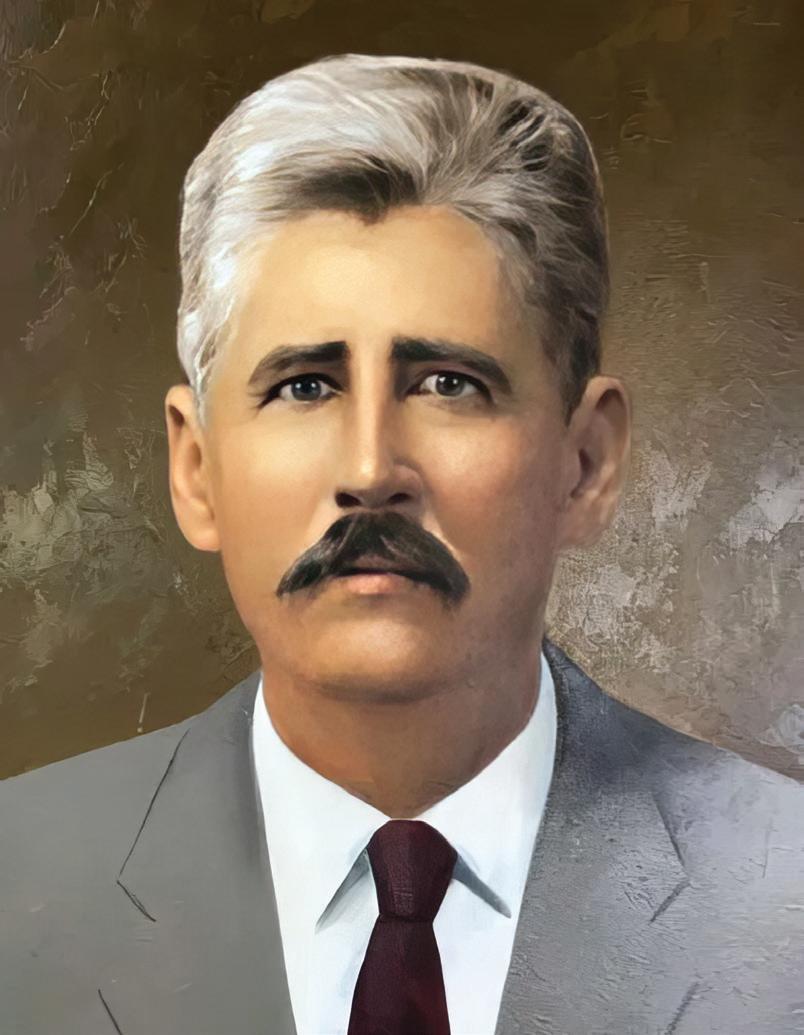
In the 100-plus years that Flores Funeral Home has been in business, some families have been customers since 1913. Over the years Flores has fostered many deep and lasting relationships with churches, cemeteries, and other local institutions. They are a deeply integrated member of the local community.


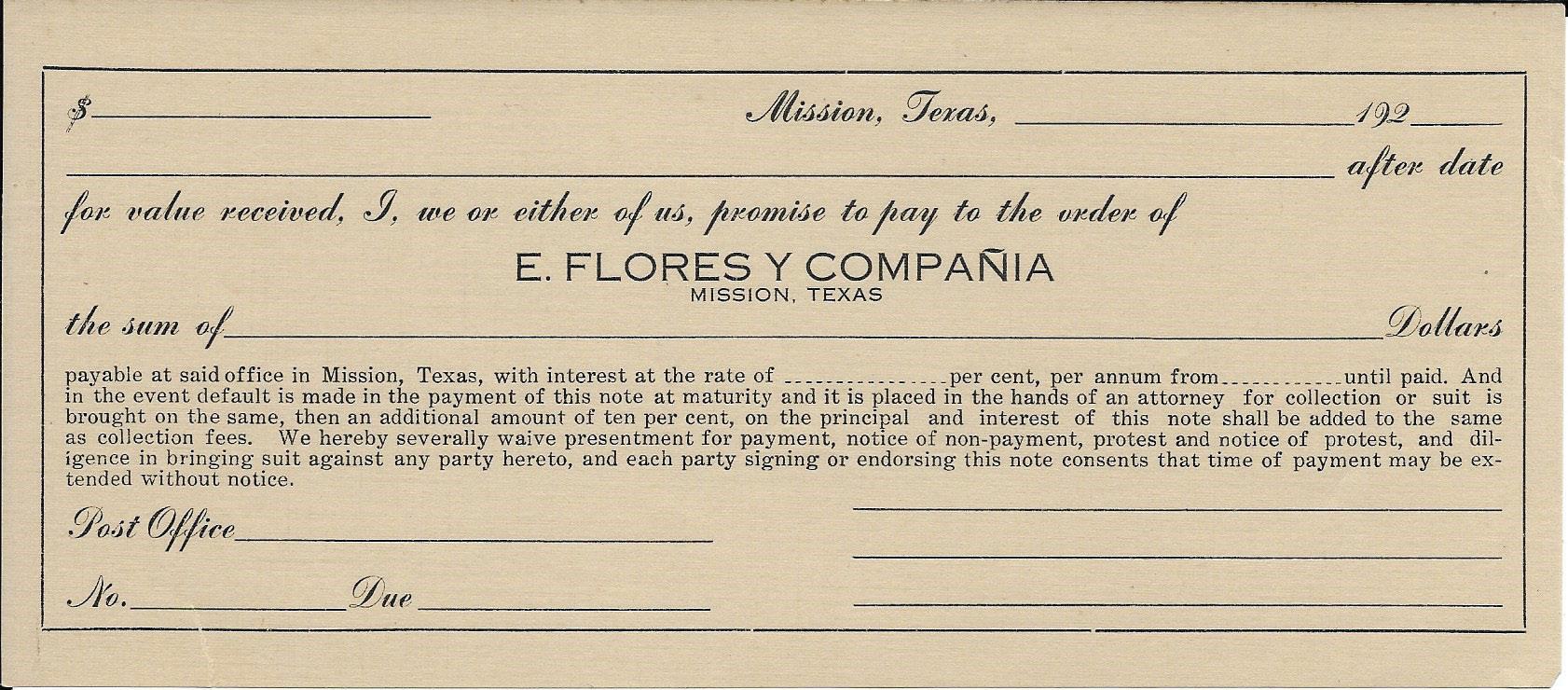
23 AUTHENTIC TEXAS FALL 2023
THE OFFICIAL COMMEMORATIVE BICENTENNIAL GUIDE Purchase the Only Official Texas Rangers Bicentennial Guide TODAY! authentictexas.com/texas-rangers
Above Cabinet maker Epitacio Flores who founded the Flores Funeral Home in 1913. Right An early promissory note document for the Flores Funeral.
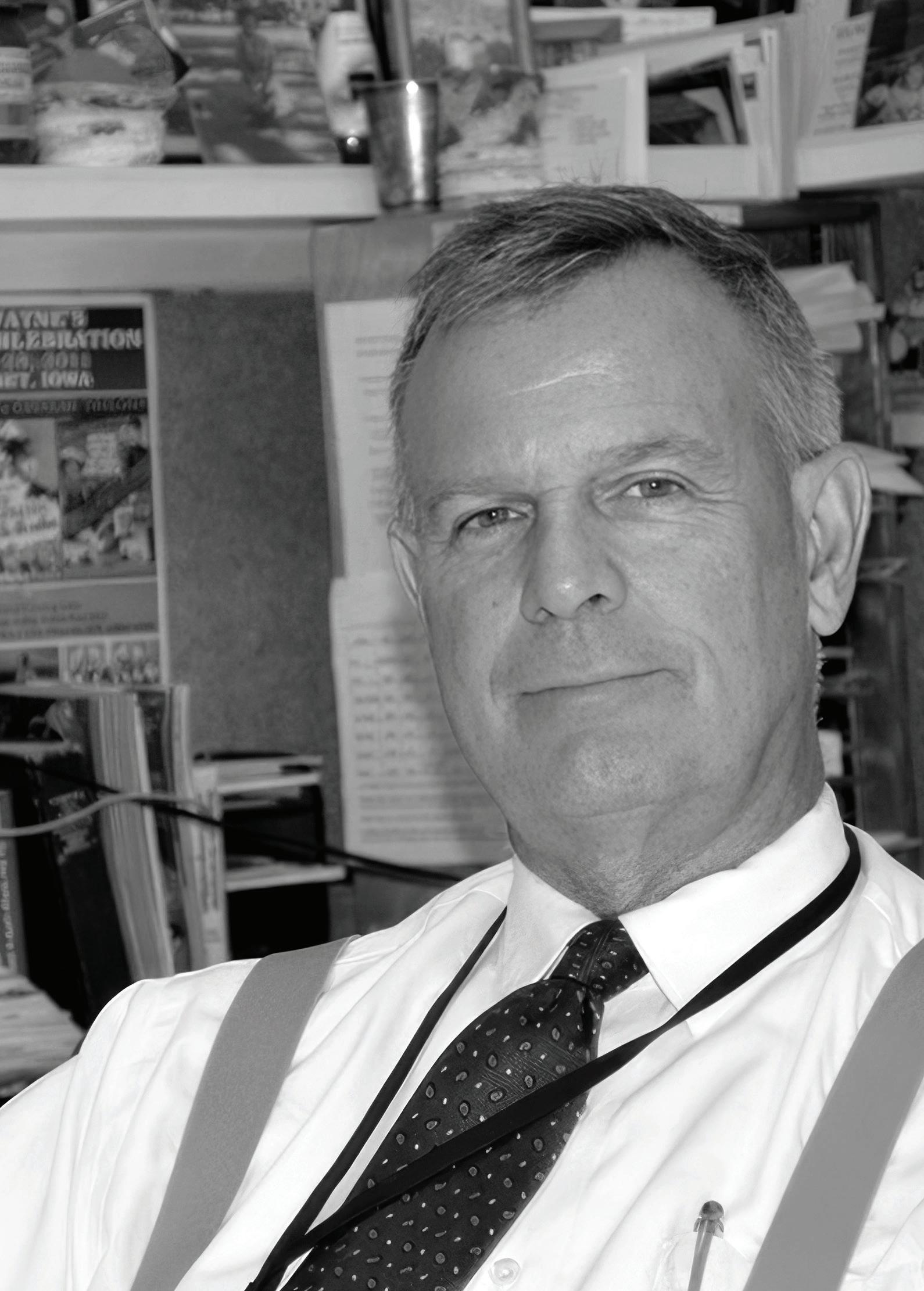
BOB BLUTHARDT
DIRECTOR, FORT CONCHO
NATIONAL HISTORIC LANDMARK
Like many before him, Bob Bluthardt ventured West and came to Texas looking for opportunity. Over forty years later, Bob is an acknowledged expert in baseball and Texas frontier history and is proud to call Texas home. He has served on the boards of many local and statewide organizations to include the Society for American Baseball, the Texas Association of Museums and Preservation Texas. He is a long-time member of the National Trust for Historic Preservation, the American Association of Museums and the American Association of Living History Farms & Museums. He has served in an ex officio capacity on the Texas Forts Trail board of directors since its establishment in 1998. We’re pleased to count Bob as one of our state’s “authentic people” and hope you enjoy getting to know him better through the following interview.
25 AUTHENTIC TEXAS FALL 2023
AUTHENTIC PERSON
Tell us about your background.
I was born and raised in Boston, Massachusetts. I was a true city kid just as my parents were, and as were their parents. I grew up in an Irish Catholic neighborhood; we were two blocks from the subway. My dad was a fire captain. Mom worked at a downtown department store. I attended city schools. It was a great place to grow up.
There were great opportunities that I now look back at and am kind of jealous. In the late 1960s, I could walk down the street, hop the train and be at Fenway Park in 40 minutes. In the winter, I could walk down the street, take two trains and be at the Upper Boston Gardens in 38 minutes. Today, you know, if I want to go see a ball game – it’s “let’s see who’s playing,” “where’s the nearest motel” and it becomes a two-day trip!
I never thought I’d leave. Like most kids in the ‘70s, I really had no idea what I was going to do. After high school I went to Brandeis University in Waltham, Massachusetts – a nice conservative Catholic school. I had two majors: American History and Latin.
Upon graduation, I just thought I knew a lot. So, I put my resumé together and sent it out to 125 museums. Four responded; I got an interview with two of them. The one that hired me was the Salem Witch Museum which was just a tourist trap. But they had some exhibits, and they also ran a pseudo-colonial house nearby. And they hired me in January of 1978 to live in the colonial house – which was kind of cool – and give tours on the weekend and work at the main building up the street. Starting in the summer season, I worked full time; the housing was free, and I thought it was great. And then in October, they said, “Well, now you on unemployment and we’ll pick you up in the spring.” And I said, “No, that’s not the way things work.”
In a serendipitous moment while walking down the street, I met my high school history teacher who asked, “what are you doing?”
Then he asked if I went to Brandeis?
Yes.
Didn’t you take Latin?
Yes. And I’m always looking for something.
I’ll bet the Latin School will
pick you and it’s $36 a day. Pretty good money and no heavy lifting. It’ll keep you in beer and skittles until you figure what to do next.
So, I went up there, signed up and it turned out the Boston Latin Academy had a Latin teacher who was sick. I was picked up the next week. She died the next month, and I picked up her program for the whole year. It was October ’78; I signed what’s called a provisional contract with the city school system, and I was teaching five years after I graduated in the same high school.
The next year, they didn’t have a slot for me, so they moved me over to the other exam school in Boston – Boston Latin School, which was two blocks from my house; I could roll out of bed, walk up the street, teach and be back in my house while other guys were still just getting on the expressway.
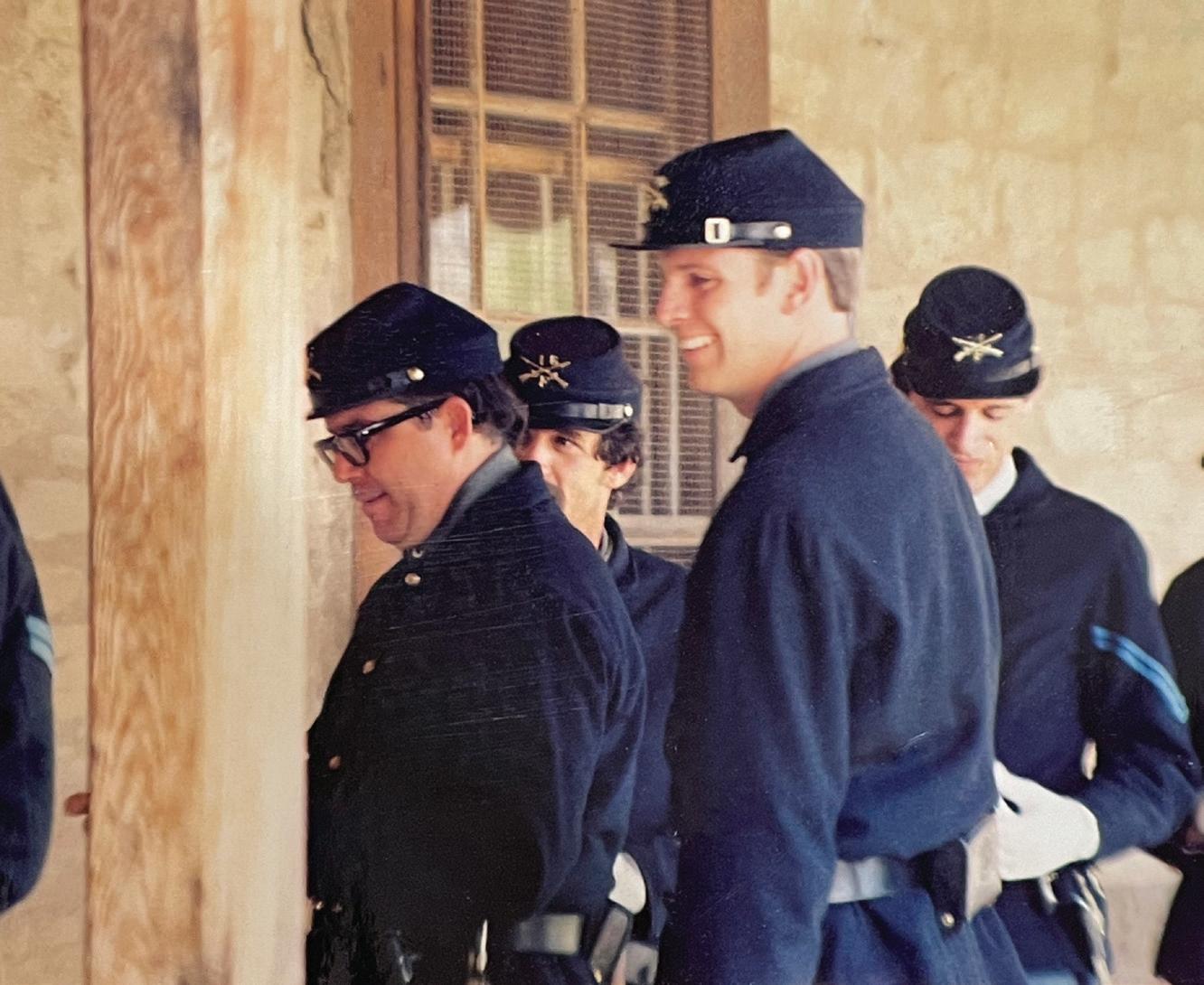
After two years as a schoolteacher, I thought, “This is good but there has to be another way to make a dollar and I’ve always liked museums.” So, I decided to go to graduate school and applied to six programs. I was accepted at the Cooperstown Graduate Program at the University of New York, which was prestigious
at the time. But I turned it down because I didn’t want to spend two years in upstate New York, even though the National Baseball Hall of Fame and Museum was just round the corner.
Instead, I attended The George Washington University in Washington, D.C. I liked that because it was in a city, and it was a one-year accelerated program. Money was an issue, and the program was geared towards education and programming; it was really a teaching certificate in museum work and was more of what I wanted to do. It was 198081 – a great year to be in D.C. The hostages in Iran came home and there was a big parade; Ronald Reagan was inaugurated.
GW Bush and Texas with hot stuff in 1981; Texas was the place to be. Oil was $35 or $40 a barrel which today would be like $200 a barrel. The Cowboys were really good. And J.R. was the scourge on TV. Texas was it.
So, I put out my resume and landed several interviews in Texas. One was in Lubbock but that was a part time or six-month job. I didn’t want to do that. Then I spent a weekend in Snyder where there was an art museum – which eventually was disbanded. It would have been interesting. It was a well-paying job and came with an apartment. The people in Snyder were really nice. But I just wasn’t feeling comfortable.
After Snyder, San Angelo looked like New York City! There was history, folks are nice, the pay was more than I was making in Boston, and they wanted me. I thought, “Yeah, I could do this for a couple of years.” The duties for the education director were director of education programs and tours, and eventually living history and teaching, just all the fun stuff. I hired on January 27, 1982.
When I left Boston, it was 15 degrees and a blizzard. I got to San Angelo, and it was 82 degrees and sunshine. I thought, “My
26
Bob Bluthardt in the early 1980s as education director with other reenactors. Courtesy Bob Bluthardt
God, I’m going to heaven!”
It was like any adjustment. I mean, it was a different age. There was no Internet – entertain yourself. It was a lonely first year or two. I was single and didn’t really have anything; I had some books and clothes, but I mean, I didn’t bring any furniture. But the work was good, and we were very busy.
Then in 1995 the assistant director retired. I was not the logical person, but I was the second in terms of seniority and had the most experience in various things. I was kind of enjoying what I did but then I was 40 years old and thought if I don’t make a move to up my game, I may not get that chance. So, I was promoted, and I learned all about the money and the maintenance and the management, the politics of boards. Just all the stuff that really runs the show.
And then the fort director –John Vaughn – had a stroke in the spring of 1997. I was made acting director. John medically retired that following January. The City posted the job, but they pretty much knew I was interested, and I was selected. So, I was in the right place at the right time; the
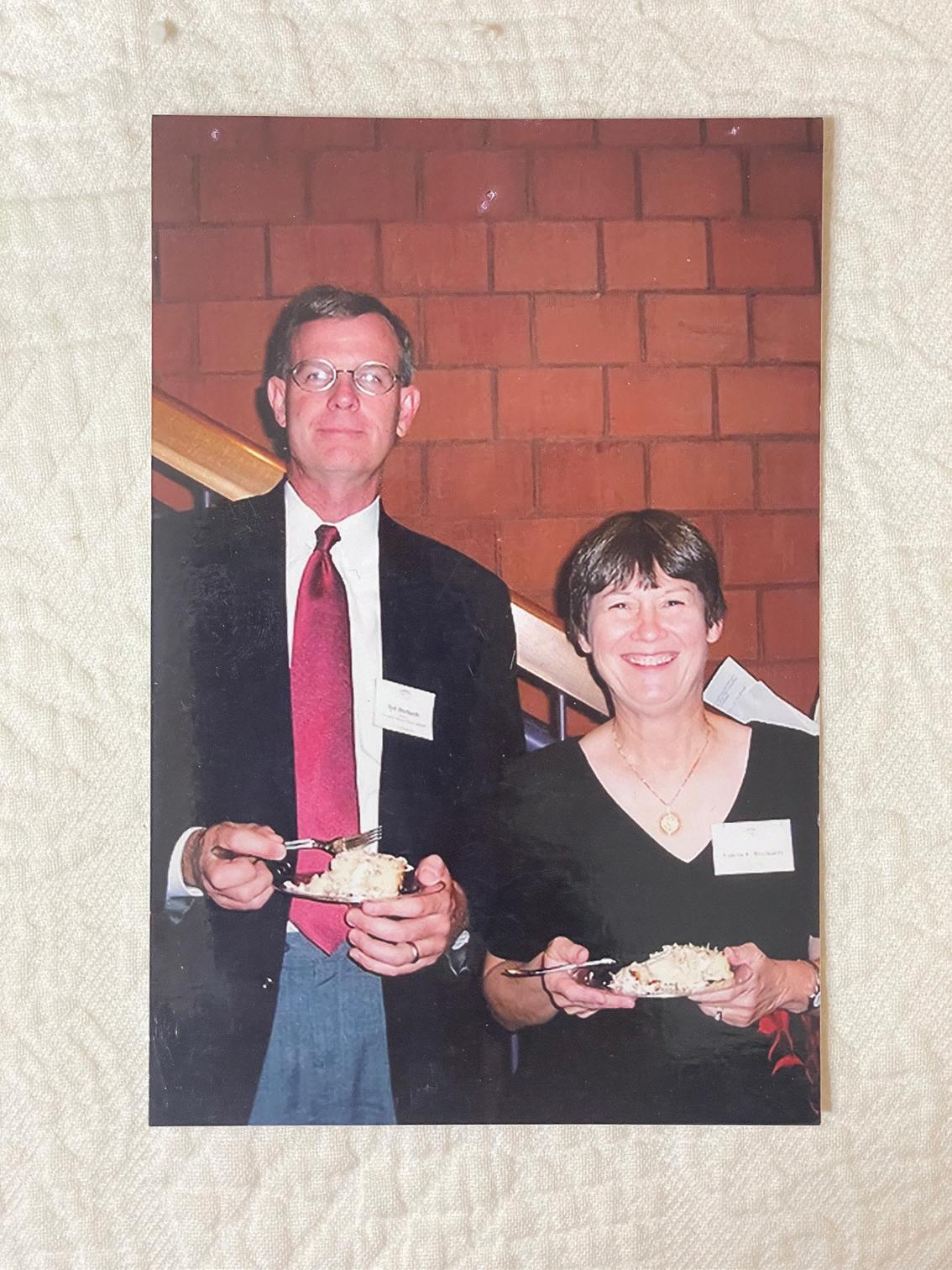
two years I spent as assistant director was good preparation. I don’t think I could have done it without that experience. As the director you have to follow the money, you’ve got to know how to do a budget, you’ve got to know who answers to who at City Hall – just all those little things that no one ever sees.
So, when you came to Texas, what did your family think?
I think a lot of folks were shocked because I was pretty provincial and pretty set my ways and pretty much a kid. I think everyone was utterly and totally flabbergasted and shocked that I came out here and certainly didn’t think I would last. I did, and in retrospect, life is too short to worry about where you haven’t been.
I made a career here and I’m proud of it. And maybe I would have done the same back East, I don’t know. But I’m proud of where I am, proud of what I did, proud of the people I’ve worked with and no regrets.
Yes, I missed the seasons. I missed the pizza. I miss – sometimes – the sports. I don’t miss
the politics and the traffic.
Texas has been good to me. San Angelo has been good to me, and I hope I’ve been good for the city and the state.
How do you explain Texas when you go back East?
That it is different. You can’t discount the fact that it was an independent nation. You can’t discount the fact that it has its own brand. It’s not necessarily accurate, but what brand is?! Cowboys and oil wells. Cowboys and Indians. Cattle and rustling.
Texas is now 93 or 94% urban, but it’s the cowboys and Indians and the oil wells that define it. The folks who pay attention know that Texas is in the forefront of technology, medicine, real estate and communication. Yet several places promote themselves as the Texas you really expect. It’s a whole different way of looking at things. Not better or worse than some places, I think, but different.
And Texas is big. Yes. (We’ve never heard of Alaska.) It is big and it’s hard to explain to people. After I moved here, one morning my phone rang at six in the morn-
ing and it’s my mother.
“Are you alright?”
“Yeah.”
“You’re alright?”
“Yes.”
“I just heard there was an earthquake in some place called Van Horn.”
“Well, I’m not anywhere near there. Van Horn is west of us by 300 miles.”
“But you’re alright?”
And I said, “OK. You’re in Boston, right?”
“Yeah.”
“300 miles from you is Baltimore.”
This would go on for years until she figured out the geography. Hurricane strikes Corpus Christi; she called. Tornado hits Amarillo; she called. It’s hard to explain to people distance; you know, it’s measurable in hours and sometimes in days. And try telling people it takes all day to get out of the state!
Texas is huge, it’s a huge thng. And with its many different territories, there are different characters. In the end, what state doesn’t have a different character, East or West or North and South? If you’re in Chicago, downstate has the rubes. Well, Texas has so many different regions! That’s what makes it so much fun.
But it was definitely cultural shock and the best advice I ever got was from a college professor who said, “Just look upon this as a great big circus – or theatre –and enjoy it every day.” And that’s what I did.
When I came to Fort Concho, I didn’t know Grierson or Mackenzie from a bucket of bullets! I didn’t know any of this stuff, and part of my job was to get smart fast, so I did what anyone is supposed to do in a new job: I read everything I could get my hands on! I still do, even though most of what I do now is administrative. I still read as much history as I can.
I bought my very first car in Texas. Who needs a car in Boston? I didn’t have as many
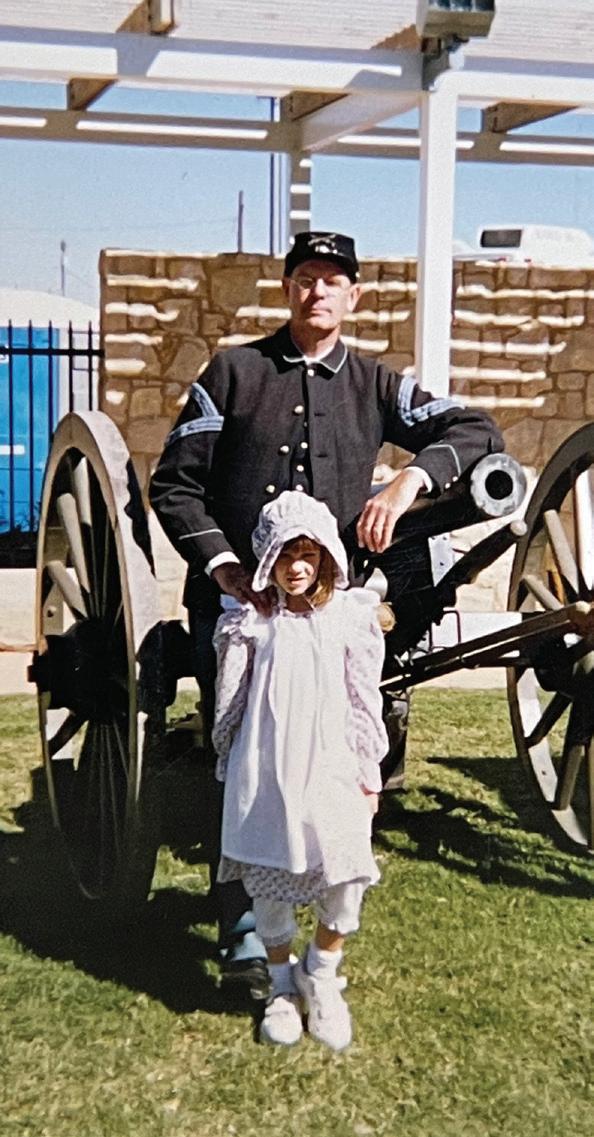
27 AUTHENTIC TEXAS FALL 2023
Right Bob Bluthardt enjoying a social function with his wife Valerie.
Far Right Bluthardt with his daughter Carolyn dressed for the frontier time period.
weekend duties, and I wasn’t married. I would just drive and go places. I’m proud to say I’ve probably seen more of the state than most locals – and that’s partially my job. It is a great state.
As the director of Fort Concho, you were part of the resurrection of the Texas Forts Trail and were on the original board. What are your recollections?
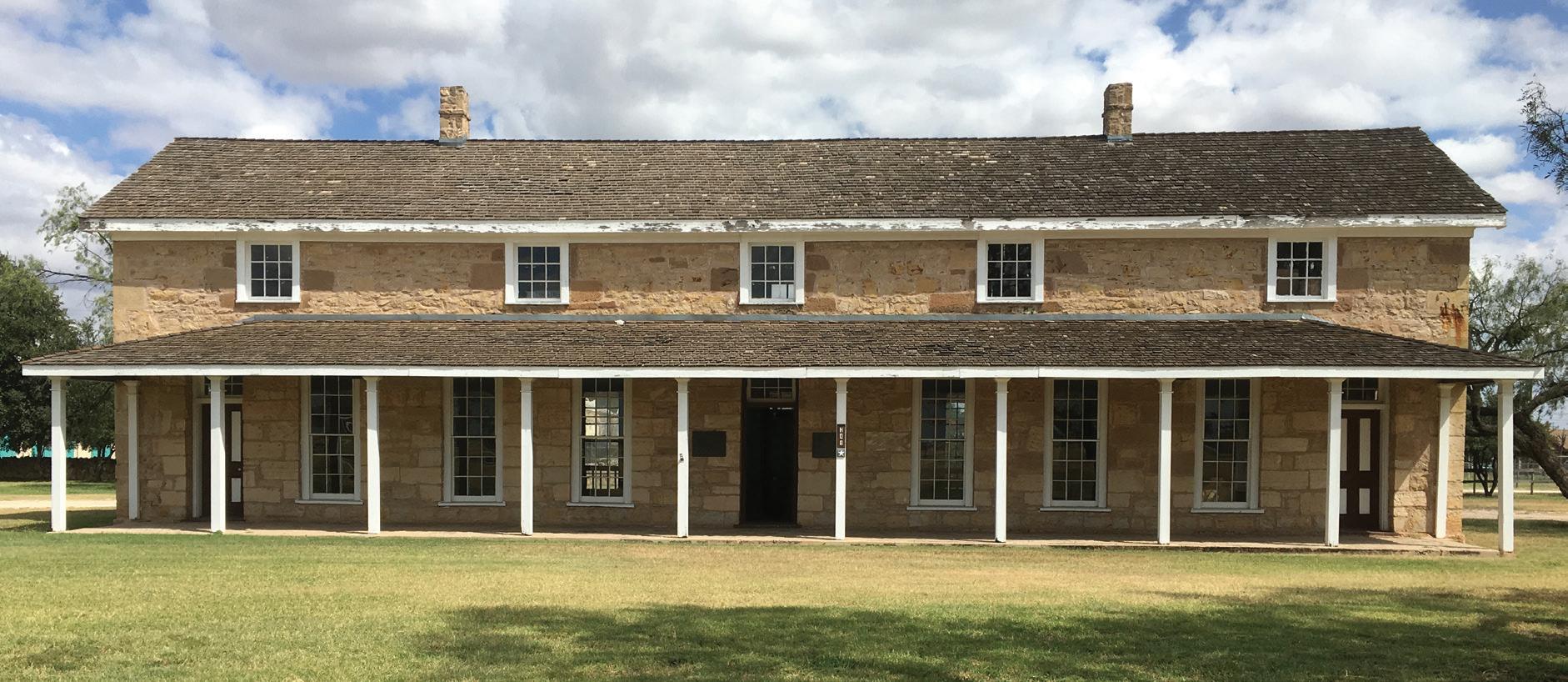
In the late 90s, I had vaguely heard of the thing. The highway signs were still around. But for many years tourism was not treated with the utmost respect. Well, eventually tourism “came out of the wilderness” as Churchill would say, and people began to realize that tourism was an economic engine, a job creator. A brand maker. And in Texas, it was of course, HemisFair in 1968 – although the Texas Centennial in 1936 helped a little bit – that on the state level, people began to realize that tourism was really something.
Here in San Angelo, Marion Szurek was the head of the convention and visitors bureau and Marion and I had worked on a variety of things. She said these tourism trails are going to be resurrected and there’s going to be a board of directors. The Forts Trail was tagged to be the program’s pilot project. So, we agreed that I would serve and from the beginning, I’ve been involved with the heritage trails program and the Texas Forts Trail.
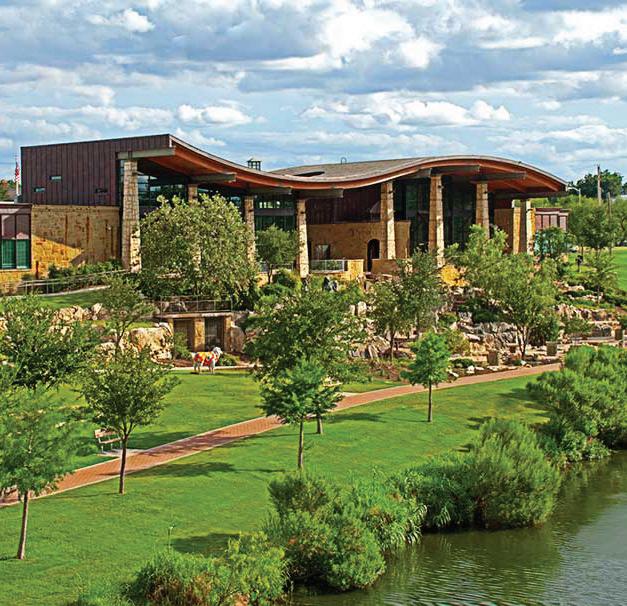
Truth be told, at Fort Concho we were already cross promoting and collaborating in a sort of informal way. When I was the education director, I tried to keep in close touch with all the other forts. “What are you doing? Let’s not double book a date. Let’s help each other out with events. I can send my Calvary to you if you send me your artillery.”
This is the unique thing about tourism and that’s hard for folks to understand. If you’re at Fort Concho and our guides hear you’re headed west, we can say ok, get off the Interstate in Fort Stockton; they have a nice exhibit there. Oh, you’re going north and east? OK, go to Forts Chadbourne, Griffin, Richardson or Belknap. You’re going to the border? OK, go to Forts Brown, Ringgold, Macintosh or Duncan or Clark. We lose nothing and no reasonable person can argue against the benefits of cross promotion.
What are your thoughts on ghost tourism?
You can’t be a snob when it comes to promoting and getting people interested in history. This gets to a broader thing that you just don’t put your shingle out and say, “history here today.” We do history through music, history through art, history through food. We do history through bike tours and sports. We do history
through paintings and sculpture programs and talks – through special exhibits, ghost tours and Halloween tours. We have many tools in the toolbox and if we get somebody interested in the history, that’s good. You’ve got to make it fun. You’ve got to make it interesting, relevant.
Yes, we get people who aren’t particularly interested in history, but they might like a Chuck Wagon breakfast. They might like a Western painting. Or a Western song. They might like old time baseball. They might be interested in ghosts and ghost stories –are there ghost stories related to Fort Concho? There are a couple.
There’s “Dead Ellis,” Sergeant Cunningham, Ranald Mackenzie, but perhaps best known is Edith Grierson. That’s a story within |a story within a story and just so sad.
Again, ghost tourism is one of the tools in the toolbox – not the primary one – but if it gets people interested in the fort’s history, the buildings, the life of children on the frontier, sanitation and everything in between, then good.
Any final thoughts about Texas?
Geographically, ethnically, culturally, I like it all.
One piece of advice I have for somebody who’s going to move. First, you’ve got to decide that you’re going to be part of the
community. And then learn as much about it as you can about it. You feel comfortable when you know your community’s history. Put your roots down, even if it’s only going to be for a short time.
How many people in Dallas have the slightest clue where John Neely Bryan’s cabin is? Yet it shows the humble beginnings of Dallas. How many people in Fort Worth know there was an actual fort? How many people in San Antonio realize that the Alamo was one of several missions stretching out like an emerald necklace to the south? How many know how and why? I just can’t conceive of living someplace and not knowing the why and how of where you are.
Fort Concho National Historic Landmark 630 S. Oakes San Angelo, Texas 76903 (325) 481-2646 fortconcho.com
28
Historic Fort Concho: At full strength, the fort supported 400 to 500 military and support staff.
Discover San Angelo discoversanangelo.com
DON’T MISS
HISTORY & HAUNTINGS
AT FORT CONCHO NATIONAL HISTORIC LANDMARK
Today, Fort Concho National Historic Landmark contains most of the former frontier army post and includes twenty-four original and restored buildings. It is a museum and an ongoing historic preservation project owned and operated by the City of San Angelo, Texas. In recent years, Fort Concho has been recognized as among the best-preserved posts of its era west of the Mississippi.
Fort Concho was established in 1867 by the U.S. army on the Concho River. The post consisted of at least forty buildings built from native limestone and covered more than 1,600 acres. When the post was deactivated in 1889, most of the buildings were quickly converted into civilian homes and commercial storage space.
With well over twenty years as an active frontier military post, there are plenty of tales to be told of those bygone days. Some of them are just a little spooky!
Just to set the stage, there’s “dead Ellis.”
Ellis was a Buffalo soldier stationed at Fort Concho who died. Allegedly. He was found dead on his bunk one morning, so he was taken to the hospital where the surgeon declared him to have passed on – dead. His body was moved to the dead house and that night his friends stayed up with him. But then he wasn’t dead. He was either dead drunk or he was comatose for some other reason. Regardless, as his friends surrounded his body, Ellis suddenly popped up and said, “Where am I?” Of course, this frightened his friends who hastily departed – some of them exiting from windows that weren’t open! Ellis became known as “dead Ellis” and lived a long and happy life until he died for real. The second time Ellis died, a large crowd attended his service; many were there to see if he was going to pull off a second resurrection! Now, Ellis isn’t one of the ghosts, but it’s a good story!
There have been numerous sightings of a shadowy soldier in the post headquarters that most believe to be Second Sergeant Cunningham, the only soldier to die at Fort Concho. Cunningham was an Irishman, a decent soldier and an alcoholic. Eventually he was hospitalized with complications from liver disease. Aware that his death was imminent, Cunningham requested to be moved back to his barracks so that he could spend his last days with his friends and fellow soldiers. He lingered for about two months and died on a cold Christmas Day.
One time while working in the headquarters building during the
Christmas season, Conrad McClure, a fort staff member, saw a shadowy figure in a blue soldier’s uniform brush past him while he was tending to the fireplace. McClure was sure this had to be Sergeant Cunningham. Other sightings have led some staff to believe that Cunningham does not like females to be in the headquarters building.
Perhaps the most well-known ghost story at Fort Concho involves Edith Claire Grierson, the young daughter of Colonel Benjamin Grierson and his wife Alice Kirk Grierson.
Colonel Grierson was stationed at Fort Concho as regimental commander of the 10th cavalry and the family was living in Officers’ Quarters 1 (OQ1). Edith was a young girl who loved to dance and enjoyed the “hops” held at Fort Concho. She shared her mother’s love of books and rode her pony regularly. She was well-known, well-loved and treated as the “daughter of the regiment.”
Shortly after her thirteenth birthday in August of 1878, Edith became sick. Reflective of the times with bad sanitation and bad drinking water, Edith had contracted typhoid. Sick in her upstairs bedroom, she was burning up with fever. Her father wired department headquarters in San Antonio and requested ice to help lower the fever. Carried in by horseback, ice was delivered by special courier. Two weeks after falling ill, Edith passed away at 13 years of age on September 9, 1878. Her funeral service was attended by almost everyone at Fort Concho and she was buried at the Fort cemetery. Later, she was relocated to San Angelo’s Fairmount Cemetery and at the request of Dr. Samuel Smith, Edith was buried in the Smith family plot.
Over the years, numerous people have reported seeing Edith’s apparition in the bedroom where she died. Most often, Edith is sitting on the floor playing the game of jacks which was her favorite game. Those who have seen her report that the room is very cold when they enter – cooler than any of the other rooms in the house. Typically, Edith acknowledges the presence of a person when they enter the room by turning her head and smiling at them and then turns back to her game of jacks.
It’s also been reported that objects in the room have been mysteriously moved. Others report seeing Edith standing on the staircase in a long peach-colored dress. Some have reported the sounds of a ball bouncing and footsteps on the staircase, doors slamming shut of their own accord.

TEXAS FOLKLORE SOCIETY UNITES THE PEOPLE OF TEXAS AND THE SOUTHWEST
by Amanda Jenkins
31
AUTHENTIC THING
People yearn for connections. We crave relationships with the world around us. We search for links to the ancestors who came before us and cultivate relations with the descendants who will keep our beliefs and culture alive. The Texas Folklore Society—the oldest state folklore organization in operation in the United States—was founded on such yearnings almost 115 years ago. Its members continue to gather, stitching long-told tales, practices, and traditions into a patchwork quilt that unites the people of Texas and the Southwest.
From hosting an annual meeting and attending events across the state to publishing a yearly book, Texas Folklore Society (TFS) members keep the nonprofit organization’s mission alive. The society collects, preserves, and shares the practices and customs (the folklore) of the people of Texas and the Southwest.
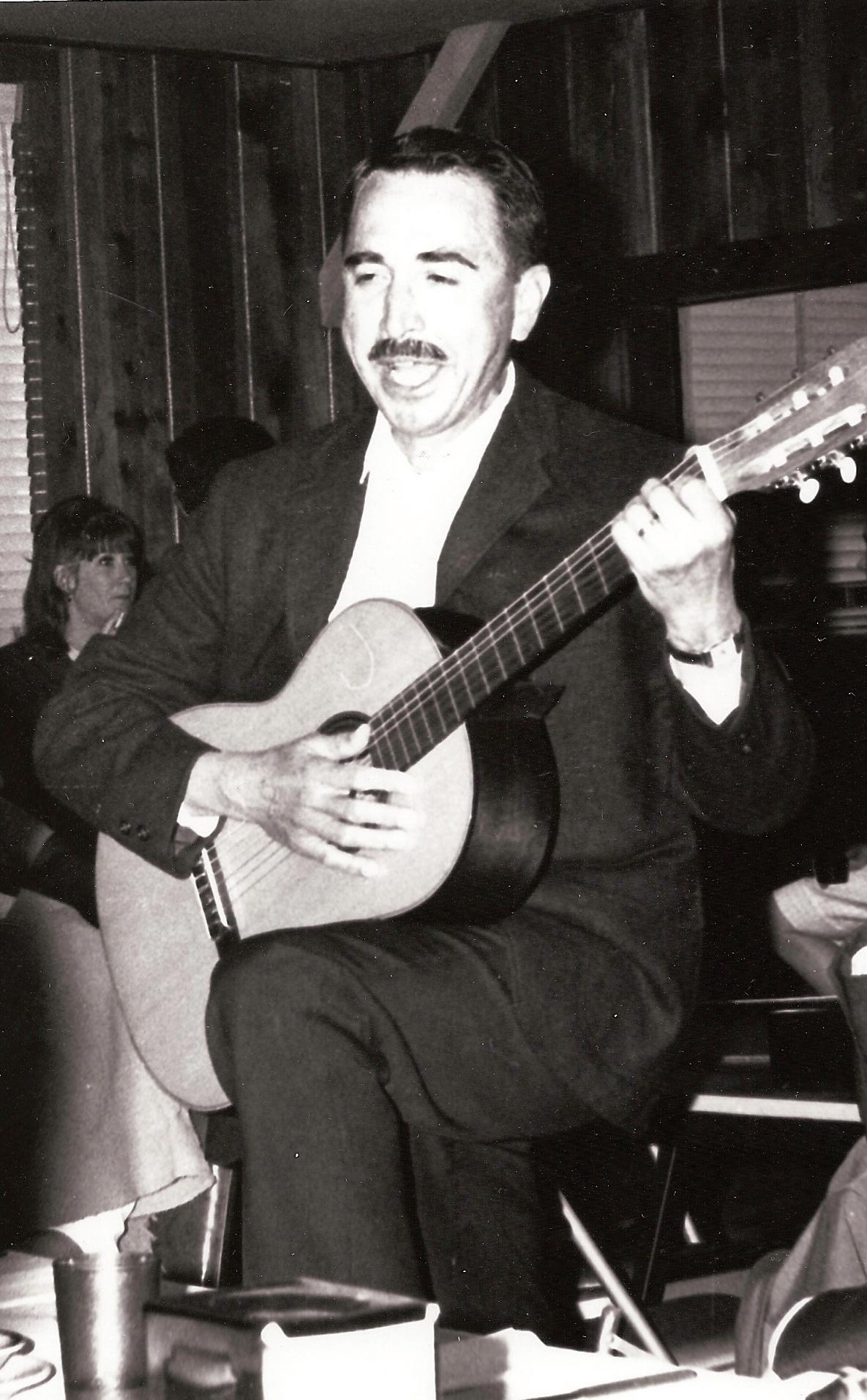

“Folklore is traditional expressive culture,” explains Secretary-Editor/Executive Director Kristina Downs, Ph.D. “Folklore can include legends, folksongs, pottery, folk dances, festivals, and superstitions. It also includes jokes, slang, cryptids, graffiti, memes, your grandmother’s chili recipe, and gameday traditions. Anything created by the folk, for the folk.”
TFS is headquartered on the campus of Tarleton State University in Stephenville, a growing college town about 65 miles southwest of Fort Worth, and has members throughout the Lone Star State and beyond. Members are planning for the future while reminding folks of the organization’s storied history, revived presence, and ongoing preservation efforts. The home office, a pair of suites that includes a folklore library with TFS first editions, also has general folklore publications from around the globe, a Texana Collection, a J. Frank Dobie Collection and more among the stacks.
“The TFS library is a research library, not a lending library,” Downs explains. “We hope that members, students, and our Tarleton family will utilize our holdings for research purposes, or at least come explore our unique, and in some cases rare,
INCLUDE
collections. It really is impressive.”
If the past is any indication, TFS membership offers good company. John Avery Lomax (1867–1948), pioneering musicologist, folklorist, and Texas A&M educator, and Leonidas Warren Payne (1873–1945), University of Texas (UT) English professor and editor of A Survey of Texas Literature, the first anthology of Texas literature, in 1928 co-founded the society.
Like many things linked to TFS, its origin story is quintessentially Texan. After being spurred to organize a state organization by leaders of the American Folklore Society, Lomax and Payne met to devise an organizational plan. The customary 1909 Thanksgiving Day (American) football game and gridiron rivalry between UT and Texas A&M served as the backdrop. TFS was officially chartered in Dallas on December 29 of that year, with Payne serving as president. As it is with members and leaders today, the founders had complementing interests— Payne was a collector of stories and folk speech, while Lomax was a collector of songs.
In the beginning and still today, TFS has a membership base with widely diverse interests, according to Meredith Abarca, 2023–24 TFS President. Some members are academics
Top Left The musical talent of longtime TFS Secretary-Editor F.E. “Ab” Abernethy renewed the Society’s interest in folk songs. Courtesy Bruce R. Partain/Texas Folklore Society
Bottom Left Américo Paredes, pictured performing at one of the TFS annual meetings. Courtesy Texas Folklore Society
Above Jovita Gonzalez (left) was encouraged by J. Frank Dobie (right) to begin writing for folklore publications when they met at UT Austin. Courtesy Texas Folklore Society
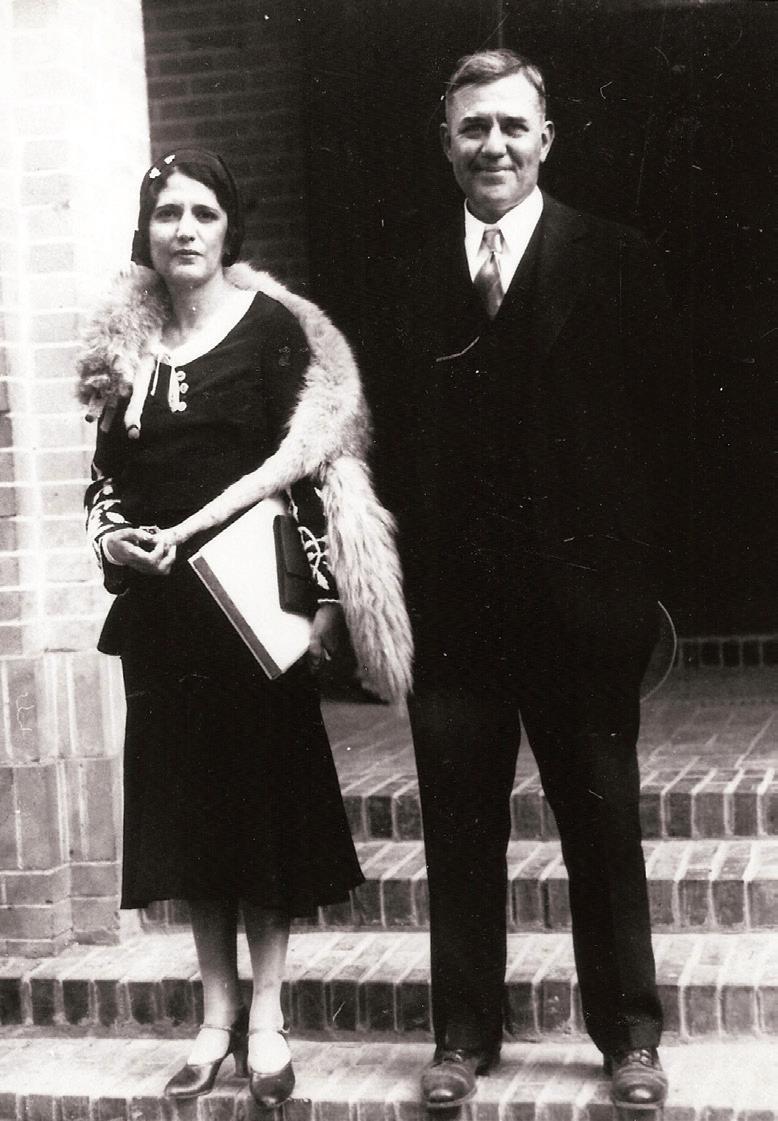
33 AUTHENTIC TEXAS FALL 2023
“FOLKLORE CAN
LEGENDS, FOLKSONGS, POTTERY, FOLK DANCES, FESTIVALS, AND SUPERSTITIONS.”
KRISTINA DOWNS, PH.D., EXECUTIVE DIRECTOR
and scholars. Still, some members are musicians, poets, authors, librarians, farmers, ranchers, students, and businesspeople, to name a few. Some are professionals, some are community folklorists, and some are enthusiasts. They bring their distinct cultures, beliefs, traditions, and experiences to the society through the stories they share, the papers they present, and the songs they sing.
Historically and today, members receive a copy of the organization’s yearly folklore book. The 2022 book, available later this year, was Fiestas in Laredo: Matachines, Quinceañeras, and George Washington’s Birthday, by TFS lifetime member Norma E. Cantú, Ph.D. The 2023 book is an anthology of member-collected stories.
“This year’s publication, Gather ‘Round: Gatherings in Texas and the Southwest, is a collection of pieces that focus on gatherings of all kinds, from personal reflections to scholarly analyses,” says Downs, whose position includes editing TFS
publications. “Some authors discuss the place gatherings have in marking the stages of life while others consider gatherings based on special interests. Gatherings range in scale from the Texas State Fair to traditions involving only a handful of people.”
Curating and producing the annual publication and a list of daily duties make the secretary-editor integral to operations, and the role has starred at least a couple of larger-than-life characters, including The Storyteller of the Southwest, J. Frank Dobie (1888–1964), who held the position from 1923–1943. Dobie recognized a good story and quickly became a champion of the annual publication, editing 16 Texas and Mexican border lore volumes. He took up the campaign to “save the longhorns” and recommended their preservation to the state legislature through a resolution issued by TFS. In 1932, the first Paisano—“roadrunner” in border Spanish—was styled for the annual book cover, and the bird became the official TFS mascot,
and a nickname for society members.
Dobie revived TFS and “rode herd on it,” carrying the organization from the Great Depression, through the 1936 Texas State Centennial and into World War II. Another former secretary-editor, Francis Edward “Ab” Abernethy (1925–2015), served from 1971 until 2004. He was a Stephen F. Austin University Distinguished Emeritus Regents Professor of English— Shakespeare, folklore and world literature. Ab served as secretary-editor for over three decades, editing 33 society publications after taking over the role. Ab was charismatic and humorous. His musical talents contributed to the society’s renewed interest in folk songs. As with previous secretary-editors, Ab worked to make folklore open and accessible to everyone.
Dobie and Ab were both legends in their respective circles and within the realm of folklore. They’re often spoken of and celebrated by TFS still today. The office of president has also

34
Native Texans and master storytellers John Henry Faulk (l) and J. Frank Dobie ( r ) are among the icons with ties to the Texas Folklore Society.
Photo circa 1940. Courtesy Texas Folklore Society
attracted many folklorists that are studied and celebrated in classrooms and by casual readers. A list of more than 100 TFS past presidents includes professional folklorists Américo Paredes, Jovita González, and Sylvia Ann Grider, to name a few, as well as several others and many equally respected community and many preservationists.
As the organization pushes toward a “Regional Wranglers” program with a single member or small group serving as points of contact in their respective areas, TFS has a full outreach schedule into 2024 (see sidebar for more information). Outreach efforts include “Dobie Dichos: Campfires, Chili con Carne, and the Words of J. Frank Dobie,” an event started in 2011 at the suggestion of author William “Bill” Sibley and is staged at the historic Live Oak County Jail in Oakville on the first Friday in November.
Dobie Dichos is a unique literary event celebrating the folklore, literature, and storytelling of Texas and the Southwest. It has been recognized by The New York Times as being one of “the” events to attend in Texas. Authors and
storytellers influenced by J. Frank Dobie participate in the event by sharing a story from one of Dobie’s works or presenting a piece inspired by his works.
“Given Dobie’s history with the society, the partnership between TFS and Dobie Dichos is a perfect fit,” Downs says. “Not only does the event allow members to spend time with folks with similar interests, but it’s also another way of honoring J. Frank Dobie’s legacy, which looms large within TFS and across the state.”
The full slate of events planned for the fall and spring paves the way for the folklore society’s 105th Annual Meeting. The event will be at The Westin San Antonio North March 28–30.
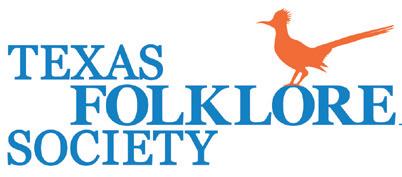
Everyone is welcome. The annual meeting always has a hospitable open-door policy for anyone, and everyone interested in learning more about folklore. There will be presentations all day Friday and into Saturday.
“I am amazed by the things— the research and preservation— we, as a society, accomplish. There is no doubt the presentations will be interesting for everyone who would like to
attend,” says Abarca.
The meeting is part conference, part picking party, and “a great family reunion–like when your favorite cousins show up!” There will be public presentations on folklore throughout the day on Friday and Saturday morning. Meanwhile, folks who love music—playing, singing, dancing, or just listening—are invited to the hootenanny, which kicks off around 7:30 p.m. on Thursday and Friday nights and continues until the early morning.
“The annual meeting helps keep us united,” Downs says. “Being immersed in folklore has a way of bringing people together. It’s one of those rare events where our differences truly come together and unite us. We learn a lot about other folks, their cultures and customs, and Paisanos leave each year with a greater connection.”
As the organization continues to grow—at a rate of about 30 percent a year—TFS aims to one day blanket Texas and the Southwest in knowledge, understanding, and acceptance.
Dobie Dichos
November 3
Oakville
Second Annual BBQ World’s Fair
November 4
Downtown Lockhart
Texas Book Festival
November 11 & 12
Downtown Austin
Texas Storytelling Festival

March 7–10, 2024
Denton
105th Annual Meeting
March 28–30, 2024
The Westin San Antonio North
TUNE INTO TFS
Telephone (254) 459-5445
Email TexasFolklore Society@gmail.com
Website TexasFolkloreSociety.com
Facebook & Instagram TexasFolkloreSociety
Twitter /Texas_Folklore
35 AUTHENTIC TEXAS FALL 2023
Lee Haile and Clinton Fifer, Jr. perform at an annual hootenanny. Courtesy Texas Folklore Society
MIX & MINGLE with TFS
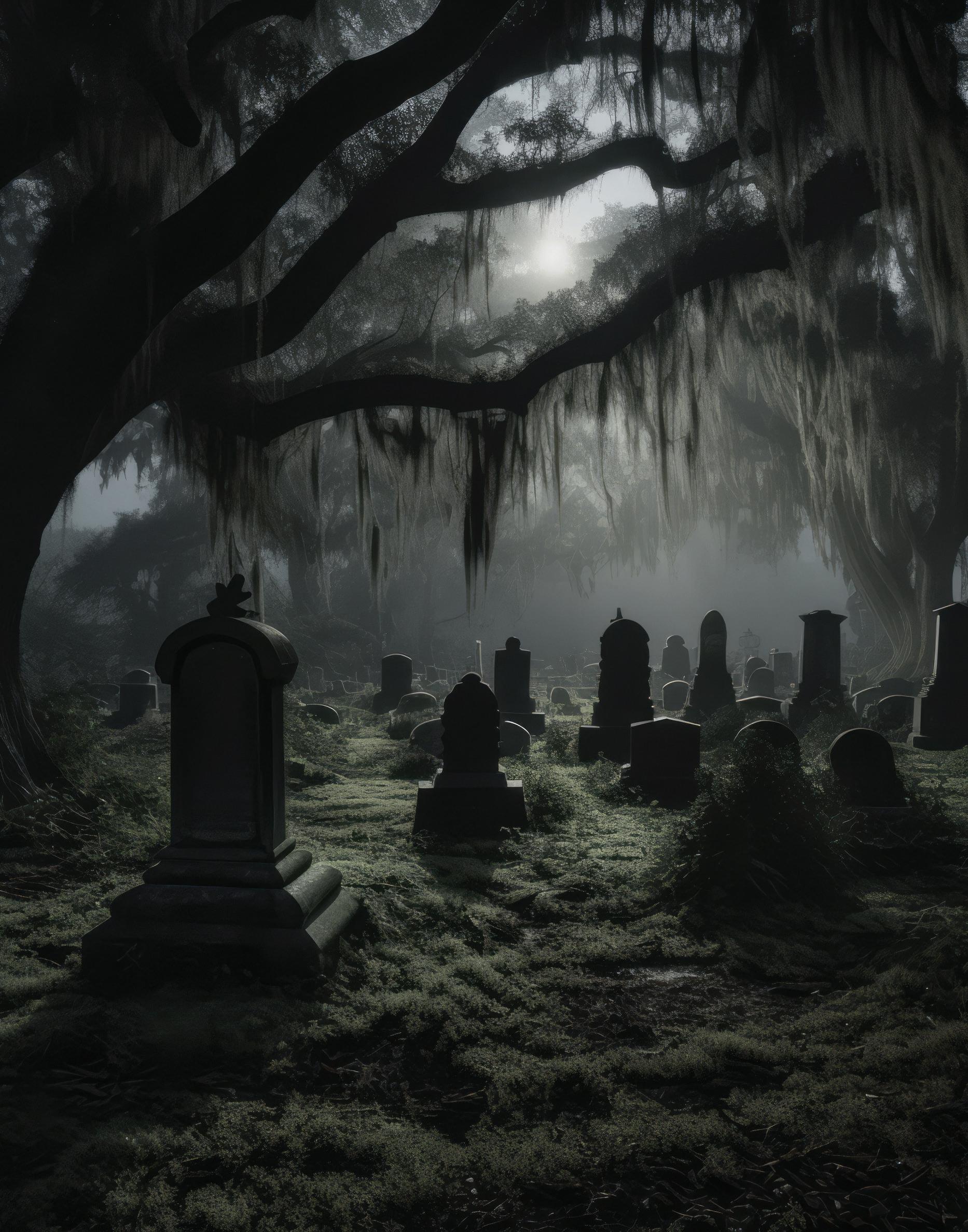
UNVEILING
AUTHENTIC PLACE
THE HAUNTING
HISTORY
OF JEFFERSON, TEXAS’ GHOST WALK
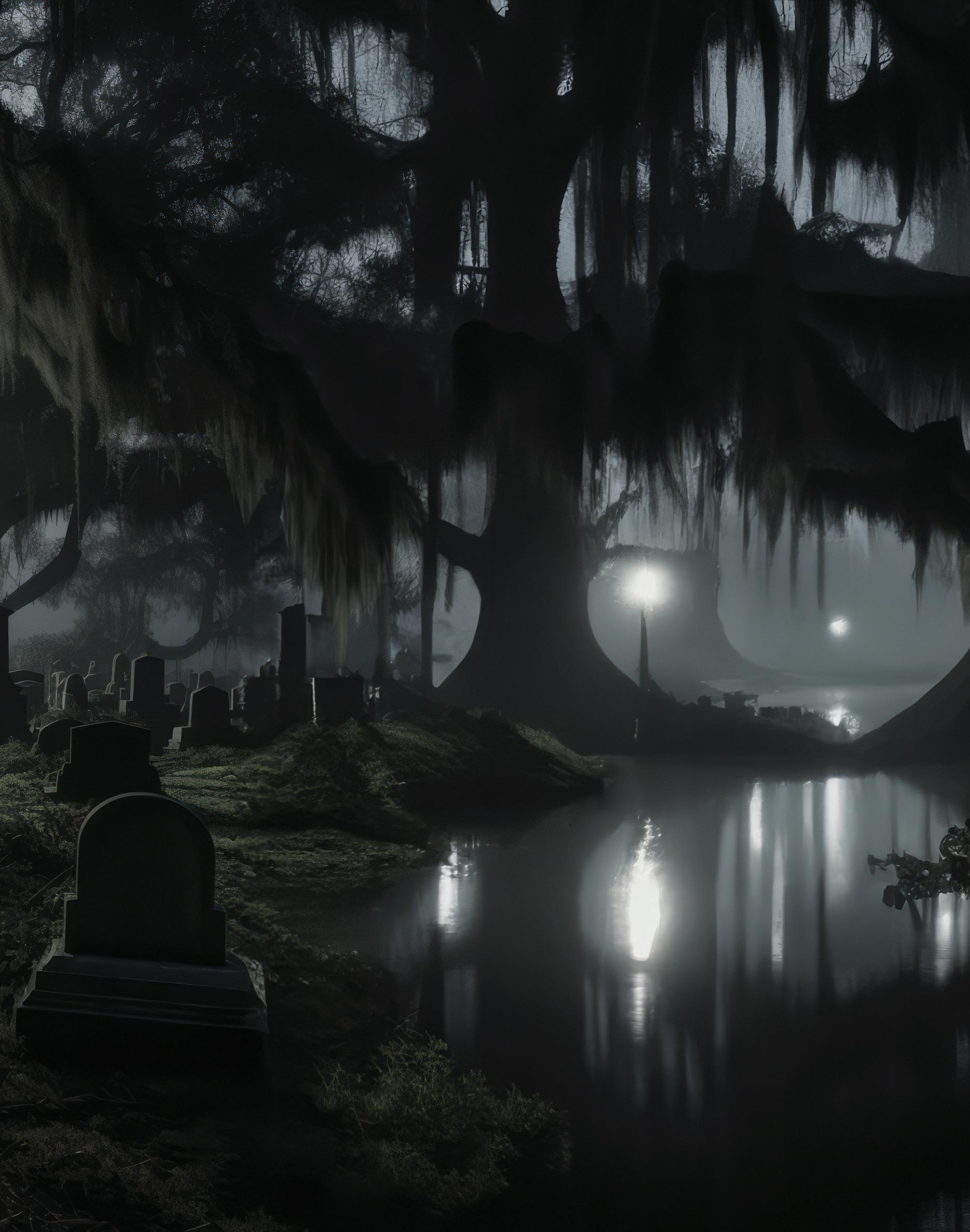 by Allison Kendrick
by Allison Kendrick
In the heart of East Texas lies a town steeped in history and the supernatural. Jefferson, Texas, known as the “Most Haunted Small Town in Texas,” offers visitors a spine-tingling experience like no other. One way to encounter this first-hand is to book an evening to go on the Historic Jefferson Ghost Walk, where history, mystery, and the paranormal converge. You are guaranteed to hear the captivating tales, chilling encounters, and rich historical background from guide and local historian, Jodi Breckenridge, that make the Historic Jefferson Ghost Walk an unforgettable adventure for ghost enthusiasts and history buffs alike.
Nestled on the banks of the Big Cypress Bayou, Jefferson, Texas, exudes an otherworldly charm. Its well-preserved 19th-century architecture and antique shops are a testament to its storied past. However, beneath its picturesque facade lies a more mysterious side—some would say a realm inhabited by restless spirits. The Historic Jefferson Ghost Walk offers a captivating journey through time, guiding visitors through haunted locations, each with its own tale of ghostly apparitions, unexplained phenomena, and mysterious events.
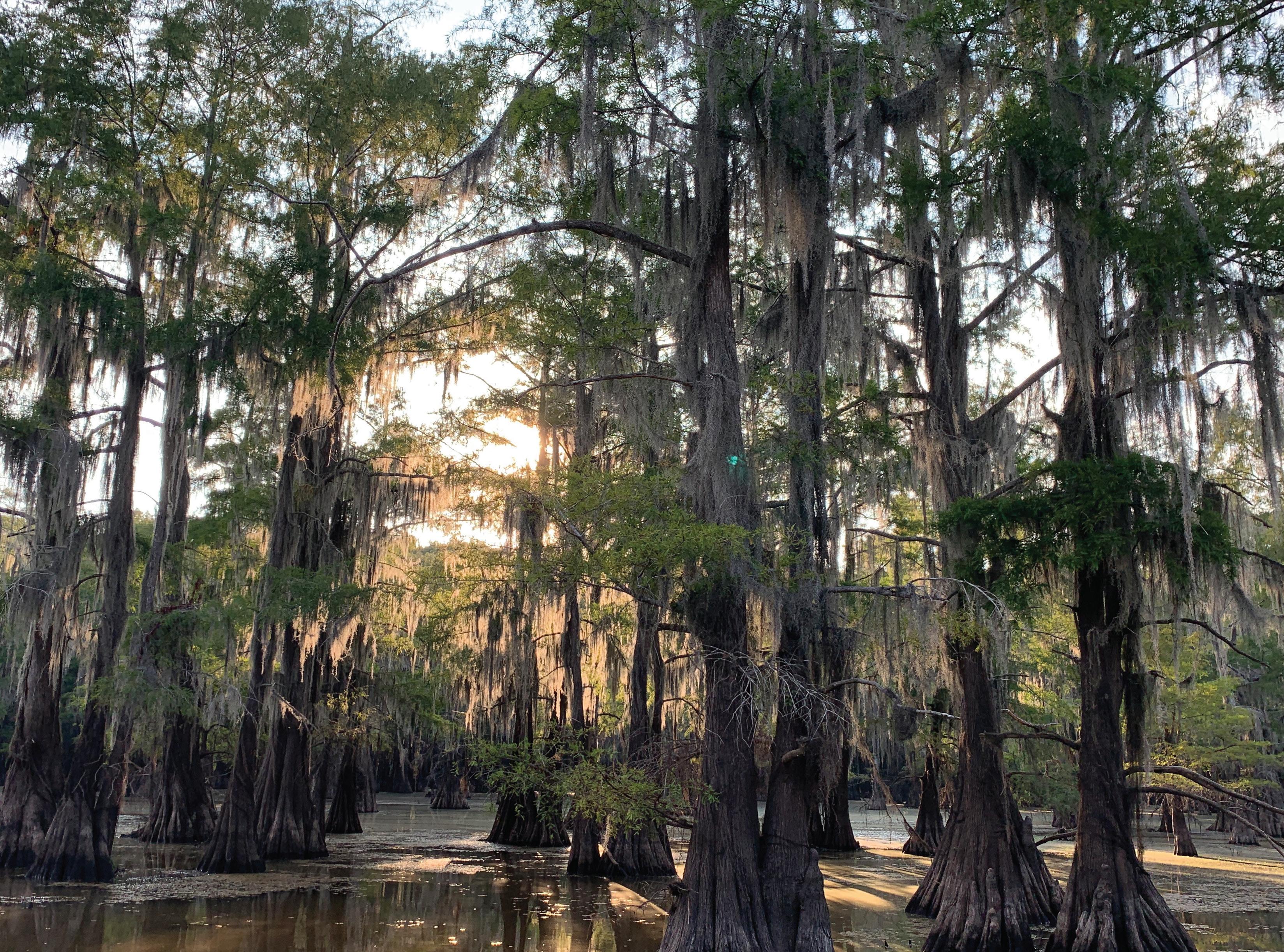
38
Jefferson is located along the Big Cypress Bayou a part of Caddo Lake. Big Cypress Bayou –Allison Kendrick
From the Excelsior House Hotel, which is the oldest hotel in continuous operation in Texas, the Historic Jefferson Hotel (claimed to be the most haunted hotel in Texas), the Historic Kahn Hotel (one of the top ten most haunted hotels in Texas), to the historic Grove House, every stop on this tour is steeped in paranormal history.

As participants embark on the Historic Jefferson Ghost Walk, they are transported back to a time when steamboats plied the river, and the town bustled
with trade. Along the tour, historian and guide Jodi Breckenridge regales visitors with stories of infamous outlaws, tragic deaths, and the lingering spirits said to still haunt the town’s streets and buildings. Explore the haunted alleyways, where echoes of the past seem to linger, or venture into the Old Jefferson Burial Grounds, home to unmarked graves and eerie legends. Each stop reveals a new layer of Jefferson’s history, painting a vivid picture of the town’s past. Breckenridge keeps visitors on
the edge of their seats with tales of ghostly encounters, and her experiences from over a decade of leading tours.
While the Historic Jefferson Ghost Walk embraces history, it also offers a chance for participants to experience the supernatural firsthand. Visitors have reported mysterious orbs, cold spots, and even interactions with apparitions. Some have witnessed unexplained lights, disembodied voices, or objects moving on their own. The tour invites guests to bring their

AUTHENTIC TEXAS FALL 2023
Left The Historic Kahn Hotel
Right The “Most Haunted Hotel in Texas” the Historic Jefferson Hotel lit up awaiting visitors for their overnight stay.
Credit: Historic Jefferson Hotel
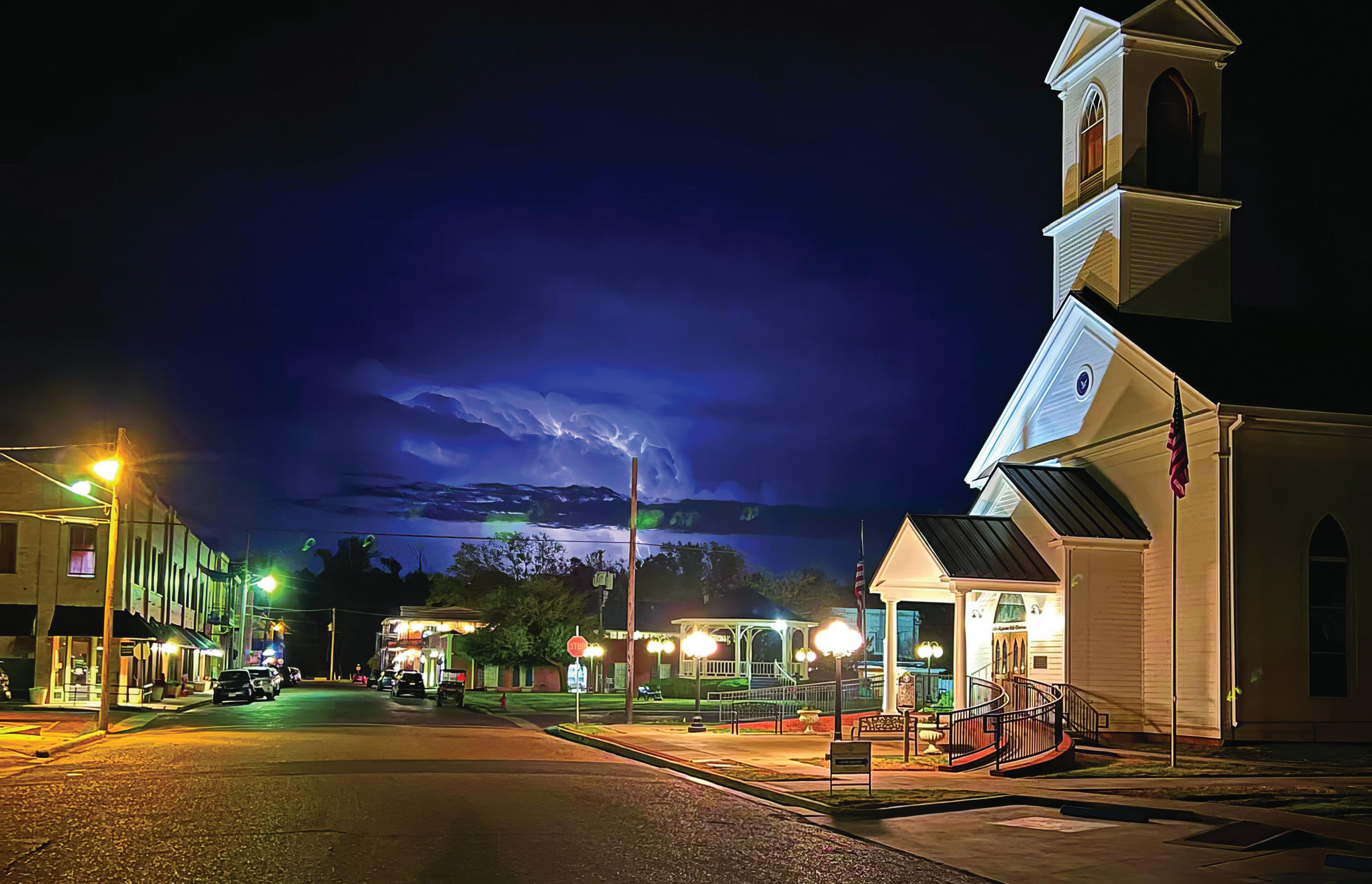
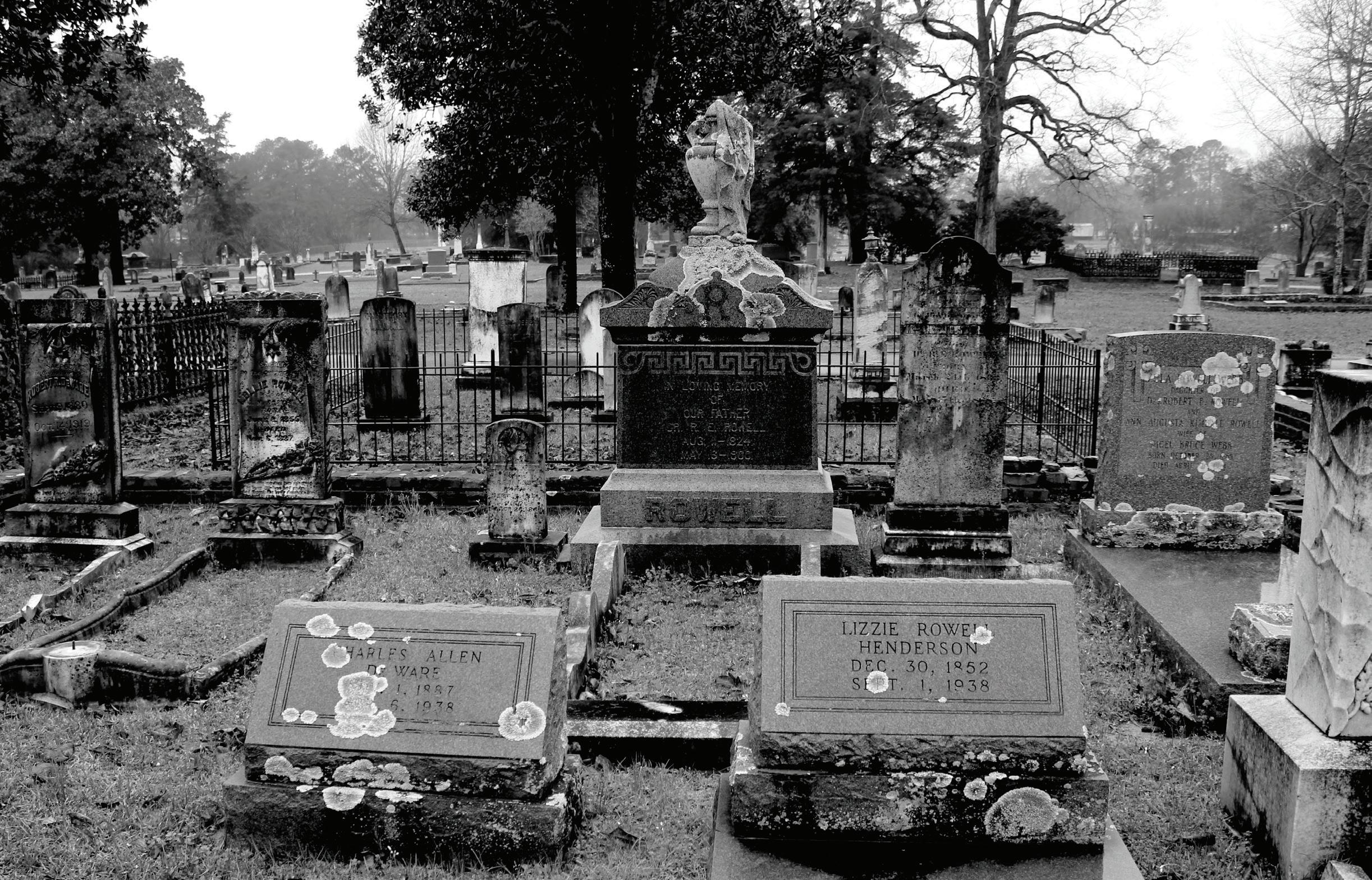
“THE BEST PART ABOUT A GHOST STORY IS YOU’VE GOT TO UNDERSTAND THE HISTORY FIRST.”
JODI BRECKENRIDGE, HISTORIAN
cameras, encouraging them to document any strange occurrences they encounter. Whether you’re a skeptic or a believer, the Historic Jefferson Ghost Walk invites you to step into the unknown, providing an immersive and eerie experience that may just leave you questioning the boundaries between the living and the dead.
The tour is more than just a journey through haunted sites. “Whether you believe in ghosts or not, everyone loves to hear a good ghost story. It’s just human nature to be curious about things we don’t understand. The best part about a ghost story is you’ve got to know and understand the history first,” said tour guide and historian Jodi Breckenridge.
As darkness falls and the spirits awaken, visitors can’t help but feel the palpable energy that permeates this historic town. So, if you’re seeking a thrilling adventure that intertwines history and the paranormal, pack your courage and join the ranks of those who have dared to venture into the haunted realm of the “Most Haunted Small Town in Texas” —it’s an experience you won’t soon forget.
Top Walking back from finishing up a tour to a exquisite lightening show.
Credit: Historic Jefferson Ghost Walk
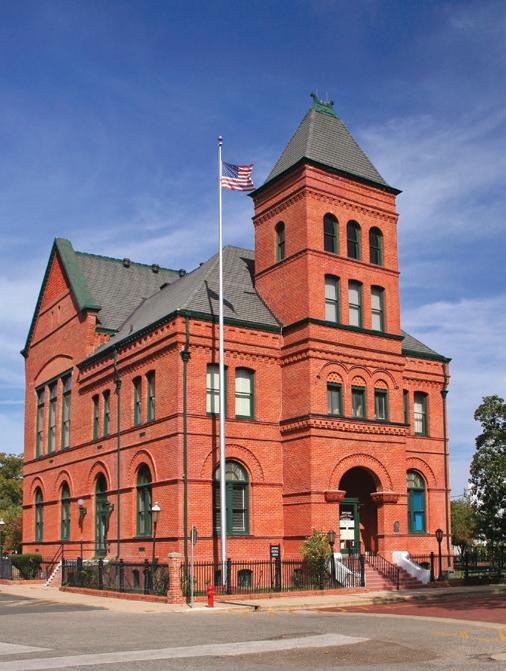
Bottom Historic Oakwood Cemetery with headstones dating back to 1850. Credit: Nicolas Henderson
Left Peering out from inside a stop on the Historic Jefferson Ghost Walk. Credit: Historic Jefferson Ghost Walk, possible sighting in the window?

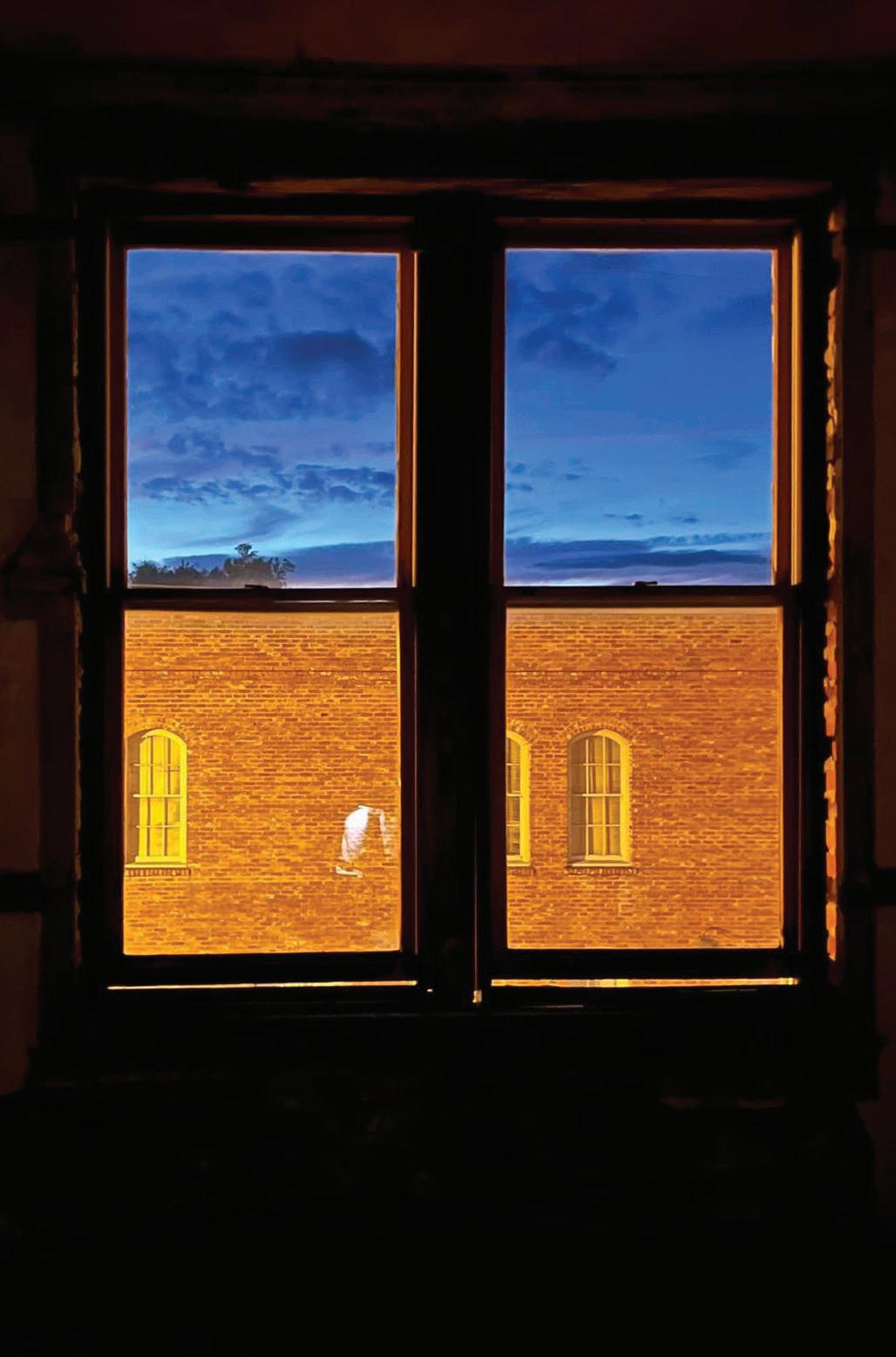
Right A group starting out their haunted adventure led by historian Jodi on the Ghost Walk. Credit: Visit Jefferson
Visit Jefferson visitjeffersontexas.com
Historic Jefferson Ghost Walk Tours Tours happen year round, every Friday and Saturday. Follow and check Facebook for updates and tour information. Facebook: Historic Jefferson Ghost Walk Tour jeffersonghostwalk.com
Plan your Stay visitjeffersontexas.com/ places-to-stay
Historic Jefferson Hotel historicjefferson.com
Historic Kahn Hotel kahnsaloon.com
Excelsior House Hotel theexcelsiorhouse.com
41 AUTHENTIC TEXAS FALL 2023
DON’T MISS

42
LIFE
44 Haunted Sites, Unexplained Phenomena, Astro Tourism and the Texas Pecos Trail Region
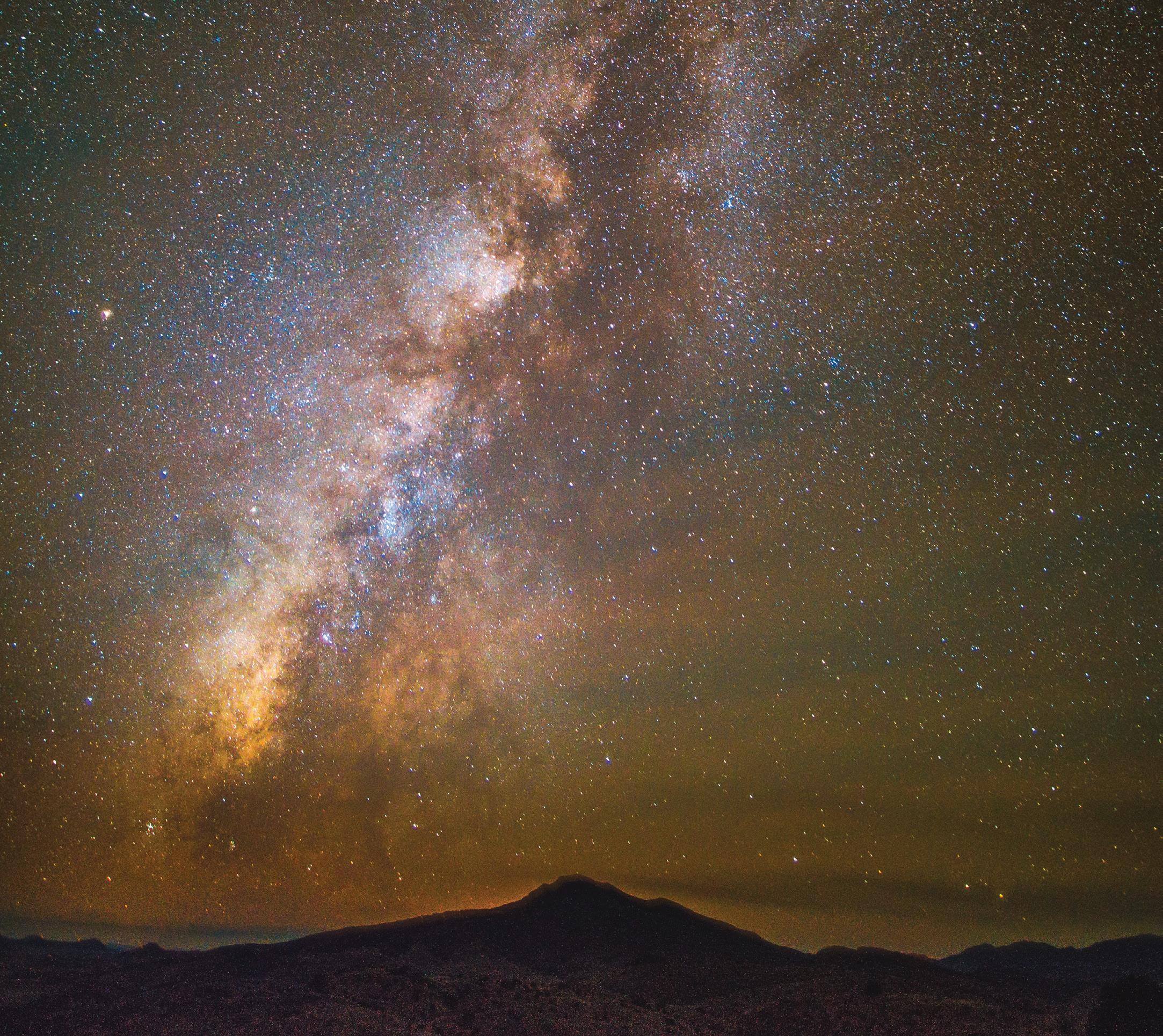
58 Texans of all ages enjoy Jake & Dorothy’s Café in Stephenville, the Slaton Bakery and Midland’s Casita Gerardo
70 Trail drives
Eats & Drinks
64 deep in the art
Public art and ghost signs abound throughout Elgin while a 1902 Colt Bisley ties together a family tragedy and a murder
Live shows
Communities across Texas will be the focus for many during the 2024 solar eclipse
43
The Milky Way above Fort Davis | Courtesy Adam Dutton
Haunted Sites Across Texas
 by Eric W. Miller
by Eric W. Miller
DON’T MISS
Visit Waco Wacoheartof texas.com
Dr Pepper Museum 300 South 5th St. Waco, TX 76701 (254) 757-1024 Drpepper museum.com
Visit Amarillo visitamarillo.com
The Bivins Mansion 1000 South Polk Amarillo, TX 79105 806-373-7800
Visit Canyon canyon chamber.org
Panhandle-Plains Museum West Texas A&M University 2503 4th Avenue Canyon, TX 79015 (806) 651-2244 panhandle plains.org
Is haunted historic? That’s the great question. We love haunted things – buildings, roads, lights, natural disasters, battlefields, cemeteries and many more. Ghost tours are very popular. Some folks study the paranormal and try to quantify very elusive legends. But is haunted also historic? Does a list of haunted places merit a “trail drive?”
According to one historian, the answer is unquestionably yes.
Michael Grauer, former curator of history at the Panhandle Plains Historical Museum, thinks haunted and historic are really a yin-yang concept that describes opposite but interconnected forces.
There’s no shortage of haunted sites in Texas. Anywhere someone has witnessed or felt something that they can’t explain can become a haunted site. Some well-known haunted sites include Caddo Lake, USS Lexington in Corpus Christi, Presidio La Bahía in Goliad, The Alamo in San Antonio, the entire town of Jefferson and the Ghost Road outside Saratoga.
Still more haunted sites are the Monkey Bridge in Athens, Goatman’s Bridge in Denton, the Devil’s Backbone Tavern in Fischer, the White Lady of the Rio Frio, Catfish Plantation Restaurant in Waxahachie and the Yorktown Memorial Hospital.
We all have personal favorites of haunted sites. Here are a few highlights from my research.
The Bivins Mansion in downtown Amarillo is one of the oldest structures in town. Built in 1905 as the “town” house of the pioneering Bivins family, it has been a private home, the public library and
headquarters for the Amarillo Chamber of Commerce and other Amarillo non- profits. As the late Amarillo City Commissioner Diane Bosch told me, “This may be the most haunted building in town.” Most frequently locals tell stories of a cook still hanging around the mansion, as suggested by the smell and sound of frying bacon. The mansion’s top floor was the ballroom, site to many parties with music and dancing. Sometimes, workers hear footsteps upstairs, yet the ballroom is empty, holding the HVAC system for the building.
Historic hotels are frequent locations for haunting stories, which makes sense to Grauer, now McCasland Chair of Cowboy Culture at the National Cowboy & Western Heritage Museum in Oklahoma City, since so many people pass through hotels. With people come events, like backroom deals, notable guests, disagreements, fistfights, gunfights and robbery and murder.
The Driskill Hotel in Austin is one of the state’s most famous hotels. Always home to political and business leaders, it may have hosted more backroom deals than any other Texas building. It’s no surprise it is haunted. But don’t forget the Hotel Galvez in Galveston, the Menger in San Antonio, Miss Molly’s Hotel in Fort Worth and the Magnolia Hotel in Seguin. Big city or small town, large hotel or small, each one has a special vibe and a special place in history.
Night at the Museum was a very popular movie franchise. But the films have nothing on Canyon’s Panhandle-Plains Historic Museum, the largest history museum in Texas. Spirits abound late at night; items move in exhibits and museum employees know Sarah Jane, the
44 trail drives LIFE
spirit of a young girl who walks the hallways. Grauer worked many late nights in the museum and can personally attest to noises and spirits.
Historic cattle trails of the 1860’s and 1880’s, from Texas north to Kansas, Colorado, Montana and other places, are themselves haunted. For example, the Western Trail, active from 1874 to 1886, moved more cattle north from Texas than any other trail.
Cowboys died along the way, through accidents on the job, disagreements and fights with other cowboys and very rarely, encounters with Native Americans. Most were buried in unmarked graves along the trail. Grauer believes those spirits of hard-working cowboys are still trying to complete their jobs.
Grauer’s favorite haunted site? He had the opportunity to stay overnight on a battlefield now located on private property (with the landowner’s permission) and has experienced the spiritual auras that come to life there. “Haunted does not mean spooky or bad or evil. Haunted means that there is something incomplete in someone’s life,” Grauer says.
Hauntings are one of the easiest ways to tell a story, Alex Hunt, professor of English at West Texas A&M University, believes. Maybe it’s a slice of history we don’t understand so haunted stories are a way we communicate legends. As director of the Center for the Study of the American West, one of Hunt’s favorite haunting stories is the Phantom Horse Herd of Tule Canyon.
A Ghostly Good Time
by Rachael A. Nadeau Johnson
If you look at lists of the most haunted states, Texas is usually at the very top. While Waco doesn’t rank at the top for haunted cities, The Dr Pepper Museum in the heart of Waco seems to be a hot spot for paranormal activity.
The Battle of Palo Duro Canyon (September 28, 1874) featured the capture of more than 1,400 horses from the Comanche, Apache and Kiowa people. The horses were driven south into Tule Canyon and after giving some of the horses away to friendly Native American partners, the U.S. Army destroyed the rest of the herd, maybe 1,000 horses. Without their horses the bands of Native Americans living in Palo Duro Canyon were without a key part of their livelihood and quickly moved onto reservations. But it is said that on moonlit nights, the Phantom Herd still thunders along the rim of Palo Duro Canyon, evading final capture from all who try.
Finally, the entire city of Galveston may be haunted by the great storm of 1900, according to Galveston fan Mallory Laurel, a Special Project Coordinator for the Texas Historical Commission. This hurricane, recounted in the book Isaac’s Storm, swamped the entire city and resulted in the greatest loss of life for any natural disaster in the US. What haunts Galveston – that high water mark. Every building in the city, whether it survived the storm or was washed away, is a location of great human tragedy. The city built a seawall and raised more than 2,000 surviving structures, yet more than 100 years later that city is haunted by the what if, Laurel explains.
“What haunts us is what lingers,” Laurel says. There are plenty of ways that history haunts us, and most don’t have anything to do with ghosts.
The Dr Pepper Museum is housed in two historic buildings: the home of Dr Pepper known as the Artesian Bottling and Manufacturing Company built in 1906 and the Kellum-Rotan Building built in 1882. Much of the ghostly activity is believed to come from when the land was used for housing.
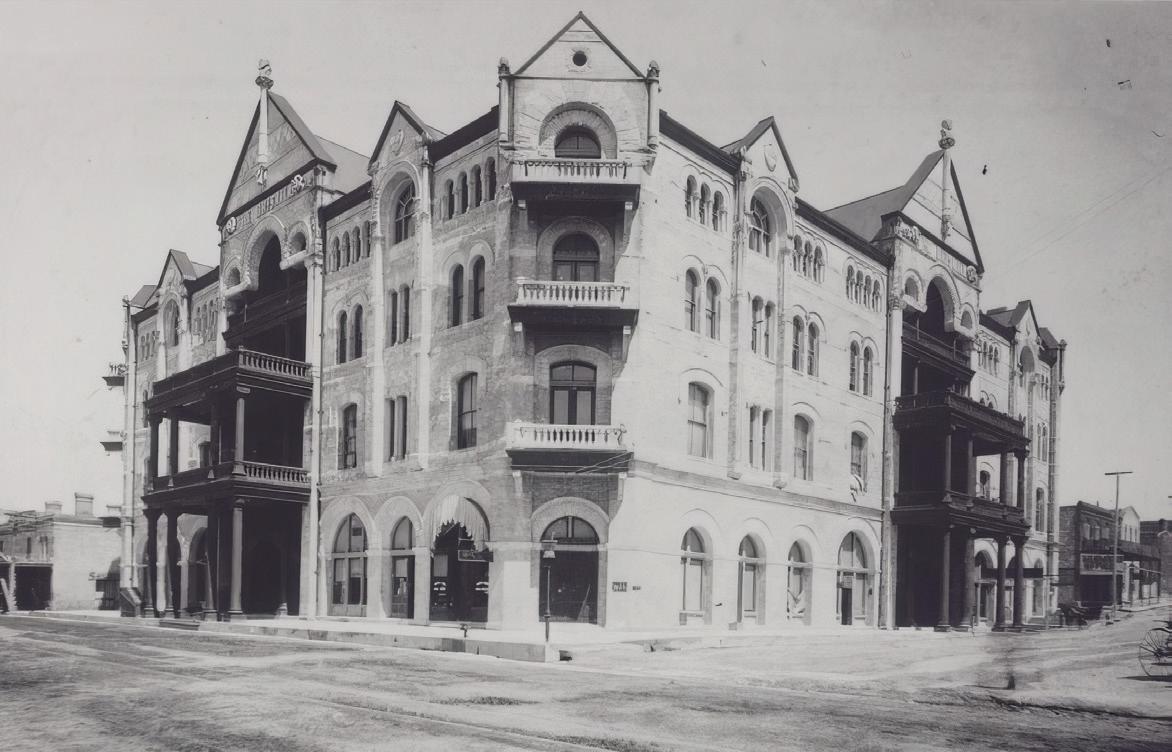
Paranormal investigators and museum staff alike have experienced activity in both buildings and the courtyard that connects them. We have caught activity on audio and video recordings and have even seen some of the activity firsthand.
When you visit, you might notice “Spooky Spot” signs throughout the museum. These are areas where investigators have found paranormal activity. For many years, the museum has hosted paranormal investigators who gathered data and shared it with us. We have also tried to keep track of museum staff’s paranormal experiences. Using both types of reporting, a Paranormal Experience was designed and launched in the fall of 2020 which combines the stories and data with real-time investigative work.
There is a variety of paranormal activity witnessed by staff. Several staff members have reported seeing full-body apparitions, sometimes of a man and other times of woman and usually described as dressed in Victorian clothing. Soda fountain staff report having their hair or apron strings gently tugged. Others report hearing whispering, seeing and hearing doors slam, hearing a woman talking, and hearing loud clanging and clattering noises. One entity enjoys playing tricks on staff and will usually answer questions during investigations – although, you must decipher what are jokes and real answers.
Join us for a Paranormal Experience; you might just experience some of this activity for yourself!
45 AUTHENTIC TEXAS FALL 2023
Left Our Lady of Loreto Chapel at Presidio La Bahia | Courtesy Carol M. Highsmith Above The Driskell Hotel in Austin in 1888
Unexplained Phenomena
Mysterious Lights, Flying Saucers and Alien Crashes
 by Tristan Smith
by Tristan Smith
There has been a serious resurgence in UFO interest recently. Now referred to as UAPs, or Unidentified Anomalous Phenomena, everyone right up to national intelligence and defense officials are talking about them in the halls of Congress. Whether it’s legend, lore, tall tales, or real, Texas has long been a hotbed of UFO sightings for more than a century. While there was never a system outside of local authorities or the military to report such sightings, today there is the Mutual UFO Network or MUFON. With chapters throughout the world, including a Texas chapter, as well as outlets in San Antonio, Houston, and Dallas, one now has alternatives for reporting the strange sites they might see overhead.
THE FIRST FLYING SAUCER
One of the earliest published reports of a “flying saucer” came during a front-page report in the Denison Daily News on January 25, 1878. Local farmer John Martin was hunting six miles north of town when he spotted something in the distance. Looking high in the southern sky, he noticed a dark object moving at an incredible speed.
46 trail drives LIFE
Growing in size and brightness as it closed in, Martin stared at it so long that he was temporarily blinded; his sight not being restored until the object, which was “about the size of a large saucer” and resembling a balloon, was directly overhead. The story appeared the following day in The Dallas Weekly Herald and was picked up by the Daily Oklahoman soon after. This sighting led to the first-ever mention of a “flying saucer”, at a time when no one had heard of a UFO, much less reported on them.
AURORA UFO CRASH
On April 19, 1897, the Dallas Morning News featured an article by S. E. Haydon, describing the crash of an “airship” that struck Judge J. S. Proctor’s windmill at 6 a.m., two days prior. The airship’s pilot, whom Haydon described as “not of this world”, was discovered deceased in the debris. The pilot was buried by local citizens at the nearby cemetery while the wreckage was dumped into a well under the damaged windmill, with some being placed in the pilot’s grave. Brawley Oates purchased Judge Proctor’s property in 1935, eventually deciding to use the well as a water source. Oates cleaned out the debris; later developing a severe case of arthritis, which he claimed came from the contaminated well water. As a result, Oates had the well sealed with a concrete slab and topped with an outbuilding in 1945. In 1980, Time magazine interviewed Etta Pegues, an Aurora resident. She claimed Haydon made up the whole thing to generate interest in the town, which the railroad had recently bypassed. The incident continues to be investigated. A historical marker is set inside the cemetery; the alien grave’s tombstone has been lost twice over time.
LAREDO CRASH
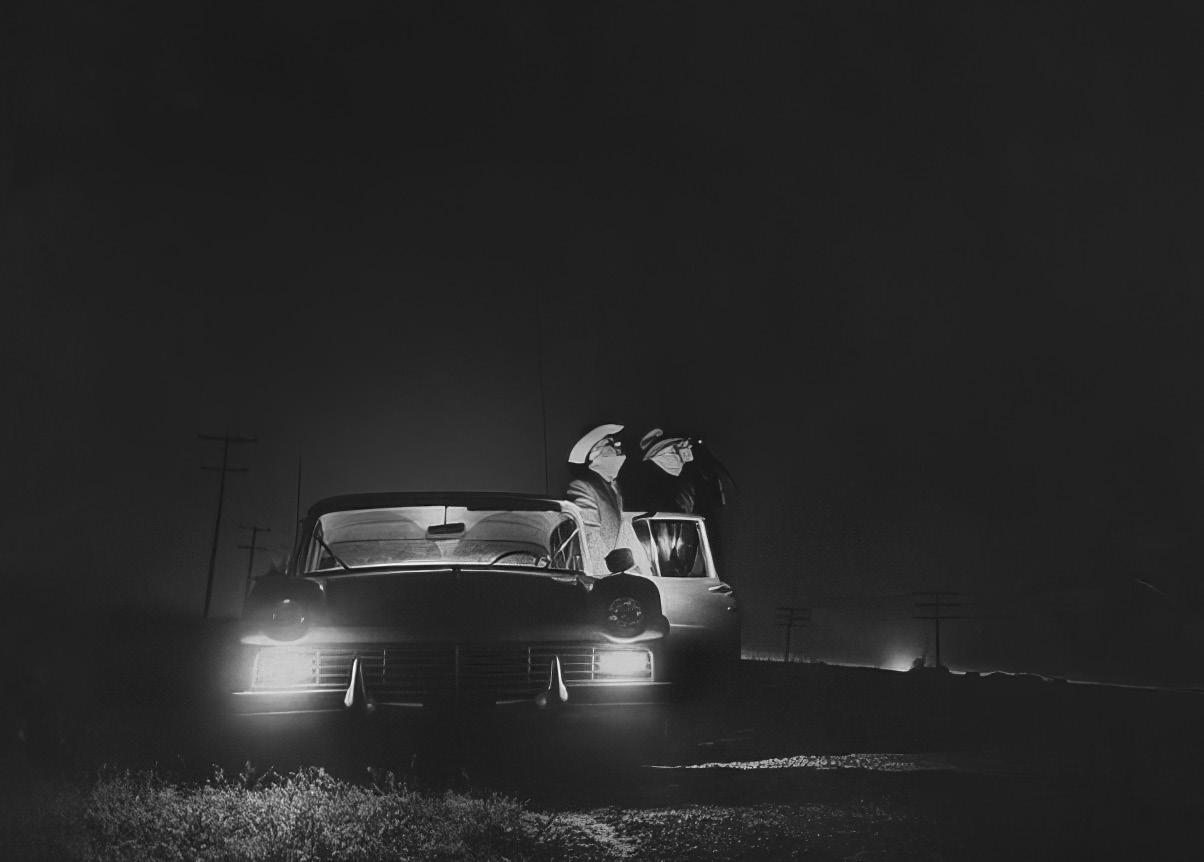
Nearly one year to the day after the Roswell UFO incident, Laredo experienced a similar occurrence. On the afternoon of July 7, 1948, a silver disc-shaped object was sighted above Albuquerque, New Mexico. Moving at a reported
The Marfa Lights are among the most well-known mysteries of Texas. As the Visit Marfa website states, “Ranchers, Native Americans, high school sweethearts, and famous meteorologists alike have reported seeing seemingly sourceless lights dance on the horizon southeast of town, an area that is nearly uninhabited and extremely difficult to traverse. The mystery lights are sometimes red, sometimes blue, sometimes white, and usually appear randomly throughout the night, no matter the season or the weather.” See the Authentic Texas article in the Summer 2018 issue specifically about the Marfa Lights at authentictexas.com/mystery-lights.
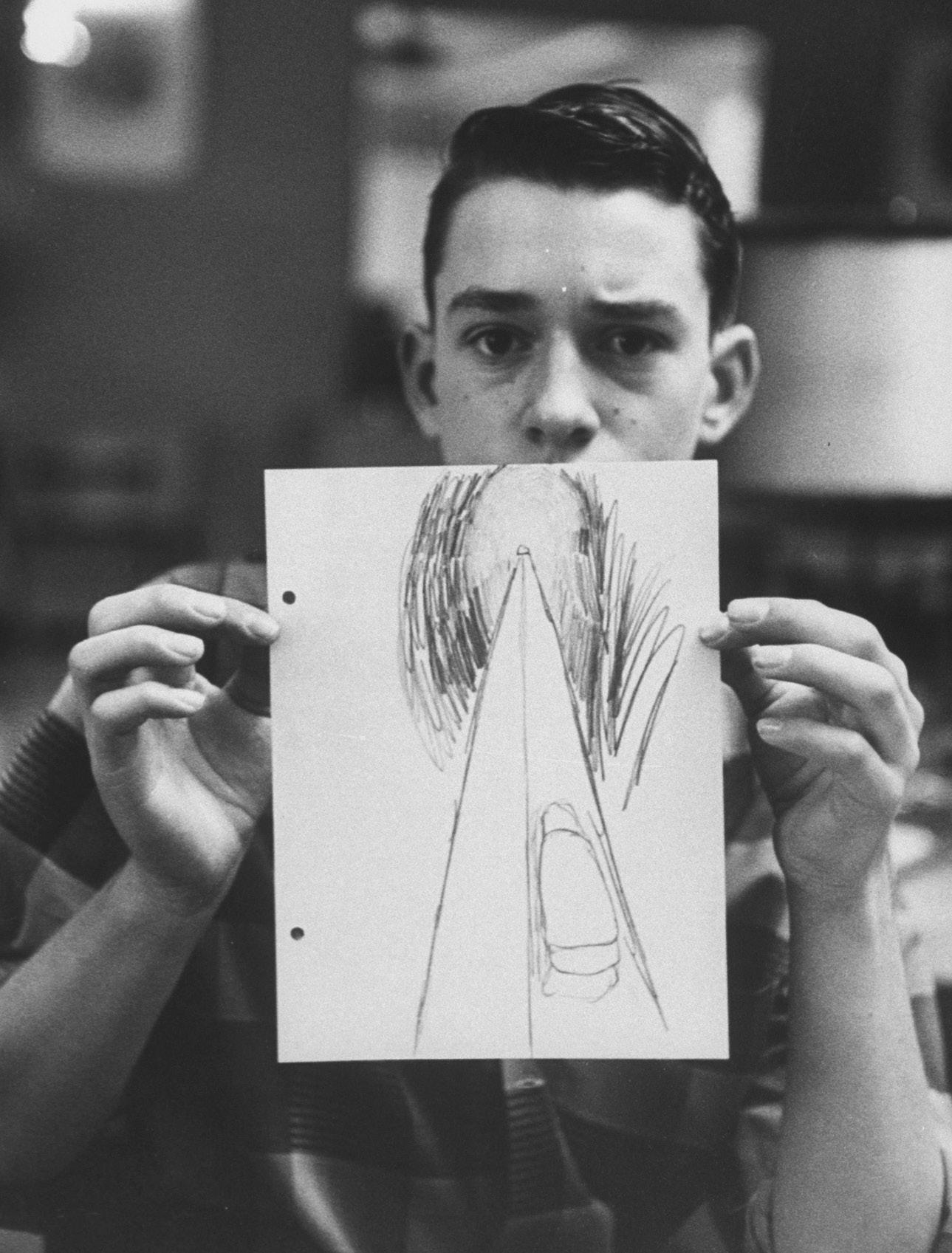
47 AUTHENTIC TEXAS FALL 2023 Mutual UFO Network (MUFON) mufon.com Visit Denison discover denison.com Visit Aurora auroratexas.gov Aurora Cemetery 507 Cemetery Rd. Aurora, TX 76078 Visit Laredo visitlaredo.com Visit Lubbock visitlubbock.org Visit Levelland levellandtexas.org Visit Edinburg experience edinburg.com Annual Edinburg UFO Festival edinburgufo.com City of Edinburg Cultural Arts Division edinburgarts.com Visit Marfa visitmarfa.com
DON’T MISS
Left The fact that numerous witnesses throughout Levelland saw a UFO is part of what brought LIFE Magazine to town. Holding up a drawing of what he saw in 1957, this was one of several witnesses interviewed by the national magazine.
2,000 miles per hour, the object was tracked making a 90-degree turn before heading towards southwest Texas. At least two US military aircraft were dispatched and chased the 90-foot diameter craft before witnessing it wobble and slow before crashing about thirty miles southwest of Laredo. The military was dispatched from Carswell Air Force Base to cordon off the crash site until a special retrieval team could arrive. When the debris was collected, the badly burned body of a non-human being was reportedly retrieved and transported to a San Antonio military base. Talk of the crash first came in the 1950s with later details emerging in 1978.
LUBBOCK LIGHTS
As the sun settled into the horizon on the night of August 25, 1951, a group of Texas Tech University professors gathered at one of their homes for an evening get-together. Standing outside, around 9:20, the professors saw twenty to thirty bluish-yellow lights flying towards the south; bright as stars. At a nearby drive-in, Pat Allgood saw a similar sight, later stating that he and his date saw the lights coming up over the movie screen in a “formation of lights…maybe a little bit smaller than a Frisbee.”
Five days later, Texas Tech freshman, Carl Hart Jr., was standing in his parent’s backyard when he saw two V-shaped lighted formations flying overhead. Hart grabbed his camera and waited outside until two more lights eventually crossed overhead; snapped a few shots, processed them, and took them to the Lubbock Avalanche-Journal. Hesitant to
publish them, they eventually acquiesced; and a few months later, LIFE magazine did the same. The professors contacted the Air Force, confident they were not meteors. All witnesses were interrogated multiple times by the government’s Project Blue Book. Despite finding Hart’s photos were unedited and that the lights were nothing militarily, their official conclusion was that the lights were birds reflecting luminescence from Lubbock’s newly installed streetlamps.
LEVELLAND
Remember in Close Encounters of the Third Kind when Richard Dreyfus’ character Roy Neary investigates a series of power outages, and his car goes haywire as he sees a UFO fly by? That scene was based on an incident from November 2-3, 1957, when dozens of Levelland citizens reported seeing either a rocket or a series of strange lights that interfered with their vehicles; causing lights to cut out and engines to die. Local police thought the reports were a hoax; until they too saw the lights. The federal government investigated, and their conclusion was that the cause of the lights and interference came from an electrical storm and ball lightning; despite no thunderstorms being reported in the area.
EDINBURG
In October of November of 1966, eight men who were digging a gravel pit for a North Texas company reported an experience so frightening that when
The town of Aurora embraced the initial story of a crashed UFO in 1897. Whether the story is real or a tall tale, written to generate interest in the struggling town, it’s been successful in that regard.

Upon discovering the wreckage of the crashed UFO in Aurora, townspeople took most of the wreckage and dumped it down a well on the property. The body of the pilot, along with some debris, was given a proper burial in the town’s cemetery. While the headstone has long since been lost, or stolen, a historical marker outside the cemetery fence does mention the UFO.
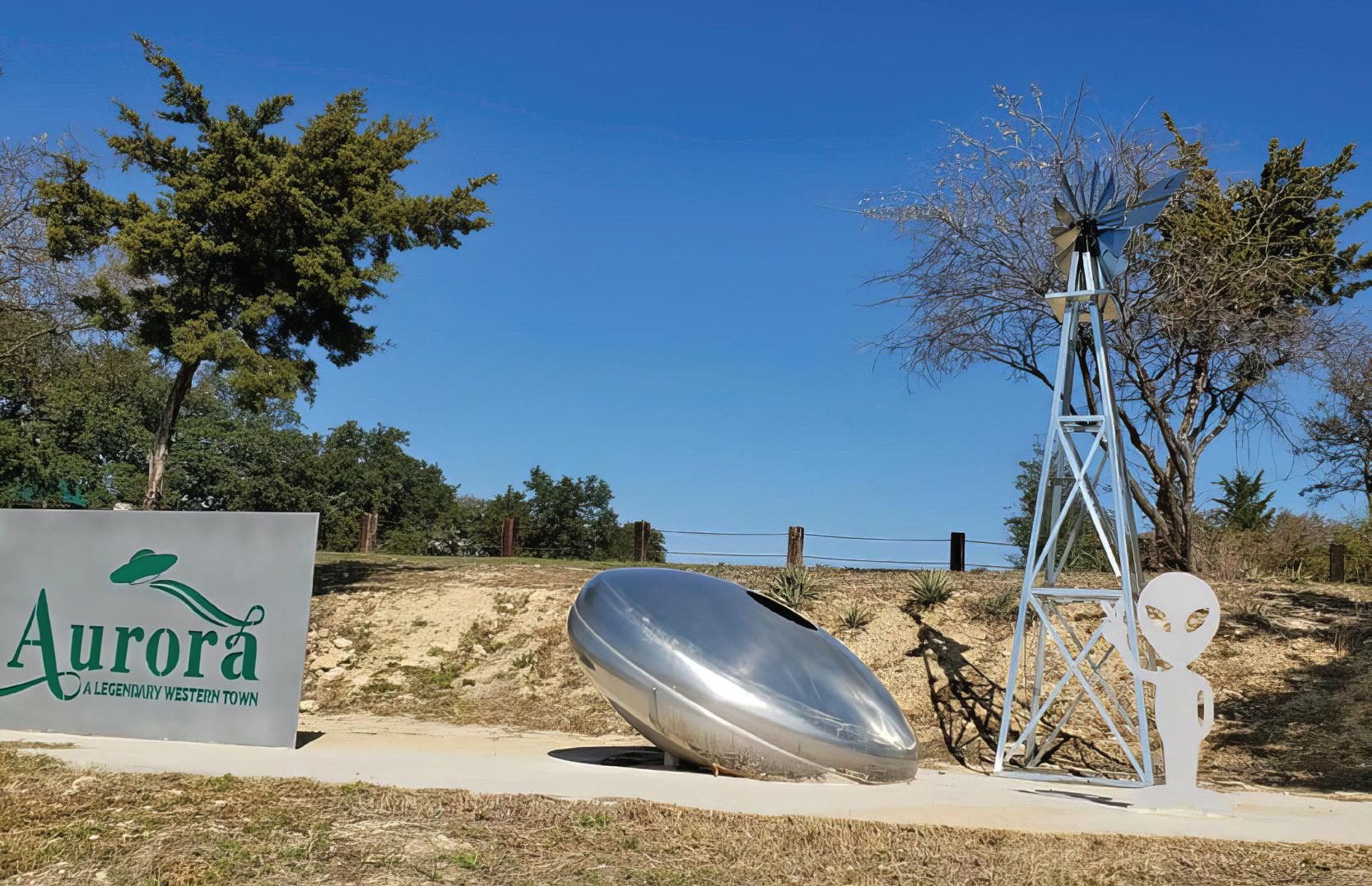
48 trail drives LIFE
rescued from a nearby truck stop, they refused to return to the site of the incident and left town the following day.
The men were working on a ranch north of Edinburg and about 4 miles west of Highway 281. They told deputies they had seen bright lights in the sky, heard a loud throbbing sound and experienced strong winds on what had been a calm night. Flames shot down from the sky in a beam and set fire to an area about a quarter mile long that burned their vehicles, mobile home and equipment. Prior to this incident, the crew of eight and local residents had noticed strange lights hovering over the fields on other occasions. On the night of the beam of fire, a local resident reported having seen a “cigar-shaped object” hovering over the field.

Inspired by the 1966 incident, the Annual Edinburg UFO Festival is hosted by the Edinburg Library and Cultural Arts Department and is ranked third in the United States and third in the world. Held this past August, the festival included conferences, celebrity UFO speakers, planetarium presentations, a tin foil hat station, costume contests and an “out of this world” laser light show. Plans are in the works for the next year’s festival to be held April 5th and 6th.
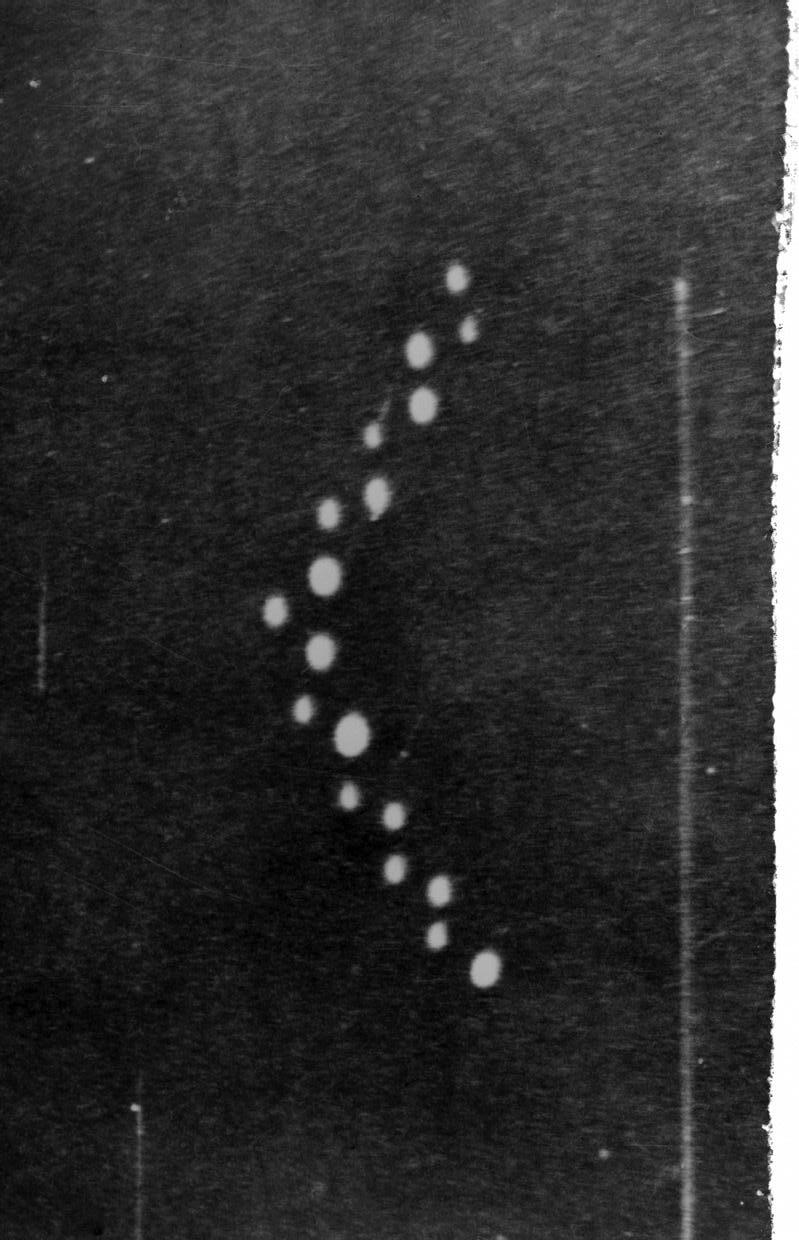
49 AUTHENTIC TEXAS FALL 2023
The Lubbock Lights, seen here in a photograph by Carl Hart Jr., would make national news in the pages of LIFE Magazine. They have been considered by the Air Force to be one of the most unexplainable phenomena observed. Observing scientists said that the lights traveled too fast and made too little sound to be from any known machine.
Astro Tourism and the New Push to Keep Texas’ Stars Big & Bright
by Philip Walker
Texas has many tourist attractions, but one of the most valuable is right above our heads every night. As skies grow more light polluted in cities, many people yearn for a night under the stars away from the lights. Many parents want to show their children the Milky Way and the constellations that they remember from their youth. Unnecessary nighttime light puts Texas at risk of losing its dark sky and natural nighttime environment; however, places designated as dark sky areas - where the stars truly are big and bright - are drawing increasing numbers of visitors.
Forbes Magazine and USA Today have called attention to astro tourism as the “next big thing” in tourism and Texas is well positioned for accommodating those interested in the night sky. From planetariums and observatories to star parties and dark sky places and events, there are numerous opportunities to enjoy the night sky while also learning about the importance of preserving the state’s dark skies.
Various parks, historic sites, conservation organizations, International Dark Sky Communities such as Dripping Springs, and the Greater Big Bend

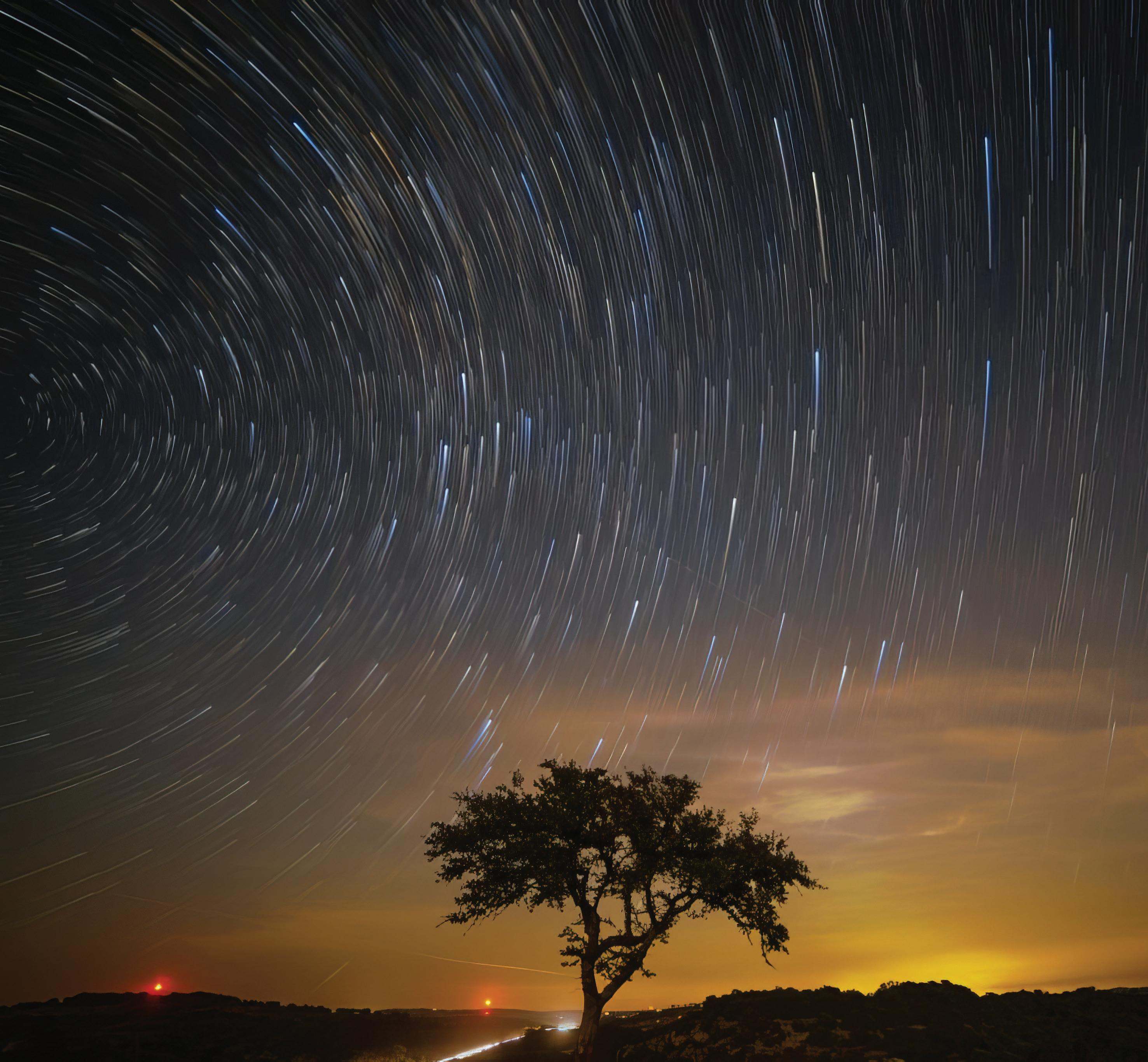
50 trail drives LIFE
International Dark Sky Reserve are leading the way in stargazing and preserving the night sky. Today, there are 21 designated International Dark Sky Places in Texas.
Interest in dark sky preservation has seen a huge swell of support with the aid of media attention and new dark sky certified areas. Because of excessive lighting 80% of the people in the United States can no longer see our own galaxy of stars, the Milky Way. The mission of the International Dark Sky Association is to promote the use of better lighting to help restore our view of the nighttime sky, while improving the safety and well-being of both people and wildlife.
The International Dark Sky Association defines light pollution as “the inappropriate or excessive use of artificial light.” Light pollution affects wildlife, the environment, the health of all Texans, and our ability to find awe in the natural night. Cindy Luingo Cassidy, DarkSky Texas President, states, “To protect land or water, you have to protect the living things that sustain both. In order to protect those living things, you must protect them from man-made light. All living things need darkness.”
As the official state chapter of the International Dark Sky Association, DarkSky Texas assists interested parties in becoming a designated dark sky place. Keep Texas Beautiful, Scenic Texas, Texan By Nature and Hill Country Alliance now have programs addressing the issue of light pollution.
Every property that embraces dark sky practices makes a
INTERNATIONAL DARK SKY PLACES IN TEXAS
Big Bend National Park
City of Dripping Springs
Copper Breaks State Park, Quanah
Enchanted Rock State Natural Area, Fredericksburg
Sierra La Rana Development, Alpine
Lost Creek Development, Austin
City of Horseshoe Bay
U Bar U Camp and Retreat Center, Kerrville South Llano River State Park, Junction
River Hills Neighborhood, Westlake
Big Bend Ranch State Park
Wimberly Valley, Wimberly
Devils River State Natural Area, Del Rio
Lakewood Village
City of Fredericksburg, Texas
Milton Reimers Ranch Park
Lyndon B. Johnson National Historical Park, Stonewall
Black Gap Wildlife Management Area City of Blanco City of Bee Cave
Great Big Bend International Dark Sky Reserve
difference. DarkSky Texas offers the inexpensive and popular “BE A STAR” Award that rewards landowners who contribute to conservation efforts by protecting the night sky. The program encourages landowners to evaluate their outdoor lighting and use lighting that eliminates glare, light trespass, and other forms of light pollution while at the same time helping landowners see better on their property. (For more info visit DarkSkyTexas.org.)
Audubon Texas has introduced a successful “Lights Out, Texas” campaign that has been embraced by numerous others including former First Lady Laura Bush’s conservation organization Texan By Nature. Each year during fall and spring migrations, nearly two billion birds travel through Texas navigating with the night sky. However, as they pass over metropolitan areas, they can become disoriented by bright artificial lights and skyglow which often causes the birds to collide with buildings or windows.
Originally launched in 2017 by Houston Audubon, the main objective of Lights Out, Texas is to reduce migratory bird mortality by increasing statewide participation of cities and building owners to turn off non-essential lights. It’s especially important to turn off non-essential lights from 11 pm to 6 am during the fall and spring migration periods.

Now get outside on a dark night (no moon is the best) and check out the most amazing free show on the planet. And do your best to help keep those Texas stars at night big and bright!
DON’T MISS
Dark Sky Texas DarkSkyTexas.org
Greater Big Bend International Dark Sky Reserve bigbenddark skyreserve.org
Eldorado Star Party Oct. 9-14, 2023 ElDoradoStar Party.org
Texas Star Party TexasStar Party.org
2024 Total Solar Eclipse and Star Party
April 5-9, 2024 Latham Spring Camp & Retreat Center, Aquilla
51 AUTHENTIC TEXAS FALL 2023
LIGHT TO PROTECT THE NIGHT Five Lighting Principles for Responsible Outdoor Lighting Useful 1 Use light only if it is needed Targeted 2 Direct light so it falls only where it is needed Low Level 3 Light should be no brighter than necessary Controlled 4 Use light only when it is needed Color 5 Use warmer color lights where possible
52 trail drives LIFE Midland Odessa Republic of mexico San Angelo Reservoir Middle concho river Northconchoriver Twin Buttes Reservoir Eldorado Sonora comstock rio grande langtry amistad reservoir pecosriver Sycamore creek Big lake Rankin Crane Toyah Lake PEcos Fort Stockton sanderson dryden sheffield Devils river pecos river Mccamey
Keep it Wild Along the Pecos Trail
3,5000 square miles
by Melissa Hagins
The landscape of the Texas Pecos Trail Region encompasses an area with the Rolling plains to the north, the Edwards Plateau to the east, the mountain basins and Chihuahuan Desert in the west and the brush country to the south. With almost 35,000 square miles in west and south Texas, the region also has many unique areas. You can play in the sand at the Monahans Sandhills State Park; hike your way up to ancient shelters to see rock art over 4,000 years old at Seminole Canyon State Park and Historic Site; and go underground at the internationally acclaimed Sonora Caverns with stalactites and stalagmites that formed over 2 million years ago.
Even though we are in West Texas, we do have water! The Pecos Trail Region is home to the largest spring-fed swimming pool in the nation at Balmorhea State Park and the third largest in Texas at Fort Clark Springs. There are plenty of places in our region for water-based activities: Lake Amistad and the Devil’s River Natural Area near Del Rio, the South Llano River in Junction and, of course, our namesake that runs through most of the region – the Pecos River.
The Devil’s Sinkhole in Rocksprings is a huge hole in the ground that formed several thousand years ago. From May thru October, visitors to this state park can watch over a million bats fly out of the cave at dusk. Near Brackettville, Kickapoo Caverns offers birding, camping, guided cave tours and another opportunity to observe bats leaving their cave at dusk.
Let’s not overlook the “Law West of the Pecos”
– Judge Roy Bean. He was born in Kentucky,
Historic Texas Highway Department signage from 1968 promoting the Pecos Driving Trail, known today as the Texas Pecos Trail Region. These bright yellow signs were placed in rest stop areas within the driving trail area.
53 AUTHENTIC TEXAS FALL 2023
Angelo telegraph Rocksprings creek Brackettville West nueces River nueces River Junction San Saba River
San
migrated to various points across the southwest and had numerous bouts with the law before arriving in Texas during the Civil War. Eventually he was appointed justice of the peace in Pecos County and set up a saloon and law office in Langtry. Bean’s saloon was called the Jersey Lilley, named for Lilley Langtry, a British stage actress with whom he was infatuated but never met. A replica of his saloon is in Pecos at the West of the Pecos Museum and on the original saloon site in Langtry at the Judge Roy Bean Travel Information Center operated by the Texas Department of Transportation. Judge Roy Bean and his son Sam are buried at the Whitehead Memorial Museum in Del Rio.
The oil history of the Permian Basin is presented at the Petroleum Museum in Midland. Learn the story of the Santa Rita No. 1 in Big Lake –the well that opened the biggest oilfield in America, proved there was oil in West Texas and brought a new breed of settlers to the area. Texas has experienced numerous oil booms and busts, but everyone knows the Permian Basin is America’s largest and most productive source of oil.
Numerous sites and museums share the frontier and military history of the Pecos Trail Region. There are four pre-Civil War forts in our region: Fort Duncan in Eagle Pass,
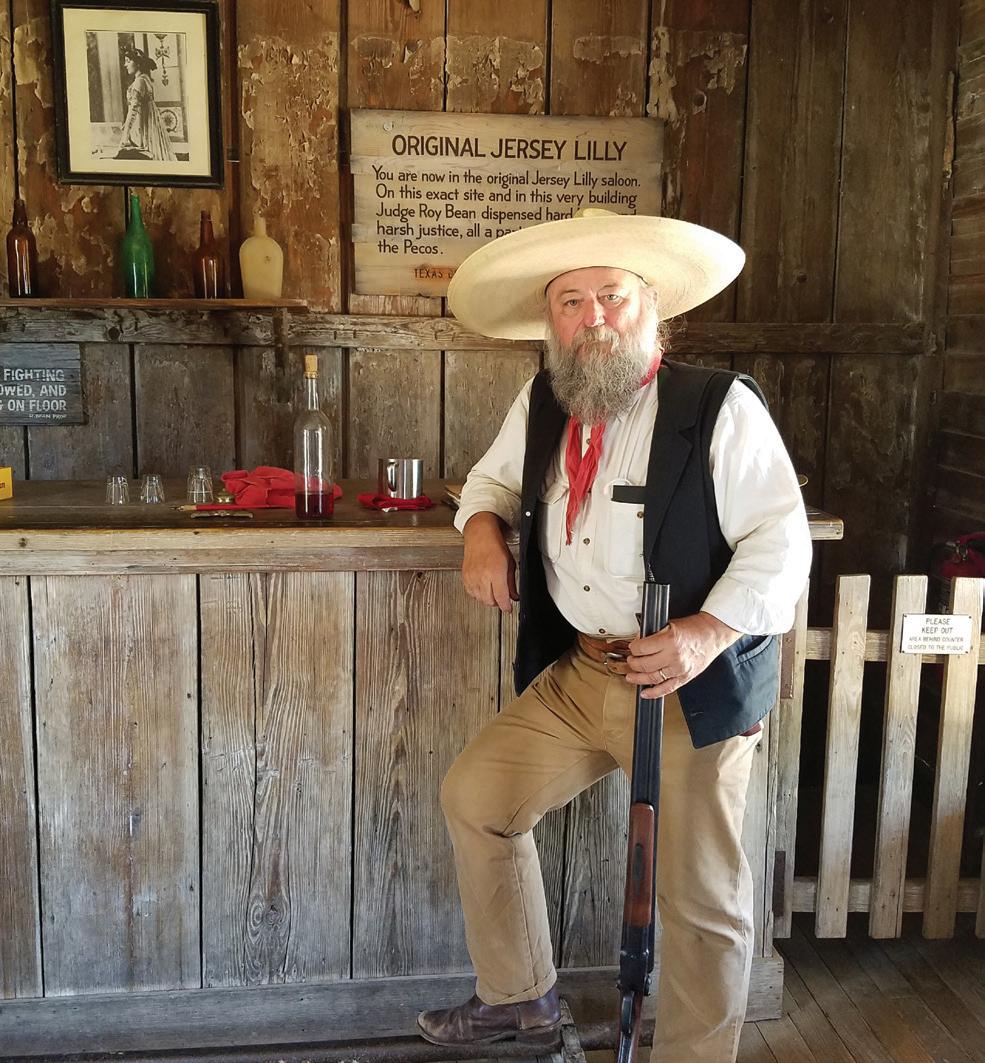
COUNTIES ANDREWS CRANE CROCKETT
ECTOR
EDWARDS
GLASSCOCK
KIMBLE KINNEY LOVING
MARTIN
MAVERICK MIDLAND
PECOS
REAGAN REEVES
STERLING
SUTTON
TERRELL UPTON
VAL VERDE
WARD
WINKLER
STATE PARKS
Balmorhea State Park
Monahans
Sandhills State Park
Seminole Canyon State Park
Kickapoo Caverns
Devils River Natural Area
Devil’s Sinkhole
South Llano River
State Park
THC STATE HISTORIC SITES
Fort Lancaster
Bush Family Home
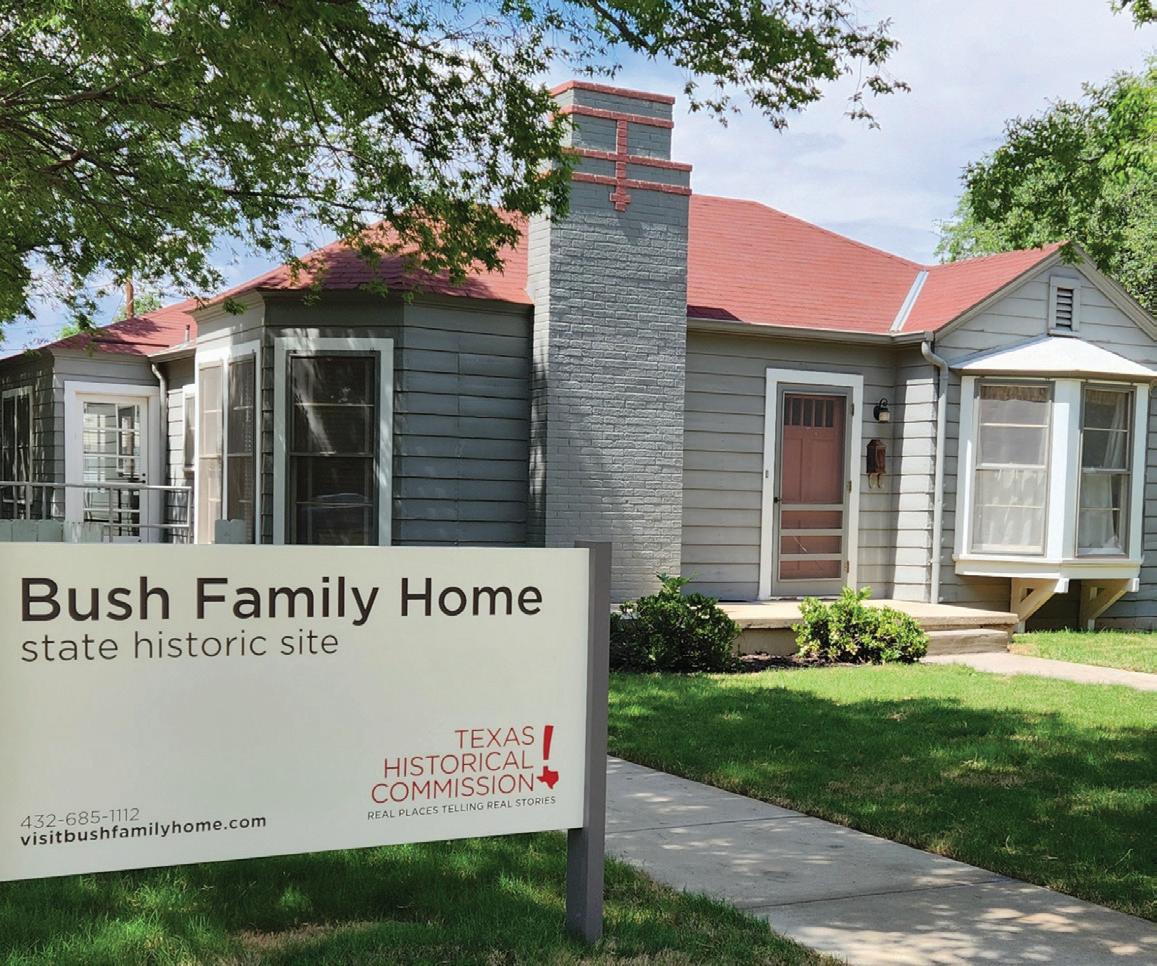
Fort Clark Springs in Brackettville, Fort Stockton and Fort Lancaster outside of Sheffield. Fort Lancaster State Historic Site is one of the state’s most remote forts and provides visitors with a taste of what it would have been like to live on the frontier. Other military history museums are the Laughlin Heritage Museum in Del Rio, the Rattlesnake Bomber Museum in Monahans and The American Airpower Museum in Midland.
All our communities have a museum or historic site that shares their contribution to the heritage and culture of Texas and even our country. The Carmelite Monastery in Stanton takes you back in time when monks moved to Marienfeld to bring the first Catholic church to the area. The Roy Orbison Museum in Wink tells the story of his life in west Texas; it is open by appointment only. One of the newest state historic sites is in Midland: The Bush Family Home. The modest-yet-comfortable house is the only place in the nation that can claim to have been the home of two governors, two U.S. presidents and a First Lady.
Our organization – the Texas Pecos Trail – is a non-profit with one employee and governed by a board of directors. Current board members are Chair Joe Cruz of Eagle Pass, Vice Chair Connie Low of Junction, Treasurer Jim Collett of Midland, Secretary M.K. Marshall of Midland, Past Chair Andrew Barnebey of Rocksprings, Jackie Olson of Sonora,
54 trail drives LIFE
The Texas Pecos Trail Region is one of the state’s ten heritage tourism regions based around the “Texas Travel Trails” created in 1968 by Governor John Connally and the Texas Highway Department (now the Texas Department of Transportation). The “travel trails” were established in conjunction with HemisFair, an international expo commemorating the 250th anniversary of San Antonio’s founding. They were used as a marketing tool to help visitors and residents explore specific portions of our vast and diverse state.
Today, the state’s heritage trail program is centered on those ten scenic driving trails with a regional approach that includes communities and cultural and heritage attractions both on and off the trail. Ten regional non-profit organizations named for those original trails comprise the Texas Heritage Trails Program (THTP) which is directed by the Texas Historical Commission (THC). This nationally recognized program promotes protecting and preserving historic resources for the use, education, economic benefit, and enjoyment of present and future generations.
The THTP began with the establishment of the Texas Forts Trail Region in 1998. Additional trail regions were brought on board and the suite of all ten trail regions was completed in 2005 with the additions of the Texas Pecos and Hill Country Trail Regions.

55 AUTHENTIC TEXAS FALL 2023
FACTS FUN
In the Texas Pecos Trail Region, you will find:
The least populated county in Texas – Loving County (county seat Mentone), population 57.
The second largest county in Texas – Pecos County (county seat Fort Stockton) with 4,764 square miles.
The oldest continuously operating winery in the state – Val Verde Winery in Del Rio which was established by Italian immigrant Frank Qualia in 1883.

Where the boundary between Texas and New Mexico makes a ninety degree turn from east-west to north-south – a marker located a few miles north of Kermit on FM 1218 where you can stand in two states at once!

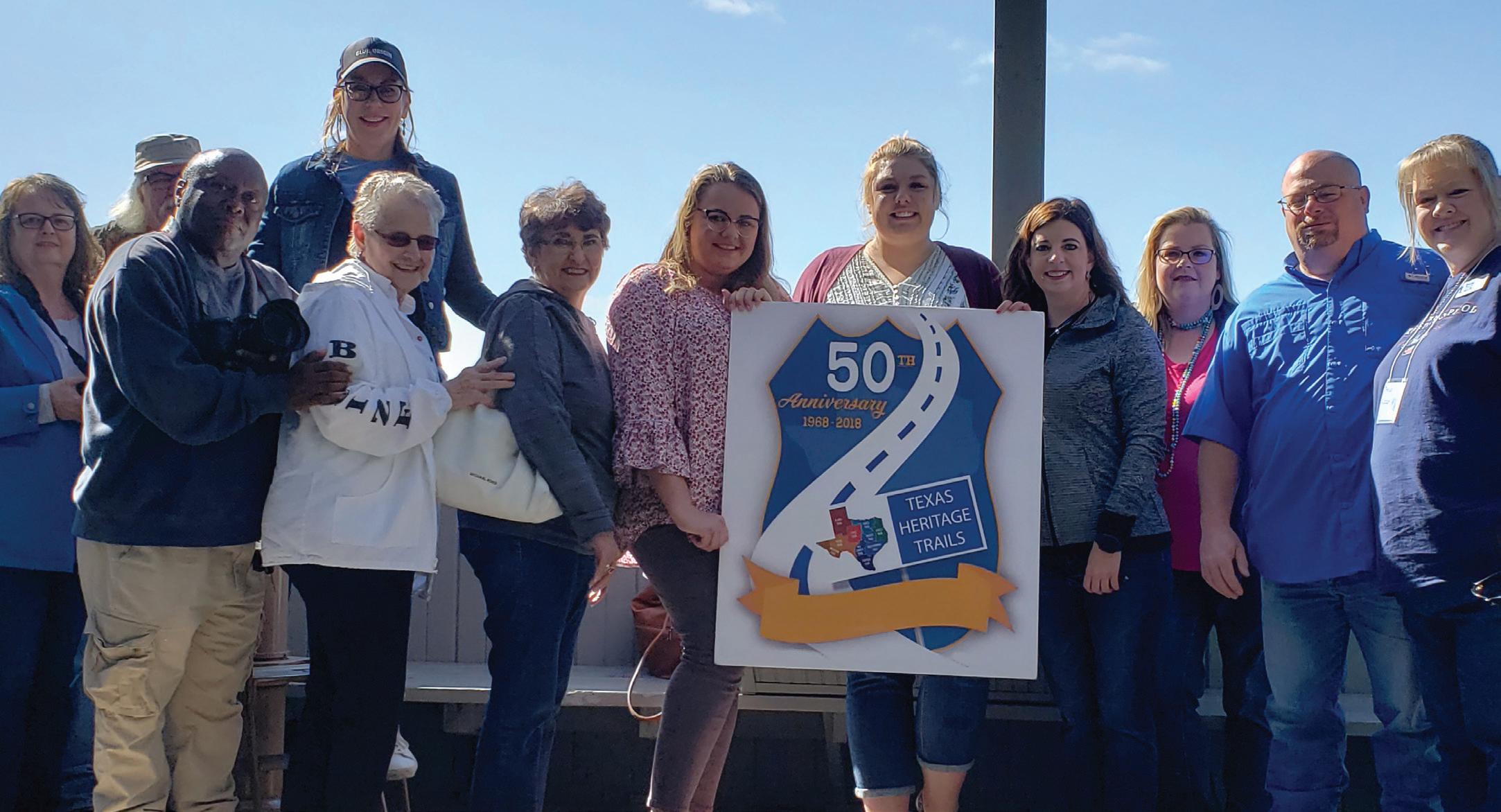
Zenaida Rodrigue of Eagle Pass, Betty Damron of San Angelo, Brenda Kizziar of Monahans and Ex-Officio Jefferson Spilman of Sheffield. The board members come with many different skills and experiences. They have a variety of interests and come from diverse professions including bankers, museum directors, Main Street managers, a state historic site manager, county historical commissioners and state park friends. They represent the communities within the Pecos Trail region and provide a regional perspective for this statewide program.
As a participant in the Texas Heritage Trails Program, the Pecos Trail receives base funding from the Texas Historical Commission and then works to raise funds through different projects that benefit both the region and the trail region. The Pecos Trail partnership program provides benefits for our partners and helps fund different projects benefitting the region. My role as the executive director is focused on collaboration: I work with communities and counties, chambers of commerce and visitor bureaus, and attractions and museums and state agencies. Our
56
In 2018, the Texas Heritage Trails celebrated 50 years of the driving trails by hosting caravans traveling the trail. At one of the many stops, participants in the Pecos Trail caravan took a group photo op.
goal is to increase visitation to the region and build awareness of Texas’ historical and cultural heritage.
The Pecos Trail collaborates with others on a range of promotional projects. We travel around the state to attend tradeshows where we distribute information from partners. Come visit us in McAllen at the Winter Texan Expo or at the Fort Worth Home and Garden Show and look for us at shows within our region.
The largest travel information booth at the State Fair of Texas is hosted by the ten trail regions that make up the Texas Heritage Trails Program. Located in the GoTexan pavilion, we’re proud to provide information on state parks, material from the Texas Dept. of Transportation such as maps and event calendars, state historic site and heritage travel literature from the Texas Historical Commission, plus brochures from the communities, museums and sites within our own region.
In 2018 the Pecos Trail Region joined the Heritage Trails LLC dba Authentic Texas. We actively participate on the Authentic Texas editorial board where we have a voice on the content of this publication. This year we’ve had the honor of working with the Texas Ranger 2023 Bicentennial team and have enjoyed building
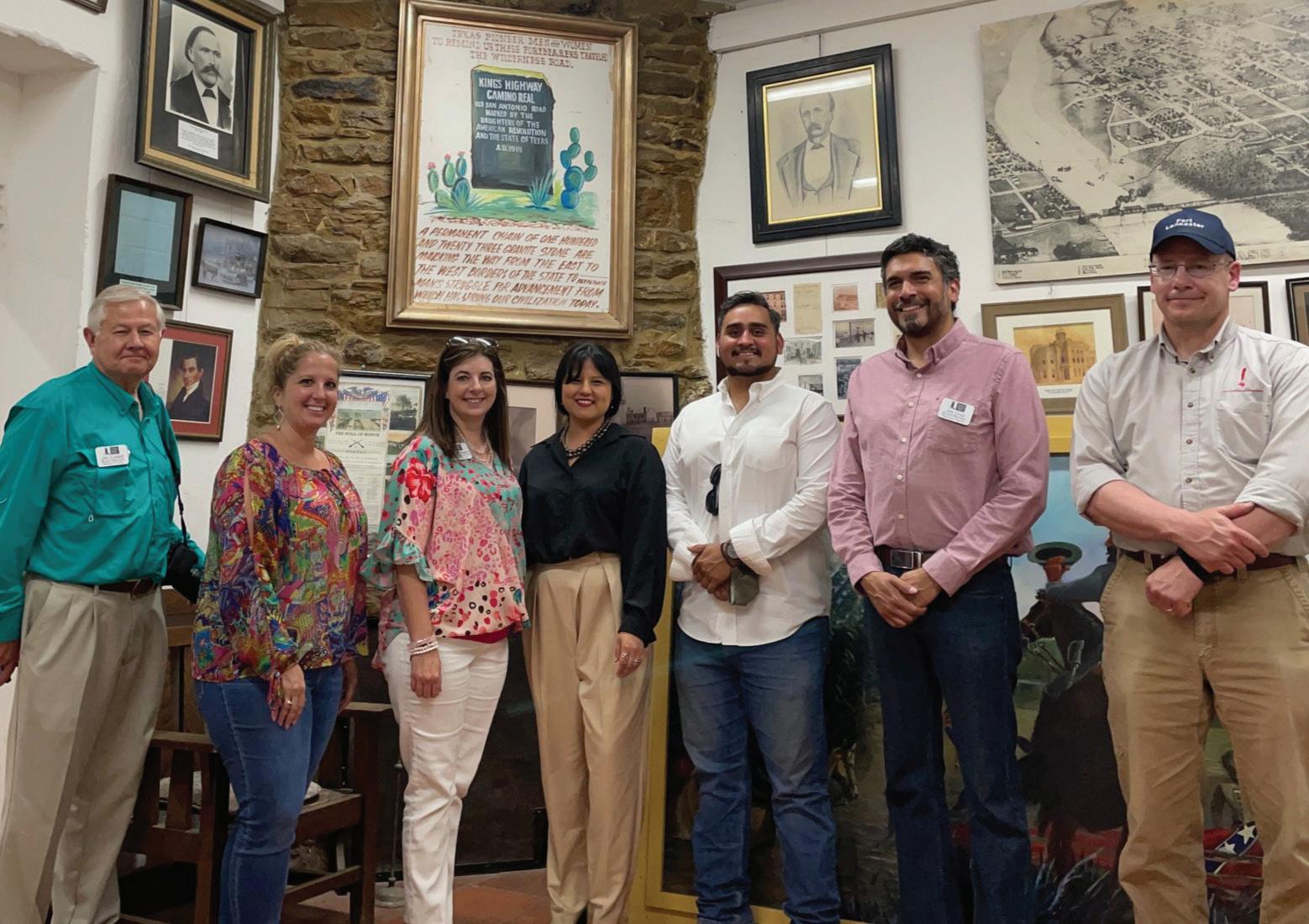
relationships with former and current Texas Rangers as well as those supporting bicentennial celebrations. This has been very rewarding and has helped us learn even more about the history of our great state.
I hope that you have learned a little about our wonderful part of the state – the Texas Pecos Trail Region. We are proud to represent so many different and unique places in west and southwest Texas. You’re invited to follow us on our social media channels and use our website as a resource. If you are planning to travel to or through the Pecos Trail Region, please stop and talk with our partners to learn more about the history of their towns.
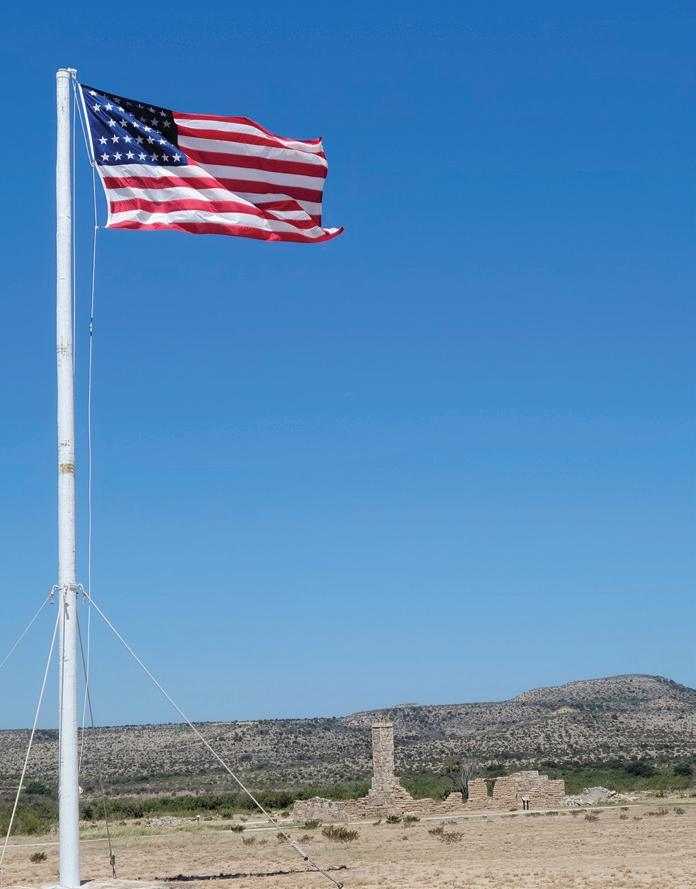
MEET
THE EXECUTIVE DIRECTOR
Melissa Hagins just celebrated her seven-year anniversary as the executive director of the Texas Pecos Trail Region.
Melissa’s father served as a high school football coach and athletic director in six Texas communities before the family landed in Midland to stay. She grew up in the 80’s with the boom and bust of the Permian Basin. After graduating from Texas Tech University, she returned to Midland where she gained experience in photography, accounting, retail management and the tourism industry. She was a volunteer and former board member for the George W Bush Childhood Home where she enjoyed giving tours of the home and interacting with visitors.
In her spare time these days, Melissa serves as vice chair for the Midland County Historical Society and treasurer for the Midland Animal Shelter Adoptables Rescue. In the summer, she is active both on and off stage with the Summer Mummers, the longest continuing melodrama in the United States.
Melissa says, “I am blessed to be a part of this amazing regional organization where I have the opportunity meet interesting people, learn about and share our amazing Texas history, see awesome and diverse landscapes, work with remarkable communities and travel the great state of Texas! Who could ask for anything more?”
57 AUTHENTIC TEXAS FALL 2023
Above Fort Lancaster is one of the region’s State Historic Sites.
Below The Texas Pecos Trail Region board of directors met recently at Fort Lancaster SHS.
Jake & Dorothy’s Café
Celebrating 75 Years of Chicken Fried Greatness
 by Julie Smith
by Julie Smith
When Jake and Dorothy Roach opened their café in June of 1948, Harry Truman was president, and the latest inventions were the transistor radio and the polaroid camera. But the locals in Stephenville believe the most noteworthy invention in 1948 took place at Jake & Dorothy’s Café: the waffle fry. You’re really missing out if you haven’t experienced the delicious crisp, waffle fried potato at Jake & Dorothy’s.
Then there is the chicken fried steak – served on top of a bed of cream gravy to keep it crispy. Hands down, it’s the best chicken fried steak you will ever eat in your entire life. Ever. In fact, Jake & Dorothy’s Café recently won Dave Campbell’s Texas Football “2022 Best Game Day Grub.”
Known as the City of Champions, high school football is big in Stephenville and the Yellow Jackets have taken the state title six times. Jake & Dorothy’s
Café has served meals to their champions for over seven decades, as well as countless visiting football teams. Sports has been a big part of the Café. Kerry Jane Roach, daughter of Jake & Dorothy and now proud owner of the café, recalls how much her parents loved college and high school football. As a track and basketball star athlete she competed across the country and qualified for Olympic tryouts in track and field. Kerry’s contributions to the Yellow Jacket legacy are legendary and she was inducted into the Stephenville High School Athletic Hall of Fame in 2007.
In June, Kerry celebrated the 75th Anniversary of Jake & Dorothy’s Café with special pricing on menu favorites. She was honored with a key to the city and a proclamation from the town’s mayor. Additionally, the Texas Historical Commission awarded the Café the esteemed Texas Treasure Business Award with special recognition for being a
58 Eats & Drinks LIFE
FORTS TRAIL REGION
STEPHENVILLE
Above Jake & Dorothy’s mouthwatering chicken fried steak with waffle fries.
family-owned business for over 50 years. Governor Greg Abbott also honored Kerry with a proclamation marking the noteworthy occasion.
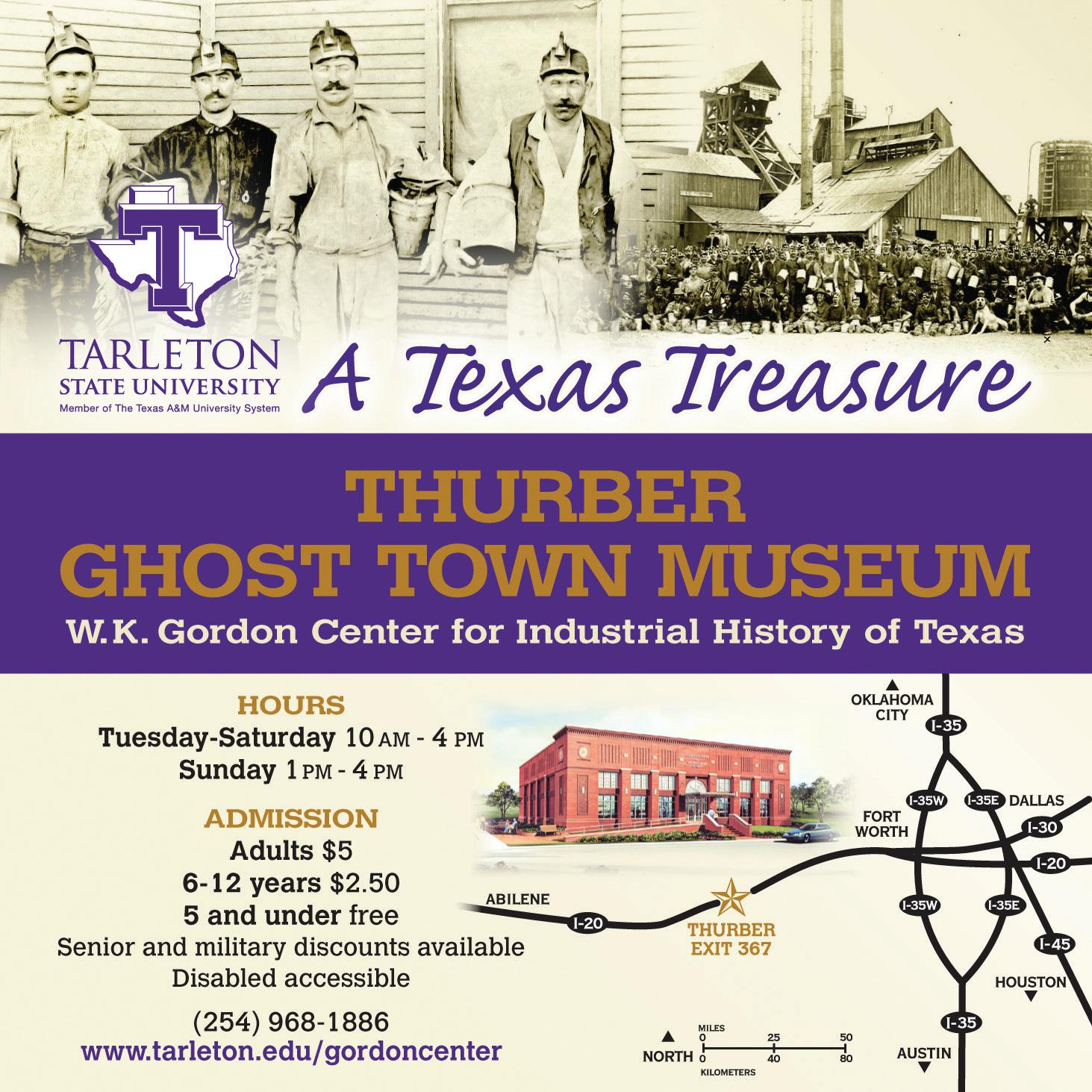
Jake & Dorothy’s Café continues to be a favorite for locals, visitors, Tarleton State University alumni and visitors. The café has adapted to meet the needs of changing times by accepting credit cards and becoming a non-smoking establishment, but a dedication to serving great food remains the same.
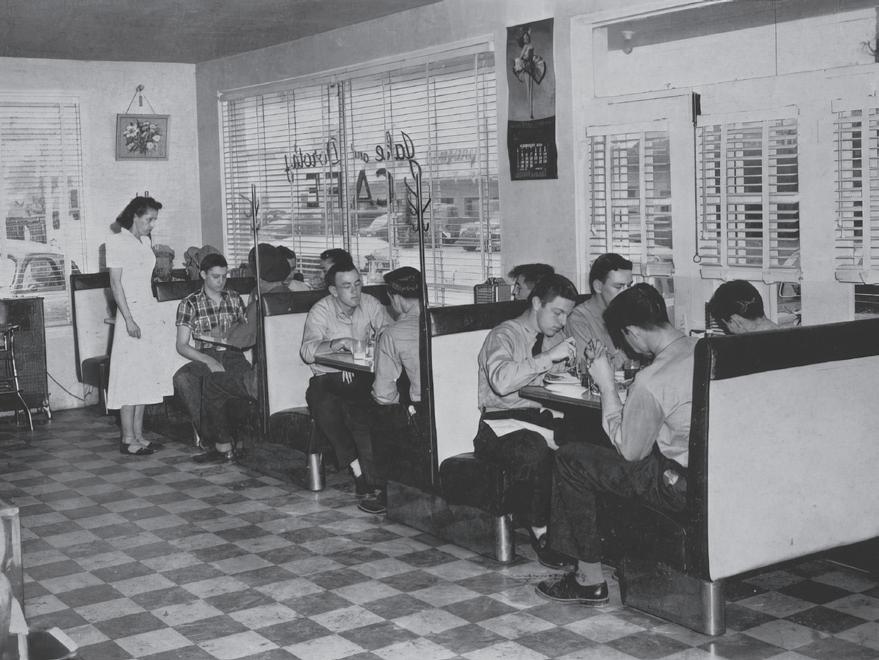
There are many things that make Jake & Dorothy’s Café one of the state’s top enduring eateries. From the morning coffee crowd to Tuesday Dollar Burger Night, many of the hallmarks that made Jake & Dorothy’s Café one of the state’s top eateries endure. Some say it’s the waffle fries, some say the chicken fried steaks, others love the hamburgers and onion rings. But if you ask Kerry Jane, she’ll tell you it’s the people that make Jake & Dorothy’s Café so special. Come see for yourself and come hungry!
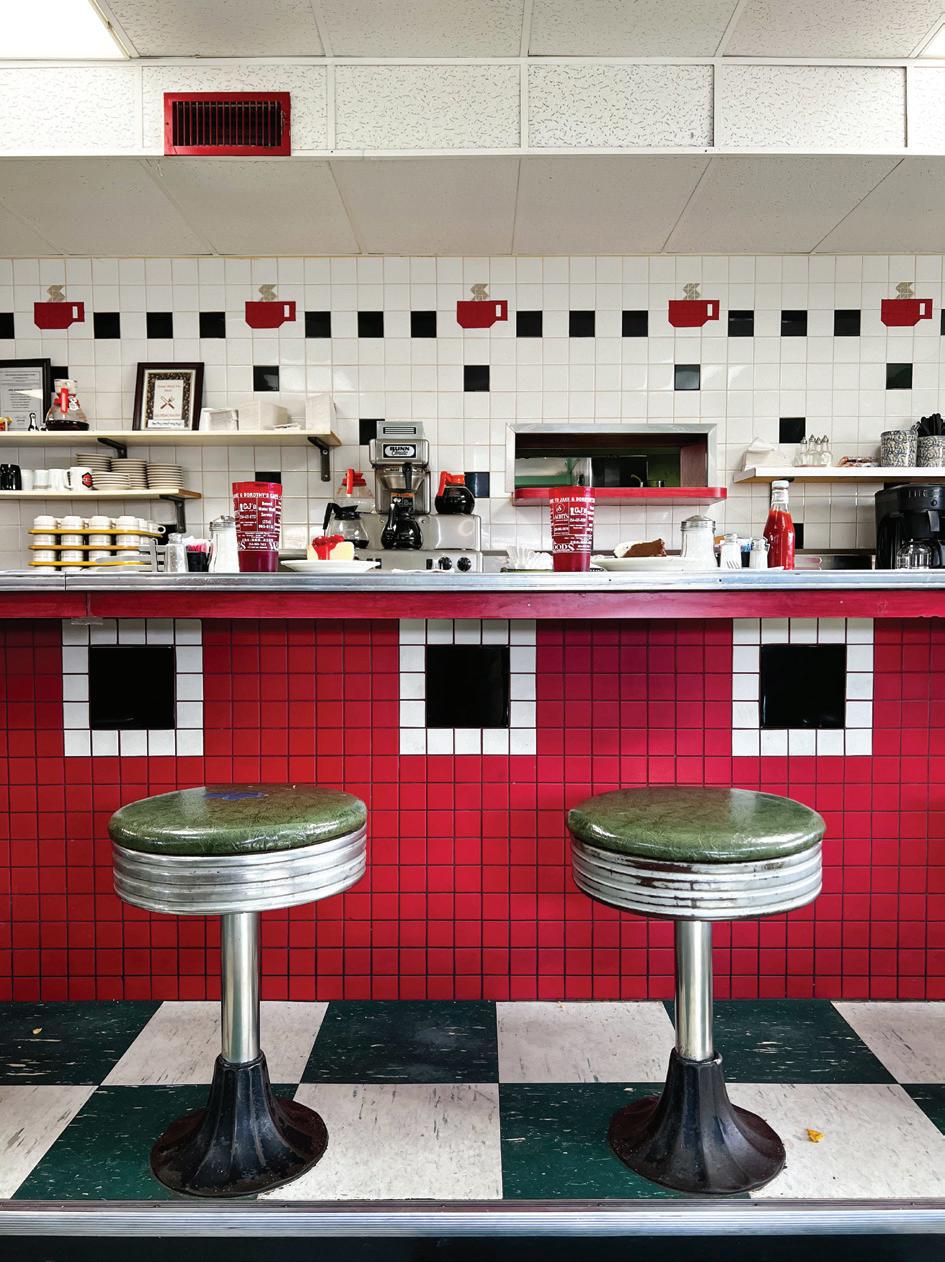

59 AUTHENTIC TEXAS FALL 2023
Visit Stephenville visitstephen ville.com Jake & Dorothy’s Café 406 East Washington St. Stephenville, TX 76401 (254) 965-5211 DON’T MISS
Left Colorful counter at Jake & Dorothy’s.
Upper right
Historic photo from 1951.
Lower right Jake and Dorothy Roach, founders of Jake & Dorothy’s Café
Slaton Bakery
A Taste of Tradition
by Allison Kendrick
Tracing its history back to 1923, the Slaton Bakery is one of the oldest continuously operating bakeries in Texas. Three generations of dedicated bakers have made life sweeter for West Texans; today folks across the state can enjoy treats from this family that is still committed to quality and taste.

The town of Slaton is located about fifteen miles southeast of Lubbock on U.S. Hwy 84. Established in 1911 by the Pecos and Northern Texas Railway, Slaton was the center of the largest division in the Santa Fe System. The town quickly grew and became the westernmost German settlement in Texas. The Blue Ribbon Bakery and City Bakery opened in 1921 and then consolidated in 1923 to form the Slaton Baking Company.
Barney and Ollie Mae Wilson purchased the
bakery from Mr. R.D. Hickman in 1943. They persevered through rationing during World War II, introduced sliced hamburgers and hot dog buns to the area, distributed Mrs. Baird’s products, and produced pastries.
Sherrill, the Wilson’s youngest son, and his wife Robin took over operations in 1973. The business moved to its present location in 1982, which ironically enough was the original location of the Bakery.
Chad Wilson, the son of current owners Sherrell and Robin Wilson recalls growing up in the bakery. He helped with dishes, sweeping and even snuck a nap or two on a flour sack in the back. He went on to Texas Tech University to gain a degree in finance. However, in 1994 he felt called to come back to the family business. He now says he works with a sweeter type of dough.
60 Eats & Drinks LIFE
PLAINS TRAIL REGION SLATON
For a while, Slaton Bakery remained a “West Texas Best Kept Secret,” but their popularity grew as more people discovered the bakery’s tasty cookies, cakes, pies, pies and pastries. Chad realized people were driving several hours to order baked goods, and this started the journey to place the delectable treats in retail locations across the state.
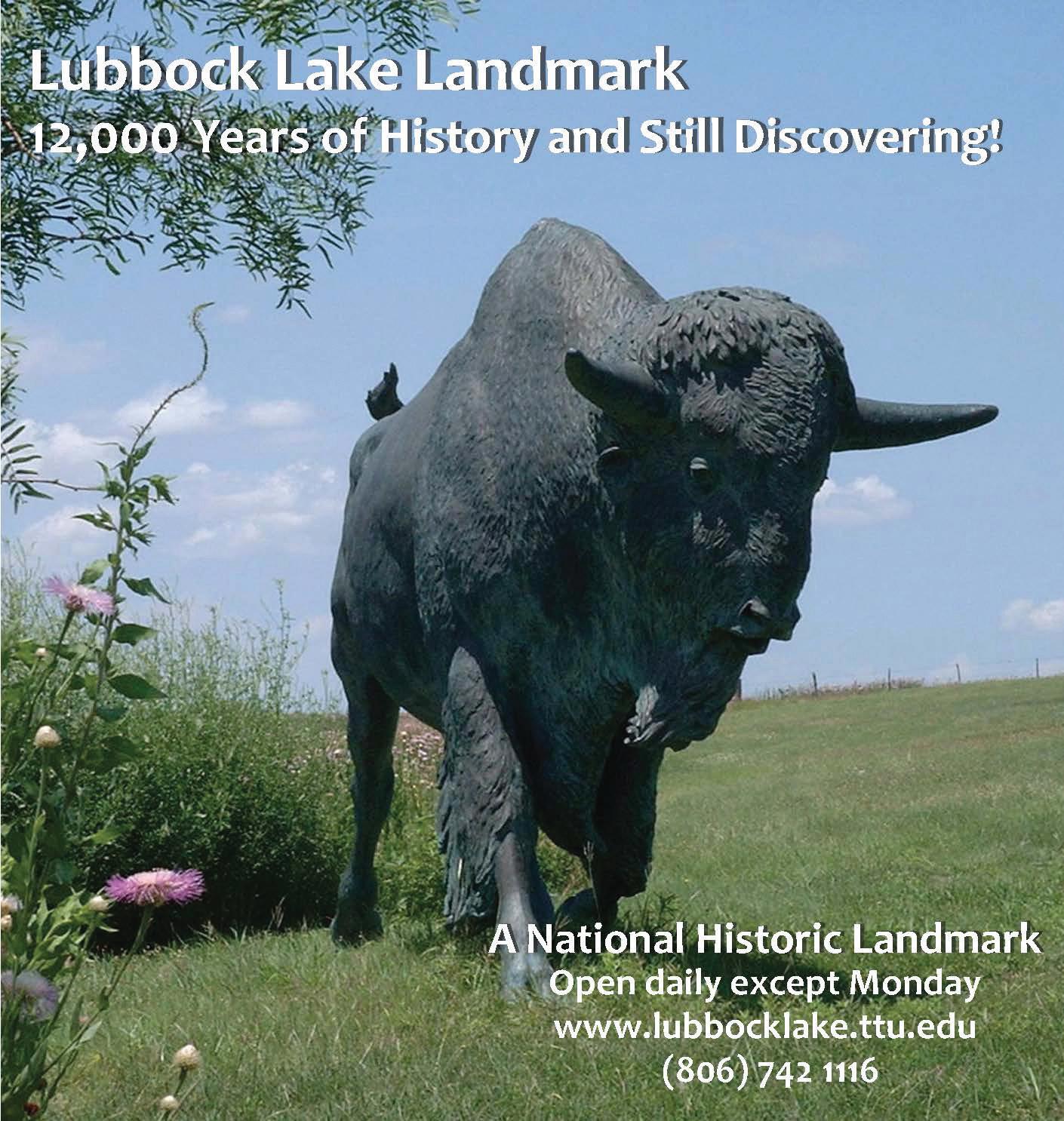
Slaton Bakery’s popular Vanilla Wafers and Gingersnaps are now carried by H-E-B, Central Market, United Supermarkets, Market Street, and other retailers.
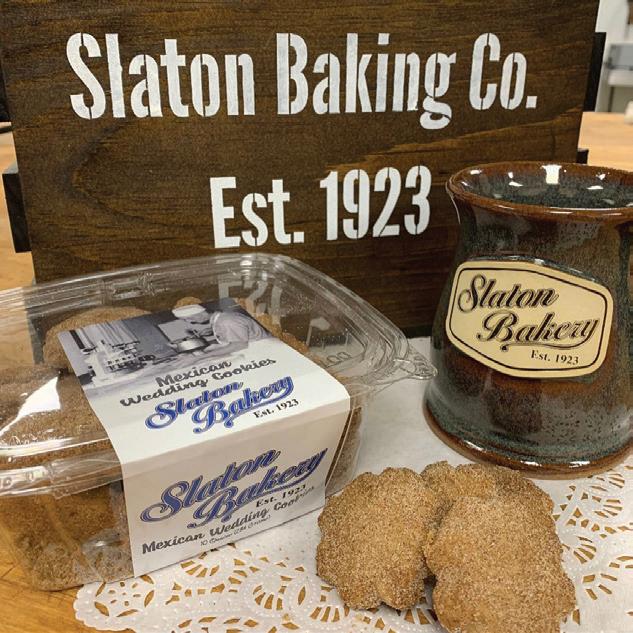
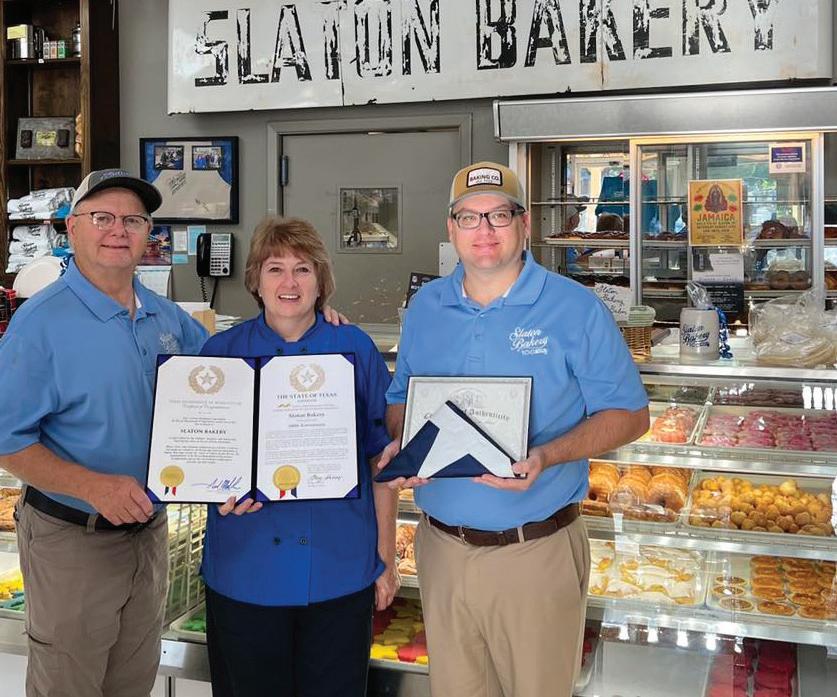
We sat down with former Slaton resident, Dolores Mosser, to discuss her Slaton memories and recap of the 100th Anniversary Celebration. “My husband, Steve, is a Slaton native and remembers the elder Wilson’s shop on Division Street and trips to the Bakery on Sunday after Mass. Purchasing enough donuts for seven hungry kids made for a good sale! Our time living in Slaton from 1985 to 2004 saw many stops at the Bakery before and after school much to the delight of our kids. On June 10, 2023, we were delighted to attend the Wilson Families celebration of being in business for 100 years. Free cookies, hot dogs and even a newly brewed bakery beer by Lubbock Two Dos Brewery was on tap. This sounded like a good reason to make the quick trip (15 miles) from our home in Lubbock.
The 100th Anniversary party was very exciting with crowds of people visiting with Sherrel and Robin Wilson the current second-generation owners and their son Chad. Chad has been the director of expanding their sweet products with opening a commercial cookie factory nearby. The downtown store on the Square was busy with shoppers.
The Wilson’s guest book lists shoppers from around the world and for the celebration they had cards available to express good wishes and share memories. Ours was the occasion of our daughter’s wedding. After the wedding a friend commented that it was too bad about the wedding cake. I asked, “What about our beautiful wedding cake?” It seems that I was not informed the cake table
collapsed and the Wilsons were called and told that the cake was destroyed in the fall. They rushed back to Slaton and built a new cake! We never knew that anything happened. The Wilson’s were our heroes and saved the day.
We thoroughly enjoyed the 100th Anniversary festivities, and a good time was had by all. I finished my last thumbprint cookie the next day after church, so it will be time for another quick trip to Slaton sooner than later.
Slaton Bakery is more than just a place to indulge in delightful treats; it’s a living testament to the power of tradition and the enduring spirit of community. Whether you’re a local looking for a taste of nostalgia or a traveler seeking an authentic Texas experience, a visit to Slaton Bakery promises to be a delightful journey back in time, filled with mouthwatering delights and warm, friendly smiles.
DON’T MISS
61 AUTHENTIC TEXAS FALL 2023
Slaton Bakery 109 South 9th St. Slaton, Texas 79364 (806) 828-3253 theslaton bakery.com Slaton Harvey House 400 Railroad Ave. Slaton, TX 79364 (806) 828-5900 slatonharvey house.com
Above Sherrell and Robin Wilson with son Chad with proclamations recognizing the 100-year anniversary of Slaton Bakery.
Casita Gerardo
Serving homemade Tex-Mex
by Melissa Hagins
Already proven entrepreneurs, Felipe and Celia Morales saw a need in Midland, Texas, for homemade Mexican food. Along with other family members, they operated several other businesses: a beauty salon, a barbershop, a record store and a financial and insurance company. However, Felipe and Celia decided to open a Mexican food restaurant. They traveled across the state to El Paso, San Antonio and South Texas visiting different restaurants. They talked to owners, took menus and worked with cooks to understand the best way to run a restaurant.
In 1977, Casita Gerardo’s opened. The café started with a small kitchen and seats for just 20 customers. Jerry Morales said, “Mom was a cook and Dad was the salesman. Mom was the financial guru and Dad was the marketer. We were the staff – my
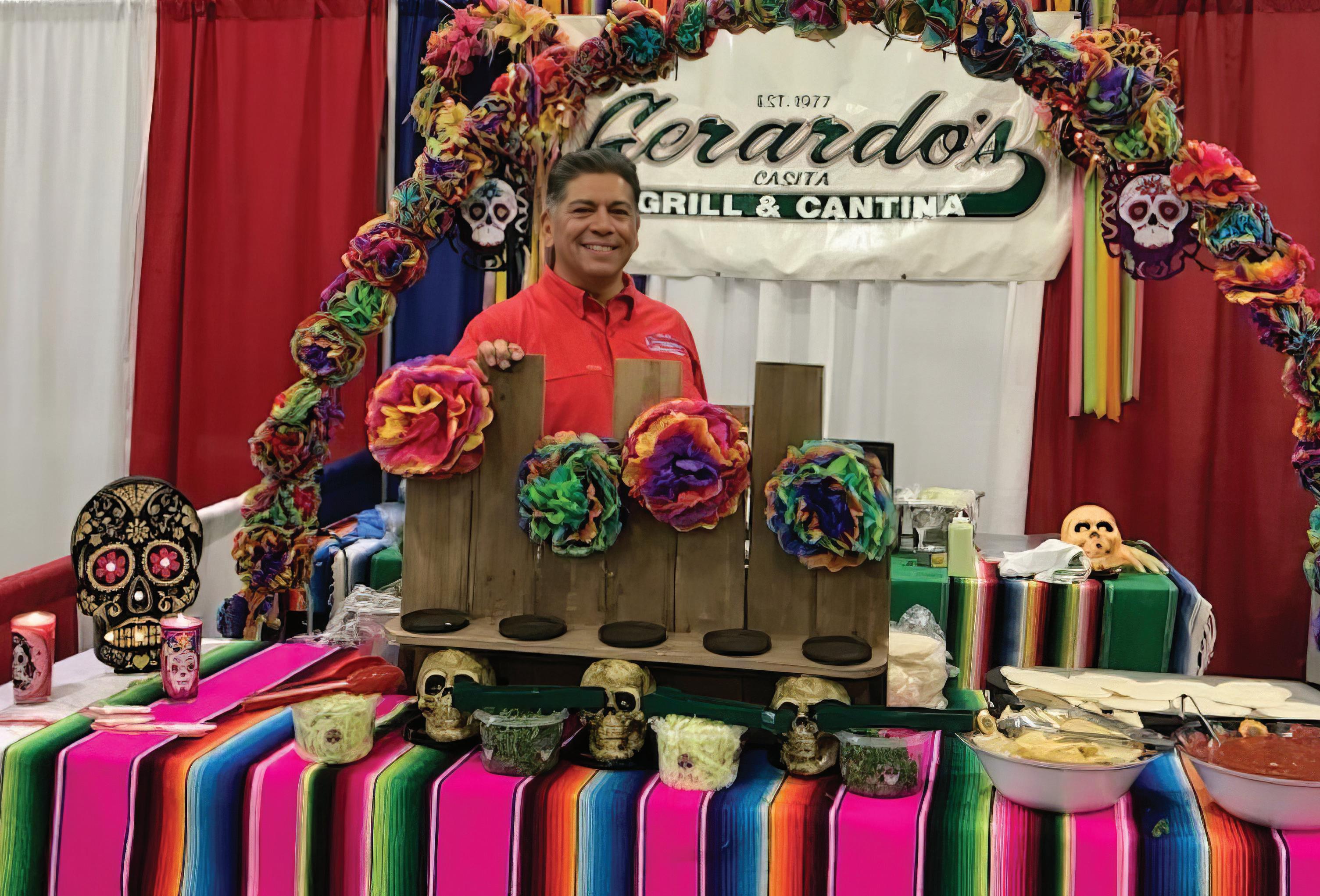
brother Novert , sister Cindy and I worked in the restaurant when we were not in school.”
Jerry shared that Casita Gerardo’s was a family adventure. His parents would open their insurance company and work there from 8 to 11 p.m. They would stop in and check on the kitchen to make sure things were going well. Dad would work the lunch rush and close the restaurant at 2 p.m. Then he would go back to the insurance business until time for the dinner rush. On the weekends, the boys would bus tables and Cindy would wait on tables. The boys would race to collect the tips, until someone told on them and they got in trouble for taking money from the servers. During the school year, Aunt Paula and Uncle Ruben would come over from closing their businesses for the day and work in the restaurant. Ruben would cook and Paula would wait on tables, enabling Felipe and Celia take care of the
62 Eats & Drinks LIFE
PECOS TRAIL REGION MIDLAND
kids and make sure they got their homework done.
In 1984-85, Felipe and Celia decided to focus on their insurance business so Jerry’s uncles bought the restaurant. Uncle Art opened another location in Loveland, Colorado, while Uncle Alfred and Aunt Velma continued to run the original Casita Gerardo. Eventually the restaurant closed.

In the meantime, Jerry worked in Columbus, Ohio for a major restaurant company. When it sold, Jerry and his wife Meredith decided they wanted to come back to Texas. Although he acquired his insurance license, Jerry decided to take what he learned and reopen the restaurant his parents first opened. He purchased the building and in 1997, Gerardo’s Casita opened once again. The restaurant was open seven days a week and offered catering. Jerry’s first catering job was for a Chamber of Commerce function for 500 people.
In early 2000, Jerry and
Meredith opened a location in Odessa that was quite successful. Although the restaurant did well, it eventually closed due to land costs. Next, they opened a location in Claydesta in One Wall Tower. Several years later, Mulberry Café opened. Meredith and oldest son Chris helped out when Jerry became busy serving on the city council and then as mayor of Midland.
Felipe passed away 3 years ago.; Celia is still supporting her kids and grandkids. In 2023 Jerry was inducted into the Texas Restaurant Association’s Hall of Honor. He is moving on to the next phase of life but says, “I will always be there for support, just like my parents were for me.”
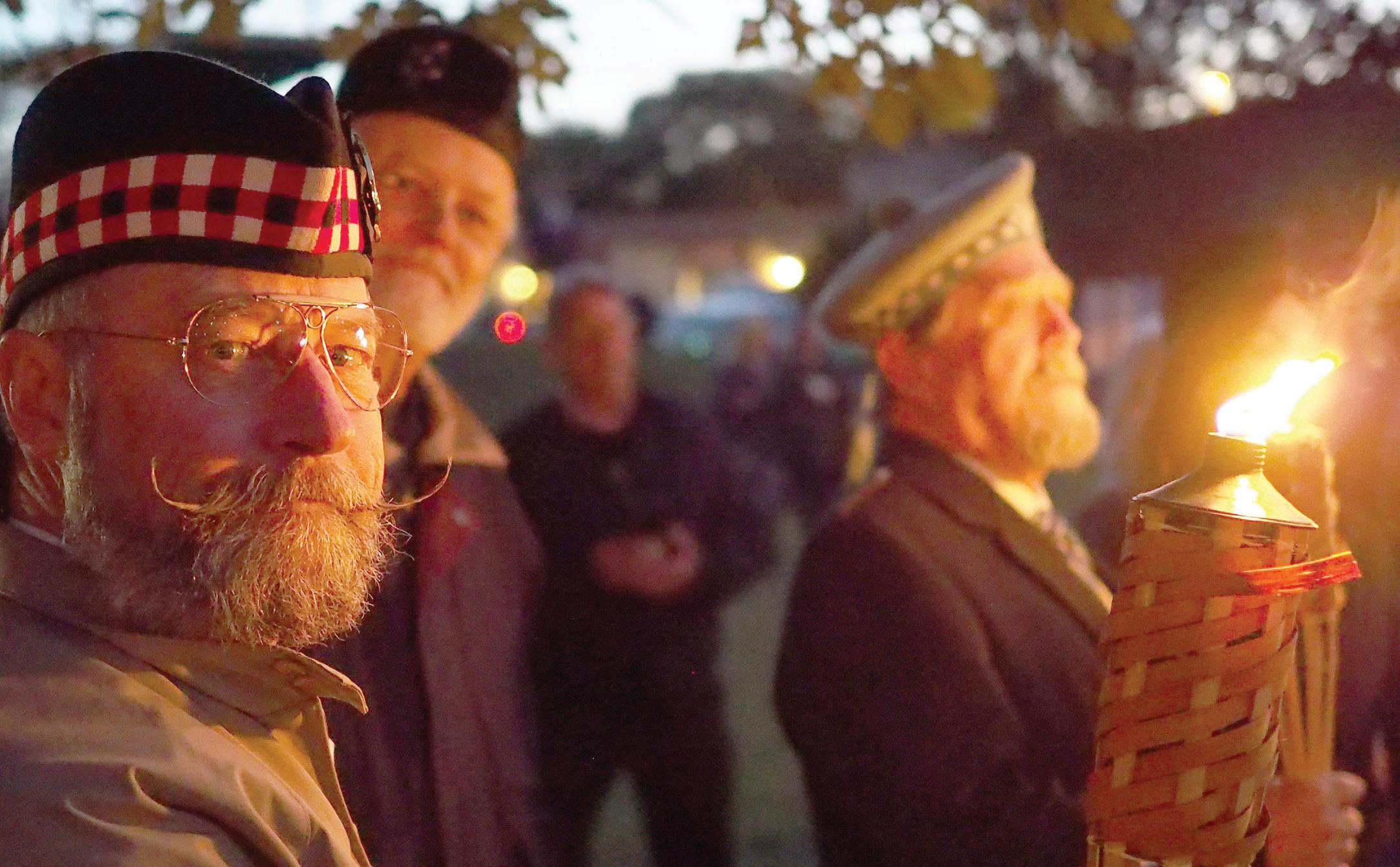
The next generation has taken over running the restaurants and has plans to buy out his dad. But Chris continues to keep the original family recipes and everything continues to be made fresh from scratch each day.
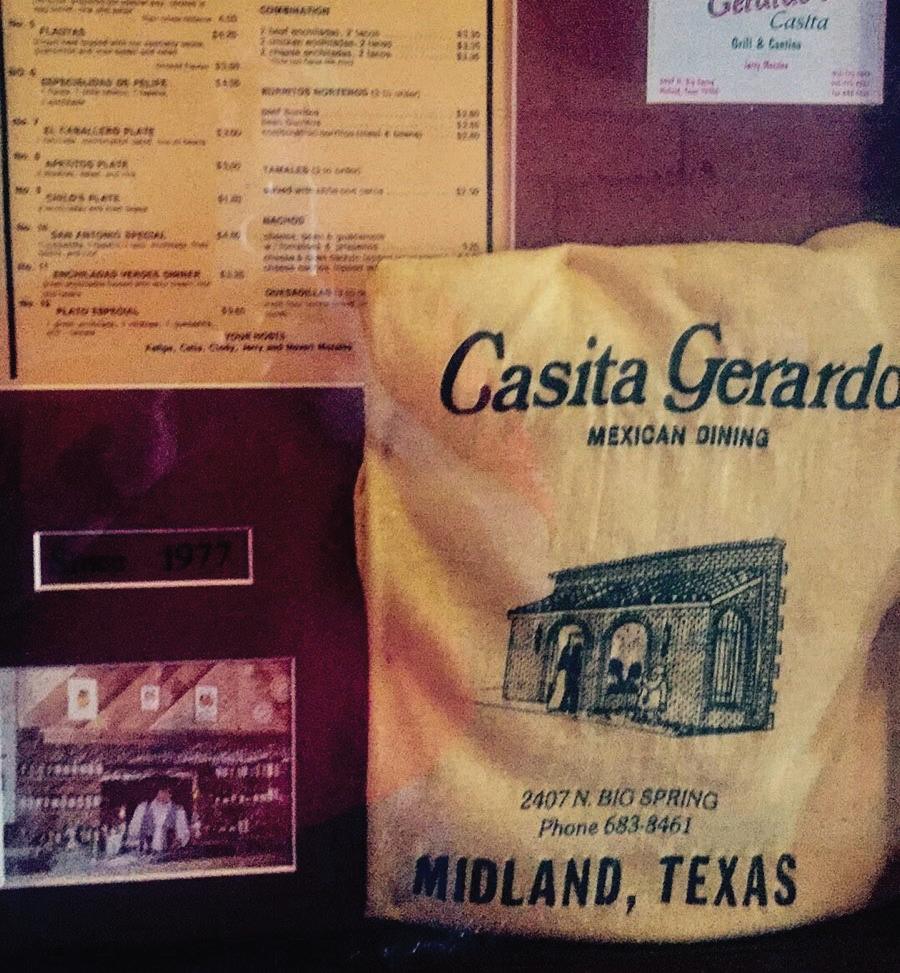
63 AUTHENTIC TEXAS FALL 2023
Visit Midland visitmidland.com Gerardo’s Casita 2407 North Big Spring St. Midland, TX 79705 (432) 570-8012 gerardos casita.com
Left Jerry Morales promoting Gerardo’s Casita.
Below Morales family members in front of Gerardos.
DON’T MISS The Scots Are Coming to Salado! Bagpipe Bands • Highland Dancers Scottish Athletics • Singers & Musicians Scottish Clans Village • Celtic Marketplace Join us for All Things Scottish! Scottish Gathering & Highland Games November 8-10, 2019 Salado Civic Center www.saladoscottishfestival.com Proceeds Benefit the Salado Museum & College Park • A 501(c)(3) nonprofit organization 254-947-5232 2nd Weekend in November Every Year in Salado, Texas
Bottom A collection of Gerardos menus and memorabilia.
Elgin’s Ghost Signs
A Public Art Scene as Wide as Texas
by Amy Miller
Aquick stroll around downtown Elgin will reveal several artistic gems that mirror the diverse and rich history of the town itself – including a variety of ghost signs. Also known as fading ads or brick ads, ghost signs are the old and usually fading advertisement painted on what are or were exterior walls.
Vibrant murals from local and national artists adorn the outside walls of many of Elgin’s over 100-year-old buildings, while visitors who step inside several local businesses will discover ghost murals going back to a time when advertisements were artwork painted on the side of buildings for all to see.
Starting your tour at the Elgin Post Office will offer up one of the oldest of downtown Elgin’s mural collection, a 1940-piece titled Texas Farm by Julius Woeltz. Hanging above the left-hand wall when entering the building from the front, the piece was commissioned by New Deal funding as part of the
Work Progress Administration’s (WPA) Federal Art Project and was one of several pieces Woeltz created that are featured in public buildings in Texas. The mural features several farming scenes, crops, structures, and animals in colors reminiscent of the American Southwest. Other works commissioned by Woeltz during the WPA era include murals featured in post offices in Amarillo, Texas, and Benton, Arkansas.
Just a block south of the Post Office, a mural showcases the Texas Horned Lizard. Painted on the back side of the building at 116 Depot Street, this scene beautifully captures a Texas landscape complete with cacti, a chapparal, rolling hills, flowers and our lizard friend keeping close watch over his domain.
The mural has served as a backdrop for several local events, such as pop-up sales and the Luna Market, a makers’ fair held several times a year by a group of local women artists.
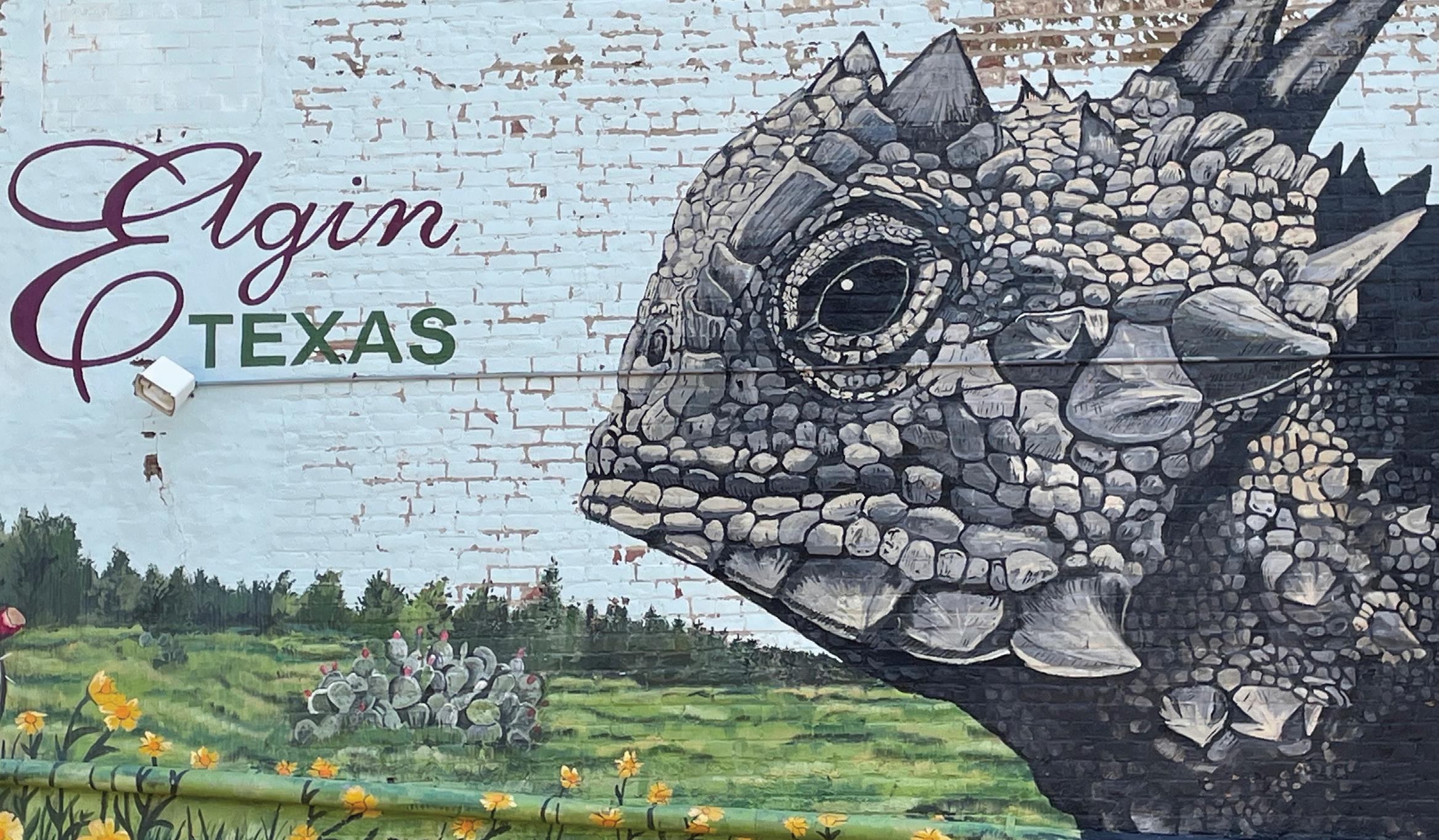
64 deep in the arts LIFE
BRAZOS TRAIL REGION ELGIN
In creating this mural with artist William Montgomery, muralist and sign painter Sarah Blankenship preserved the ghost sign at the top of the building that advertised Ford’s Furniture. The east side of this building has another ghost sign for the same business.
Next up, the Star Tobacco Ghost Sign is at 109 South Avenue C, on the side of Margo Sawyer’s art studio. Artists Ashley and Kyle Smith restored the image to its former glory in 2021, over 100 years after the image first appeared. Handpainted just as the original was, this Star Tobacco mural may be the last fully intact of its kind. The vivid colors are what you would have seen in the early 1900’s.
Turning around and taking a quick hop across the street will bring you to another lively mural by a local artist. Tom Besson’s Immigrant Nation Mural leaps off the wall at 200 Depot Street and was a gift to the Elgin community in many ways.

Besson wanted to create a piece to celebrate the many cultural influences and the contributions immigrants have made to Elgin throughout its history. He completed the project without payment and donated it as a gift to the community.
The Black Icons Mural was painted by artist Jeremy Biggers with Stem and Thorn in December of 2022 for the Elgin Sesquicentennial. The mural is located on the historically segregated south side of the tracks at the corner of Main Street and Central Avenue. It showcases civil rights leader Harvey Westbrook, educator Annie Lee Haywood, business owners and community leaders S.H. McShan and Dororthy McCarther, and musician Monty Joe Thomas, with a plaque telling the story of how each contributed to Elgin.

The Dry Goods ghost mural located at 20 North Main Street inspired the name of today’s Elgin Dry Goods, a shop that
Visit Elgin explorebastrop county.com/elgin
Elgin Chamber of Commerce elgintx chamber.com
Elgin Art Walk elgintexas.gov/
DocumentCenter/
View/6946/EglinArt-Walk
features locally made and hand-crafted jewelry, soaps, coffees, books, old fashioned candy, and Consuela. The mural was lightly whitewashed a few years ago to enhance its visibility.
Lastly, The Owl Cigar Mural is the largest ghost mural in downtown Elgin. Located inside The Owl Wine Bar & Home Goods Store at 106 North Main, the mural spans more than 50 feet and was originally part of an alleyway. It was hidden for more than 90 years until 1990 when a film company shooting the television movie In Broad Daylight revealed the historic artwork.
The shop found its name when the ghost sign was revealed. It is so well preserved, it looks brand new; so, the wall has been cleaned but not painted.
These are the most prominent pieces of public art in the downtown Elgin community, but there are hidden gems around just about every corner – and through every doorstep. Entering The Elgin Courier reveals another hidden gem painted to celebrate our town’s history.
So then what’s the “mural” of this story? Keep your eyes open! You never know what you might miss.
65 AUTHENTIC TEXAS FALL 2023
DON’T MISS
The Dead Man’s Gun
by Tristan Smith
The Leahy brothers, Harry, and his younger brother Willie, were typical young cowboys in 1908 Texas, maybe a little brash and occasionally struck by a wild streak. Their family, with a long linage in Texas, were highly respected residents of Mathis and for many generations owned a ranch in San Patricio County.
On one occasion, Harry and Willie were sent to their Aunt Timon’s house in Mathis, with instructions to pick up a trunk and return to the ranch. However, on the way, the two boys stopped to visit their uncles Pummie Timon and Walter Timon, the
San Patricio County Judge. Their visit resulted in more than a few sips of spirits, leaving the brothers in quite a rousing mood. Deciding it was probably time to finish their task, the brothers left, picked up the trunk and proceeded to recklessly drive their buggy down the streets of Mathis. Feeling emboldened, Willie pulled out his Colt Bisley 3840, firing it wildly into the sky. Residents were nervous, and someone called for San Patricio sheriff, Dave Odem.
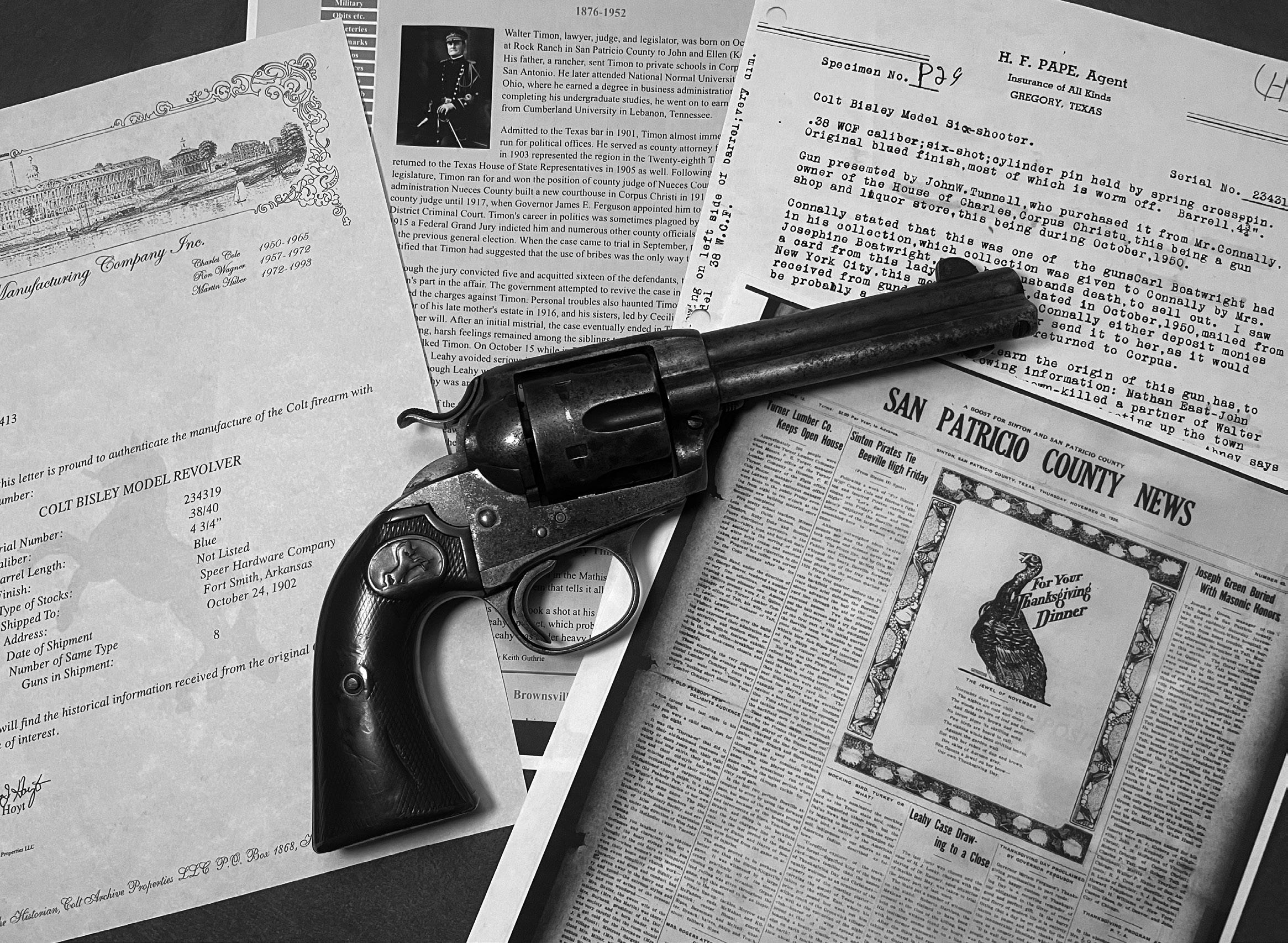
Odem, who had been a rancher in Texas starting as a child prior to the Civil War, saw the Texas landscape with no barbed wire fences. It seemed that
TROPICAL TRAIL REGION
66 deep in the arts LIFE
these Mathis cowboys were back to the old cowboy ways. Sheriff Odem deputized a few men via telephone and sent them into town, arriving while Willie was still firing his Colt wildly into the air. Seeing little other recourse, one of the deputies leveled his rifle at Willie, shooting him out of the buggy where he perished. Harry, who was so drunk, was tied up and carried off to jail. The sheriff took the Colt off Willie as he lay dead at the corner of Front Street and San Patricio Avenue.
Following the loss of his brother, Harry strived to abide by the law. Eventually, he attended college, received a law degree, and became a prosperous rancher and lawyer. Things were fine for the next couple of decades. However, the Great Depression hit farmers and ranchers hard including the Leahy family. Foreclosures and seizures were not uncommon. Judge Walter Timon, Harry’s uncle, and his mother’s brother, eventually tried to take the Leahy ranch. As a result, Mrs. Leahy sued her brother, creating a nasty rift in the family.
Harry’s hatred for his uncle continued to fester. Things finally came to a head at Brownsville’s Miller Hotel, where both men were guests. As Harry was leaving the hotel through a side door, Judge Timon and a companion pulled out their pistols, shooting at the judge’s unarmed nephew. One round struck Harry square in the chest, but he was lucky, his pocket watch deflected the fatal strike. In response, Judge Timon turned the story around, charging Harry with assault and attempted murder. Harry got off as the charges were later dismissed, however, he spent the rest of his time in Brownsville under guard for his safety.
Judge Timon was never successful in taking the Leahy Ranch, but the Depression would eventually claim the ranch. Due to debts owed, the bank put the ranch up for auction. Harry Leahy was devastated. Dr. James Abner Ramsey of Mathis bought the ranch in 1926. Soon after, Harry pulled Dr. Ramsey aside, telling him that the ranch would “never do you any good.” An ominous warning?

On the evening of May 20, 1926, a distressed man, identified as a “Mexican man,” appeared at Dr. Ramsey’s door seeking help for his sister. The doctor disappeared into the night with the stranger, driving off in his Dodge roadster. Concurrently, Dr. Ramsey’s wife, Molina, called Sheriff S. F. Hunt out
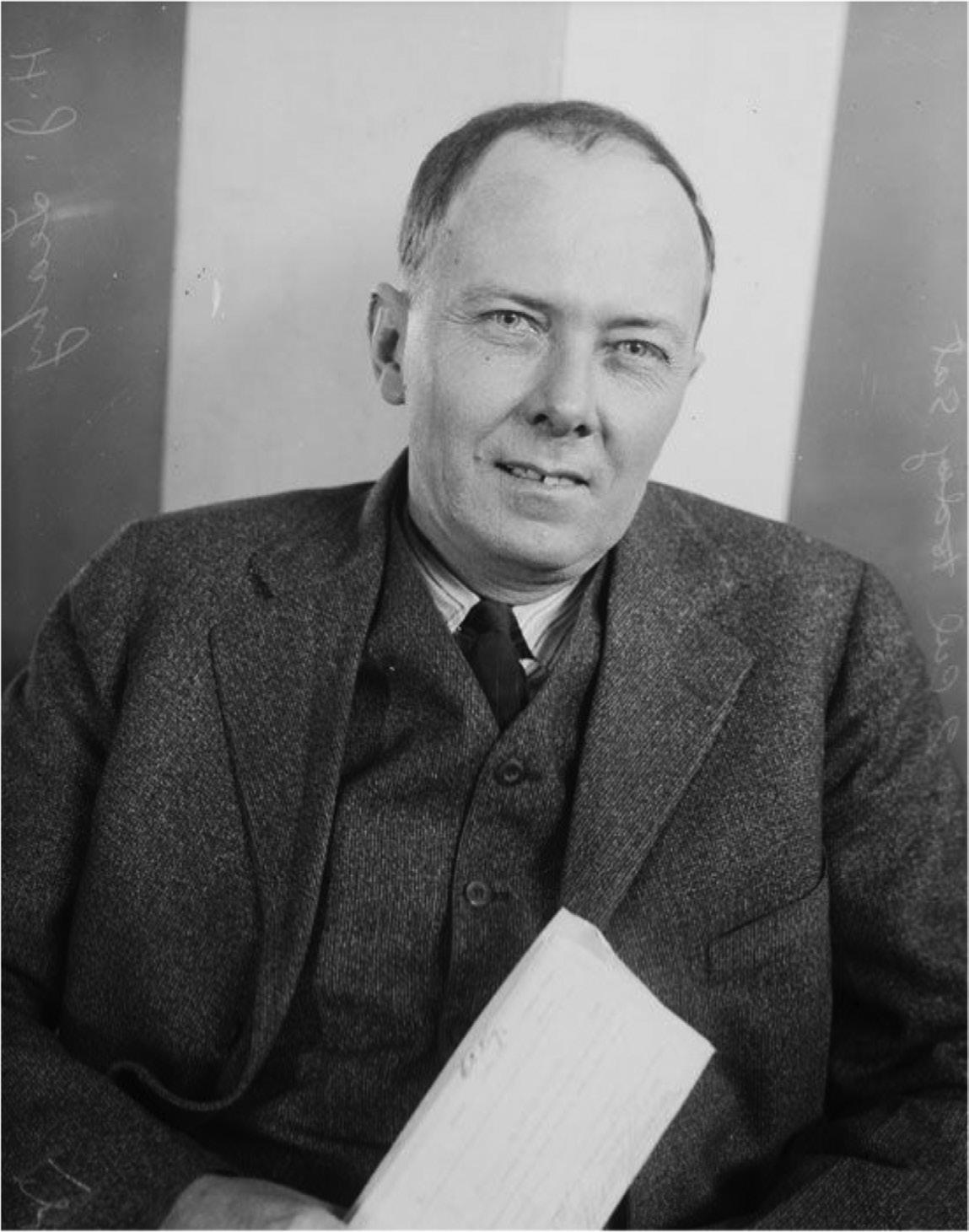
67 AUTHENTIC TEXAS FALL 2023
Below Harry J. Leahy who was convicted of the murder of Dr. J.A. Ramsey. Courtesy University of Texas at San Antonio Bottom Brownsville Miller Hotel where Judge Timon and Harry Lehman were guests. Courtesy of DeGolyer Library, Southern Methodist University.
of concern. The following day, Mrs. Ramsey received a postcard from her husband saying he had taken the patient to Beeville and might be heading to San Antonio. Mrs. Ramsey believed the card from her husband had been written under duress. A full week passed with no news of the doctor.
Back in Mathis, a young boy, Marcos Lemos, approached the police and reported a strange Mexican man who had rented a room several days prior to the doctor’s disappearance. After a full week, a reward for more information or his return was posted. Then, Sheriff Hunt called Governor Miriam “Ma” Ferguson, requesting help from the Texas Rangers. Light Townsend and J.W. Aldrich were assigned to the case. A few days later the sheriff specifically requested the agency’s top detective, Frank Hamer.
Through witness reports, Captain Hamer determined Harry Leahy had kidnapped the doctor and called for his arrest. On June 17, 1926, Leahy and his accomplices were arrested; Leahy was charged with murder. The bond of $65,000, a staggering amount for the time, was later reduced to $20,000. Leahy was released but kept under constant surveillance.
The Rangers were able to track down the roadster as well. Then came a big break as the Mexican man who approached Dr. Ramsey was identified as Robert Martinez. He maintained his innocence and refused to talk to the Rangers until Hamer bluffed him by saying Harry Leahy was looking to kill him.
The Dead Man’s Gun Today and Its Provenance
Tying the entire tragic story between the Leahy’s and Ramsey is a 1902 Colt Bisley model, 38-40/38 W.C.F. Today, that same Colt Bisley sits in the hands of David Alan Woodward of Three Rivers, Texas. A collector of firearms, specifically those produced by Colt, Woodward came across a similar collector in Iowa who claimed the gun’s history traced back to San Patricio and Live Oak Counties. As a life-long resident of Live Oak County, Woodward could not pass up the chance to obtain such a firearm.
Along the way, the Bisley earned the name “Dead Man’s Gun” due to its intertwining history in San Patricio and Live Oak Counties. Originally, it is believed the gun belonged to Willie Leahy. His initials can be found on the inside of the grips. It is the pistol Willie was firing wildly on his last day in Mathis, Texas; it is the pistol taken off his body by Sheriff Dave Odem.
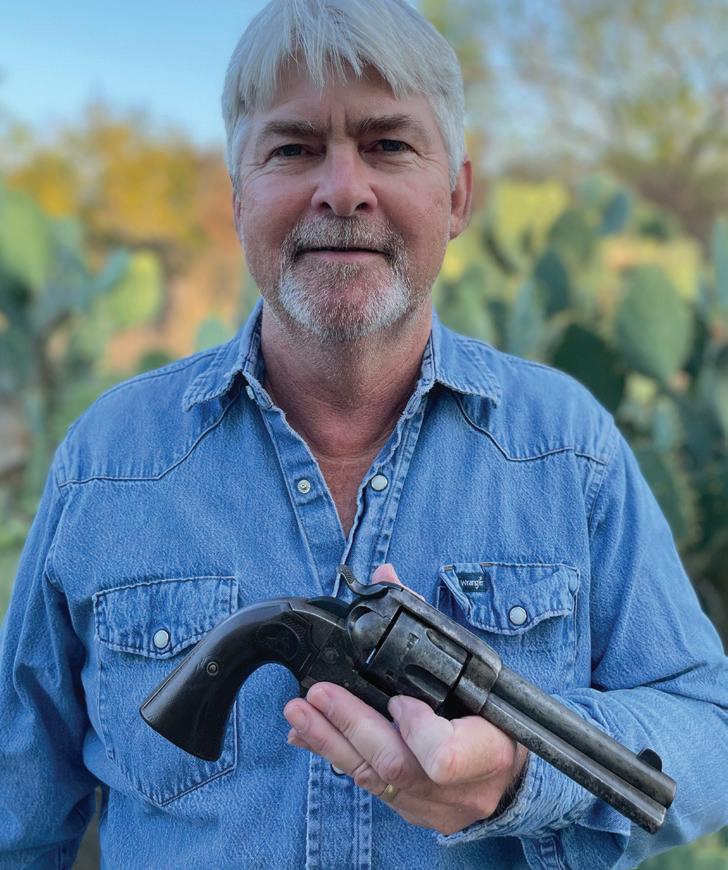
Unfortunately, the San Patricio County’s office records from this time were destroyed by a flood. Instead, the provenance of the Colt Bisley is pieced together through historical records, newspaper articles, and word of mouth. Additionally, an insurance agent’s investigation described this Colt by serial number with a description of it being used in a shooting incident in Mathis in the early 1900s. While the hard evidence of the Bisley’s provenance was lost to the flood waters, Woodward has been able to trace the Bisley back to this priceless story of the Leahy Brothers, Texas true crime history, and Texas Ranger Frank Hamer.

68 deep in the arts LIFE
Texas Ranger Frank Hamer atop his horse in the early days of his law enforcement career | Courtesy Texas Ranger Hall of Fame and Museum
In return, Martinez spilled his guts. He told the Rangers how he was hired and told the rest of the kidnapping story. Next, he took the officers to Ramsey’s grave in Live Oak County. The badly decomposed body was found in a shallow grave. According to Martinez, Leahy forced Dr. Ramsey at gunpoint to the gravesite, where he was tortured for the next five hours. The doctor was instructed to write a $10,000 ransom demand and sign a note leaving his ranch to Leahy. Leahy and Martinez dragged the good doctor to the hand-dug grave, killed and buried him.

Captain Hamer and the Rangers brought the men to trial. The first trial was held at George West, Texas, located in Live Oak County, where the murder occurred. When the jury handed down fifty years to Leahy, he demanded a new trial. Every legal maneuver and means were taken to try and save Leahy’s life, including being granted numerous stays by Governor Dan Moody. Eventually, he was sentenced to death three years after the murder. On August 2, 1929, Leahy was brought to death in the electric chair at the state prison in Huntsville, Texas.
Ranger Frank Hamer was present at the execution Twenty minutes prior to the execution, Leahy
called for the Ranger. He told him, “All my life things have broken my way, but this time, the cards were stacked against me.” Hamer replied, “Who stacked them against you Harry? None but yourself.” Robert Martinez, Leahy’s murder accomplice, drew a fiveyear sentence and was paroled in just over two years. In an odd twist of fate for Leahy, while he was out on bond, he married a well-to-do widow who exhausted nearly $60,000 of her fortune on his defense. His marriage date was August 27, 1929…the same day Dr. Ramsey’s body was discovered. Dr. Ramsey’s body was placed in San Patricio County’s Tom Mathis Cemetery.

69 AUTHENTIC TEXAS FALL 2023
Texas Cities and Travelers Are Gearing Up for the 2024 Solar Eclipse
by Carla Pendergraft
Within just a six-month period Texas will experience two solar eclipses: the annual solar eclipse on October 14, 2023, and then the total solar eclipse on April 8, 2024. The next total solar eclipse will not occur in the United States until 2044.
The annual eclipse in October will be a partial eclipse, where the sun will not be completely blocked by the moon. Astronomers say this is mildly interesting, but that it cannot compare to a total solar eclipse.
The April 8 event will be a once-in-a-lifetime total solar eclipse. A wide swath of Texas will experience this total eclipse. The eclipse will also fall over many other states, but because of the greater chance of sunny skies, millions of travelers are expected to journey to Texas to view it.
WHAT IS THE ECLIPSE EXPERIENCE?
At the height of the eclipse, during the time the moon is completely obscuring the sun, solar glasses

can be removed, and the full experience can be savored. The experience of totality is far beyond that of a partial eclipse. To quote Ken Love of Placentia, California, who witnessed the 2017 total eclipse:
It is the most beautiful and wonderful natural thing I have seen with my own eyes. You can see and feel the shadow coming. Birds land, crickets start chirping, streetlights come on. The temperature drops; for us it was between 15 to 20 degrees. So strange and awesome. The sunlight goes away…
The Corona is the biggest most amazing spirograph art, jaw dropping. Pictures are neat, but real life – it changes you… At this time, close your eyes for a second and listen; the sound changes, incredible. The 360-degree sunset is a sight to see. It’s one of the most beautiful that you will ever see – there, there, over there, over there, and over there too…
The split second the light comes back, you feel the heat. The diamond ring, speechless. The light that starts hitting your skin feels different and it is so soft, like an artist’s pastel painting. Also, as light
70 live show LIFE
comes to strength, the birds fly, and the crickets get quiet. It changes you: you have now seen beauty that you have never seen or felt before.
Just enjoy every second of it. It is magical, and you will want to see another one.
ECLIPSE FESTIVALS AROUND THE STATE
Eclipse festivals are being planned all over the state within the path of totality. NationalEclipse. com lists 56 Texas locations with a wide range of experiences, from a concert in the Cave Without a Name (near Boerne), to Celest Fest, a five-day festival in Belton with mystical elements.
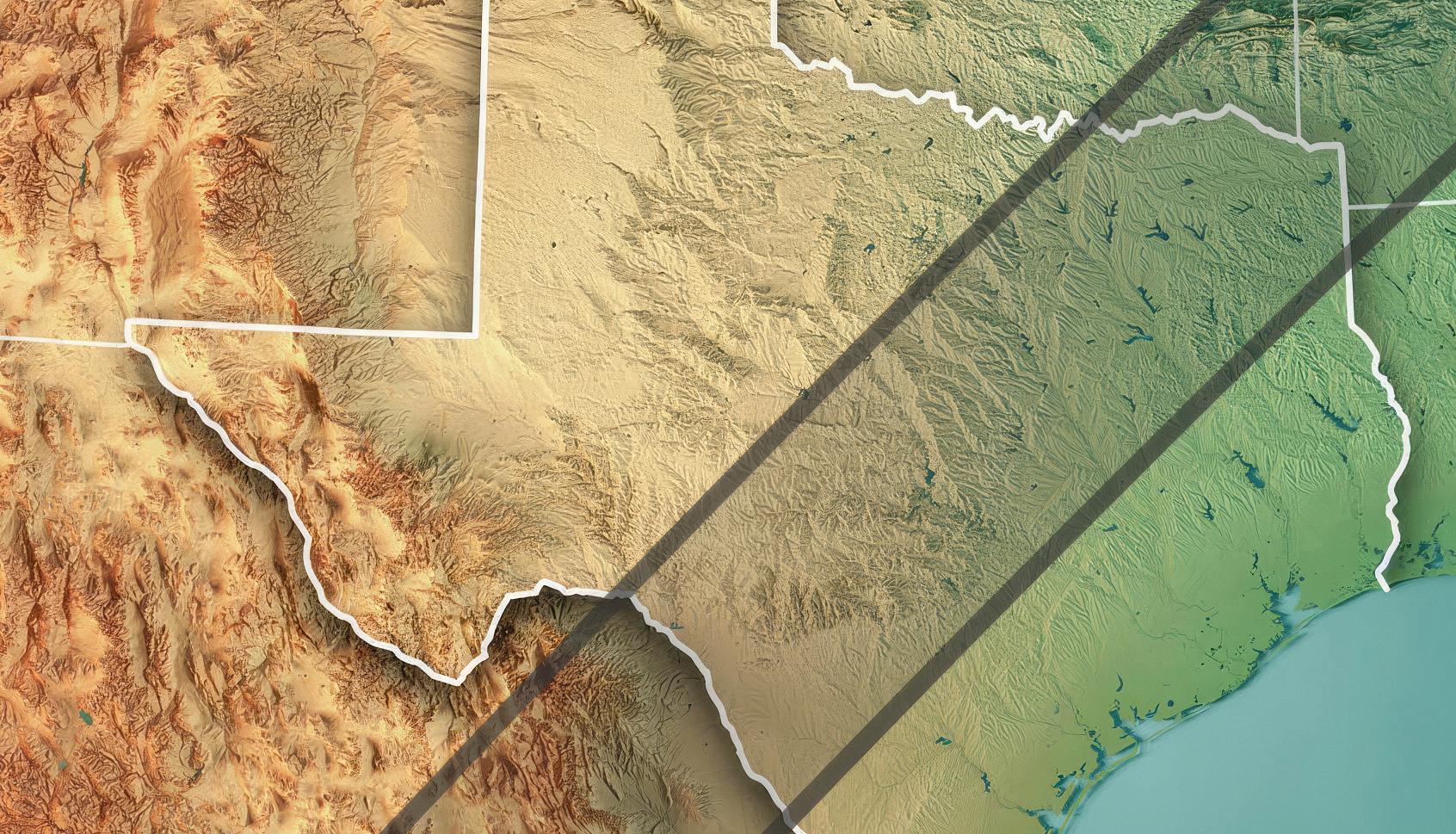
In Waco, the City has partnered with Baylor University, Lowell Observatory, and Warner Bros. Discovery to create a day-long family friendly festival with solar telescopes, astronomer talks, and a VIP area called Eclipse Over Texas: Live from Waco. The entire eclipse will be livestreamed by the Discovery Channel. The weekend kicks off with a free concert on Friday night, a STEMfest and glow run on Saturday, and the main event on Monday.
PLANNING FOR THE ECLIPSE
Has your city or county planned an event around the eclipse? Even if an event is not planned, Texas needs to be ready for the onslaught of visitors. Traffic studies from the 2017 total eclipse showed that major and minor routes were clogged for hours upon hours after the end of the eclipse. Thousands of hotel rooms and vacation rentals have been booked already, and prices reflect the high demand.
“Eclipse Chasers,” the name given to eclipse fans, are those who plan years in advance to travel to see total eclipses. Some go by RV. Others fly from airport to airport within the path of totality so they can experience the eclipse again and again within a single day.
HOW TO GET READY
To prepare yourself for the eclipse, first decide what experience you want. Do you want to stay in a hotel, vacation rental, RV, or rough it in a tent? Do you want to attend one of the many eclipse festivals, which vary tremendously in their focus and family-friendliness, or do you want a solitary experience?
You will want to study the eclipse path as well. Eclipse chasers all want the maximum amount of totality—the brief time the sun is completely obscured. The partial eclipse will last about 2 1/2 hours, but totality is the experience the true eclipse fans are chasing. There is a great deal of difference between two minutes of totality and 4+ minutes. You can see a list of cities and the amount of totality they will experience here: solarsystem.nasa.gov/ eclipses/2024/apr-8-total/where-when Book your room, campsite, or find a kind friend you can stay with. Do it early as rooms are already filling up. Plan to stay multiple days to maximize your experience. Avoid those post-eclipse jammed roads on Monday by booking your room for check out on Tuesday.
Purchase solar glasses or special binoculars suitable for solar viewing. Eclipse glasses are not simply dark sunglasses; they should be ISO certified for solar viewing. Some festivals will supply solar glasses as part of the ticket price. You’ll wear the solar glasses throughout the partial eclipse. It will only be safe to take the glasses off during the true totality.
A FINAL NOTE
While many eclipse fans are planning to photograph or video the eclipse, you’ll miss out on some of the actual visceral experience if you do this. Eclipse photographs tend to all look the same, and they don’t really convey the feelings we mortals get from seeing our Sun conquered by the Moon. Be in the moment and enjoy!
DON’T MISS
Waco Convention Center & Visitors Bureau
106 Texas Ranger Trail Waco, TX 76706 (254) 750-5810 WacoHeartof Texas.com
Eclipse Over Texas: Live from Waco EclipseOverTexas 2024.com
Belton Chamber of Commerce
412 E. Central Ave. Belton, TX 76513 (254) 939-3551 Belton Chamber.com
Celest Fest celestfest.com/ celest-fest-eclipse Baylor University 1131 S. 5th St. Waco, TX 76798 (800) 229-5678 Baylor.edu
Visit Boerne ci.boerne.tx.us/ 2292/Visit-Boerne
Cave Without a Name cavewithouta name.com/content/ total-eclipseexperience-april-2024
71 AUTHENTIC TEXAS FALL 2023
Check this list of Texas locations with a ride range of eclipse experiences: NationalEclipse.com
Step back in time and discover the history behind Laredo’s famous streets, buildings and people. Texas begins here, and so does your unforgettable trip with over 250 years of history.

TO LEARN ABOUT GUIDED TOURS, CONTACT: VISITLAREDO.COM 1.800.361.3360
Laredo Convention and Visitors Bureau



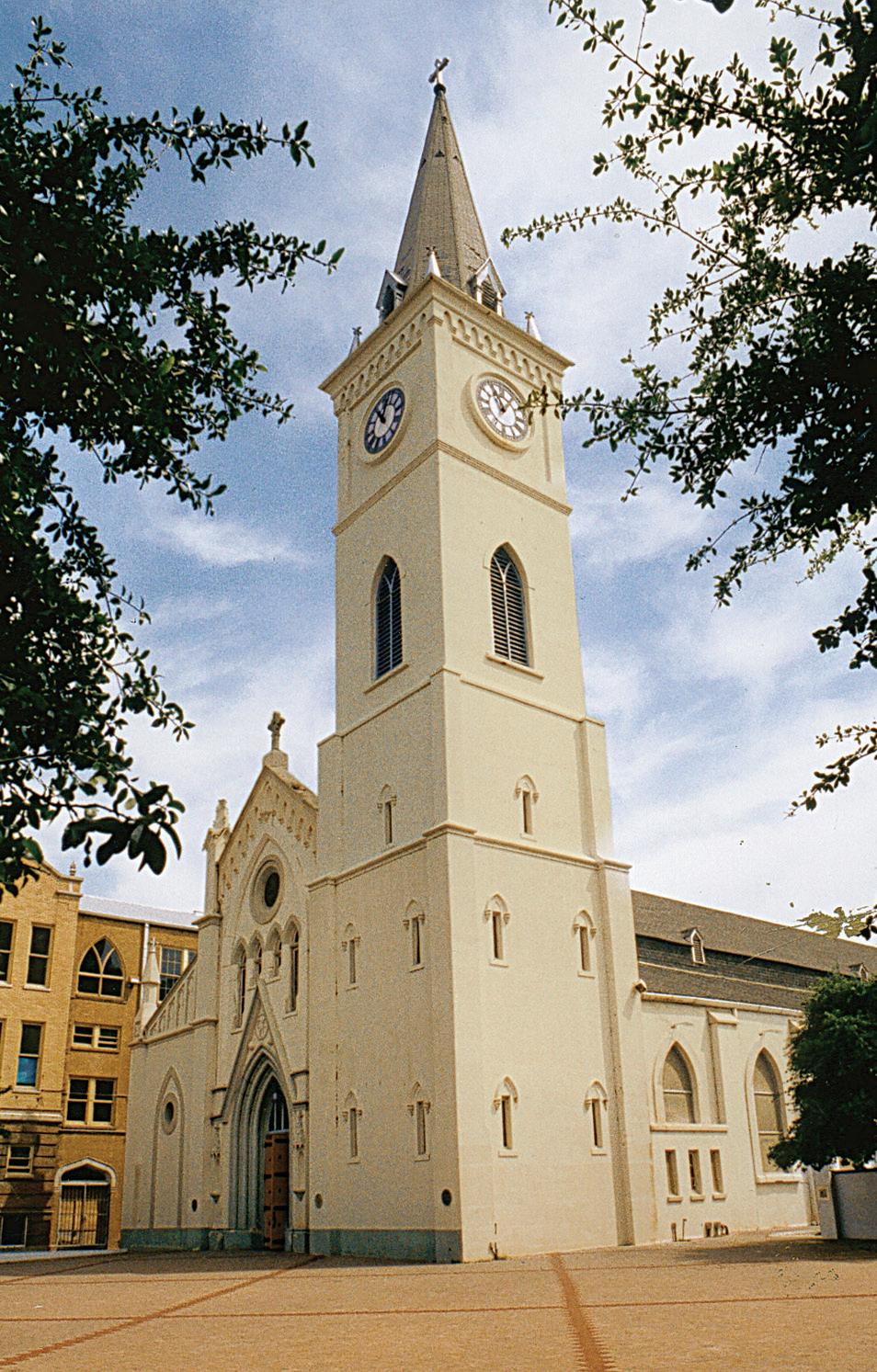

72
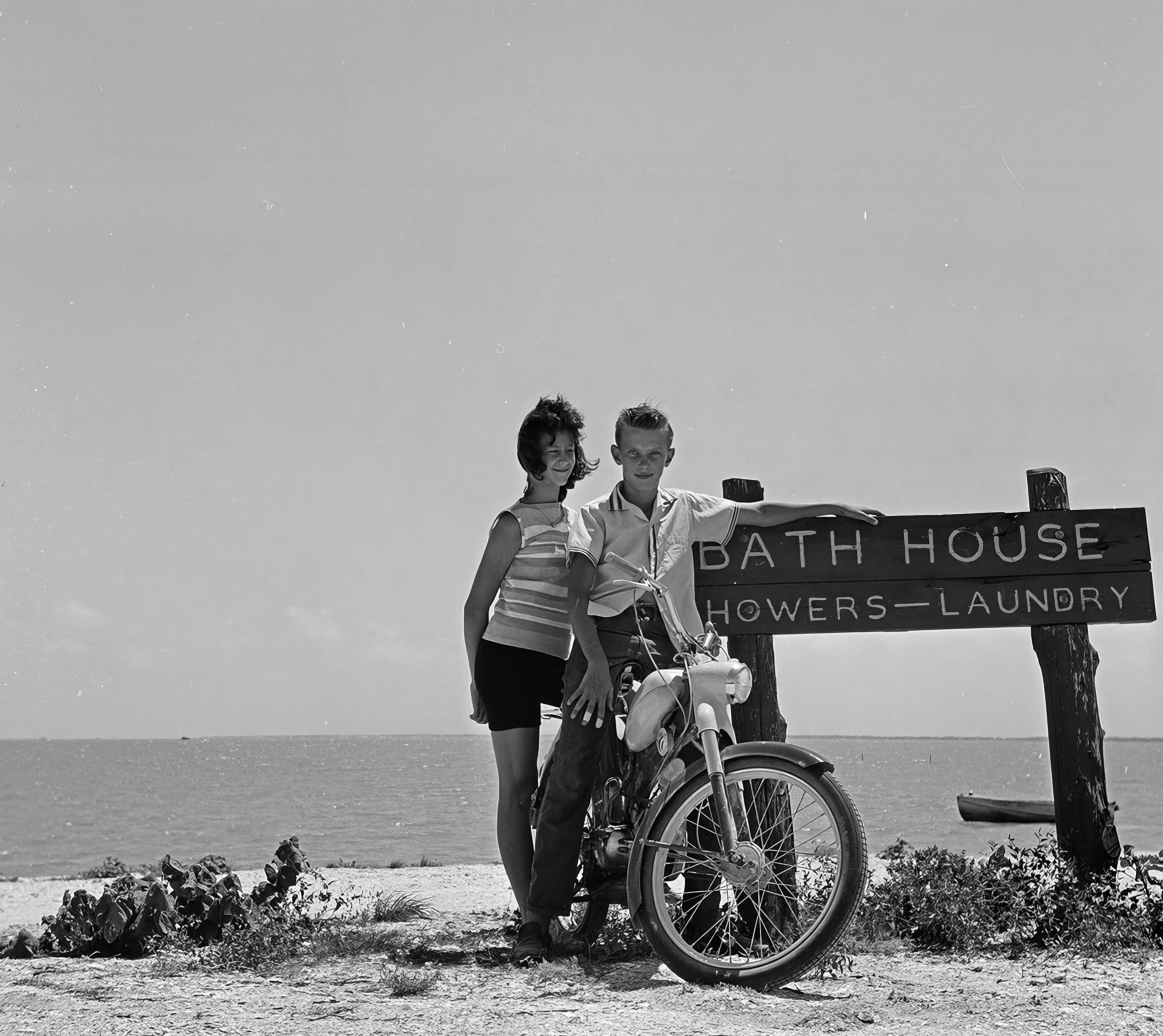
73 LEGACY Texas Treasure Business Awards Spotlight 80 Recognizing recent award recipients Texas Historical Commission 78 Activities abound across the state in celebration of October as Texas Archeology Month Texas State Library & Archives 74 Commemorating the Centennial of Texas State Parks in online exhibits
Visit Our State Parks Through History with the State Archives!
by Susan Floyd
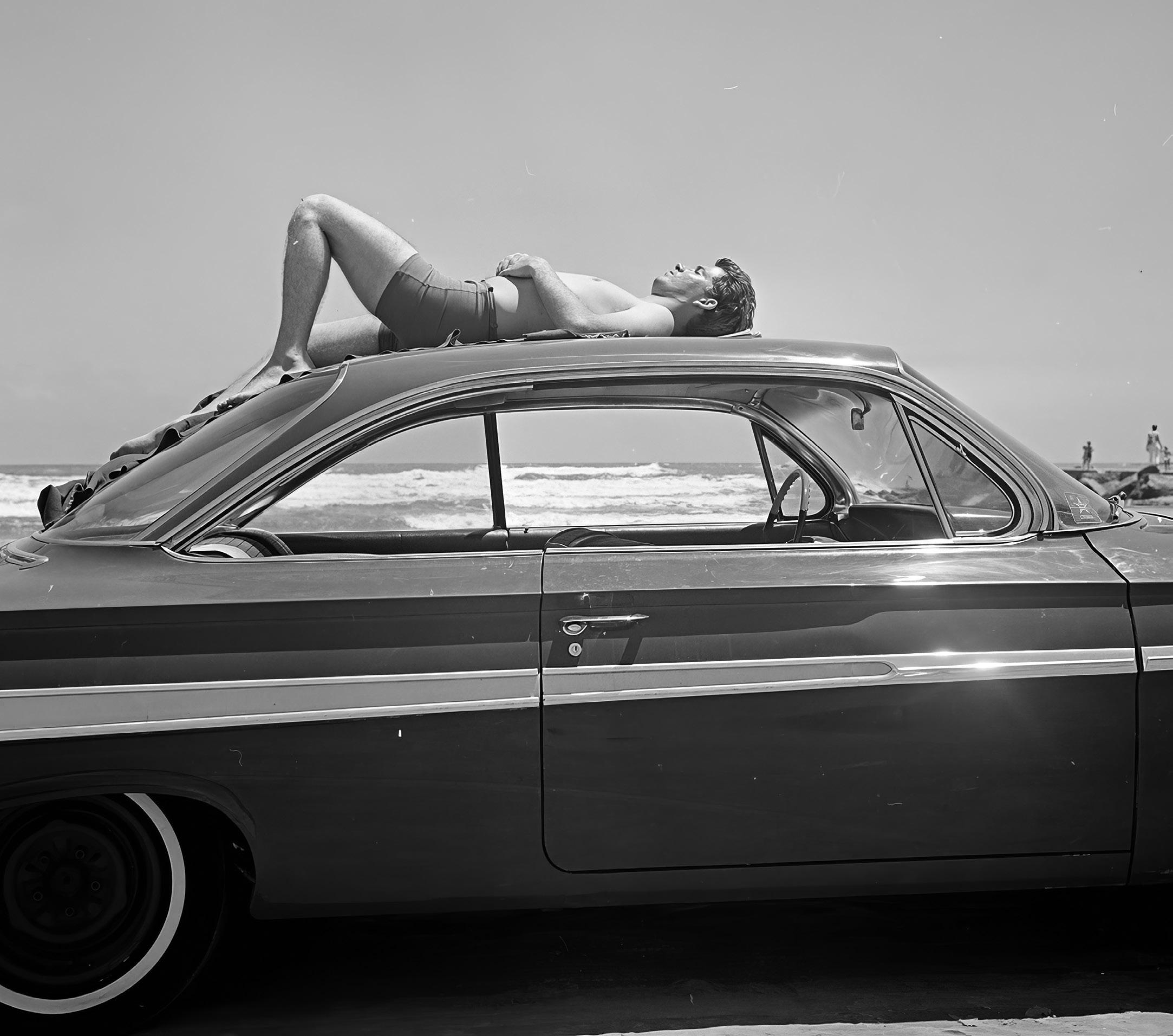
As we celebrate the centennial of Texas State Parks, the Texas State Library and Archives Commission (TSLAC) is excited to share two of our online exhibits—as you plan your next trip, check out some history. Our digitized photographs, maps, state planning documents, and more are freely accessible online from anywhere, 24/7!
Every Texan who has ever pitched a tent, paddled a canoe, roasted a marshmallow, or sat around a cracking campfire swapping stories until the wee hours of the night has a favorite Texas State Park. With 54 state parks peppered throughout Texas ranging from the towering sandstone formations of Palo Duro in the panhandle to the otherworldly underground landscape found at Longhorn Caverns nestled in the hill country, it is easy to say that there is no shortage of excuses to lace up your hiking boots, grab some granola, and get inspired by Texas’ great outdoors.
So, before you load up the airstream or start stocking up on hot dog
74 TEXAS STATE LIBRARY & ARCHIVES
buns, check out our exhibit Setting Up Camp (tsl.texas.gov/ lobbyexhibits/parks). Originally on view in the lobby of the Lorenzo de Zavala State Archives and Library Building in 20162017, the entire exhibit is duplicated on the TSLAC website.
When President Franklin D. Roosevelt took office on March 4, 1933, he faced a nation that was looking to him for relief from the Great Depression. One in every four workers was unemployed. Millions of Americans had lost their savings and homes. Roosevelt proposed a series of relief programs to help stabilize the economy known as the New Deal. The Civilian Conservation Corps (CCC) was one of the first New Deal programs created. Its goal was to preserve the nation’s natural resources while employing millions. CCC enrollees worked on projects related to soil conservation, forestry, flood control, and land conservation. CCC enrollees were men between the ages of 17 and 28 unmarried, unemployed and out of school. The CCC’s legacy helped to develop state parks across the United States. In Texas, the CCC developed 56 state, national, and local parks and employed over 50,000 Texans from 1933 to
CCC in Texas State Parks, 2010. This Texas Parks and Wildlife brochure highlights the history and legacy of CCC-created state parks.


Palmetto State Park Master Plan TSLAC’s website hosts a searchable database of drawings from the CCC state park projects. Recently stayed at one of the parks and loved the rustic furniture? The designs for much of the furniture created by the CCC can be found in the drawings database as well
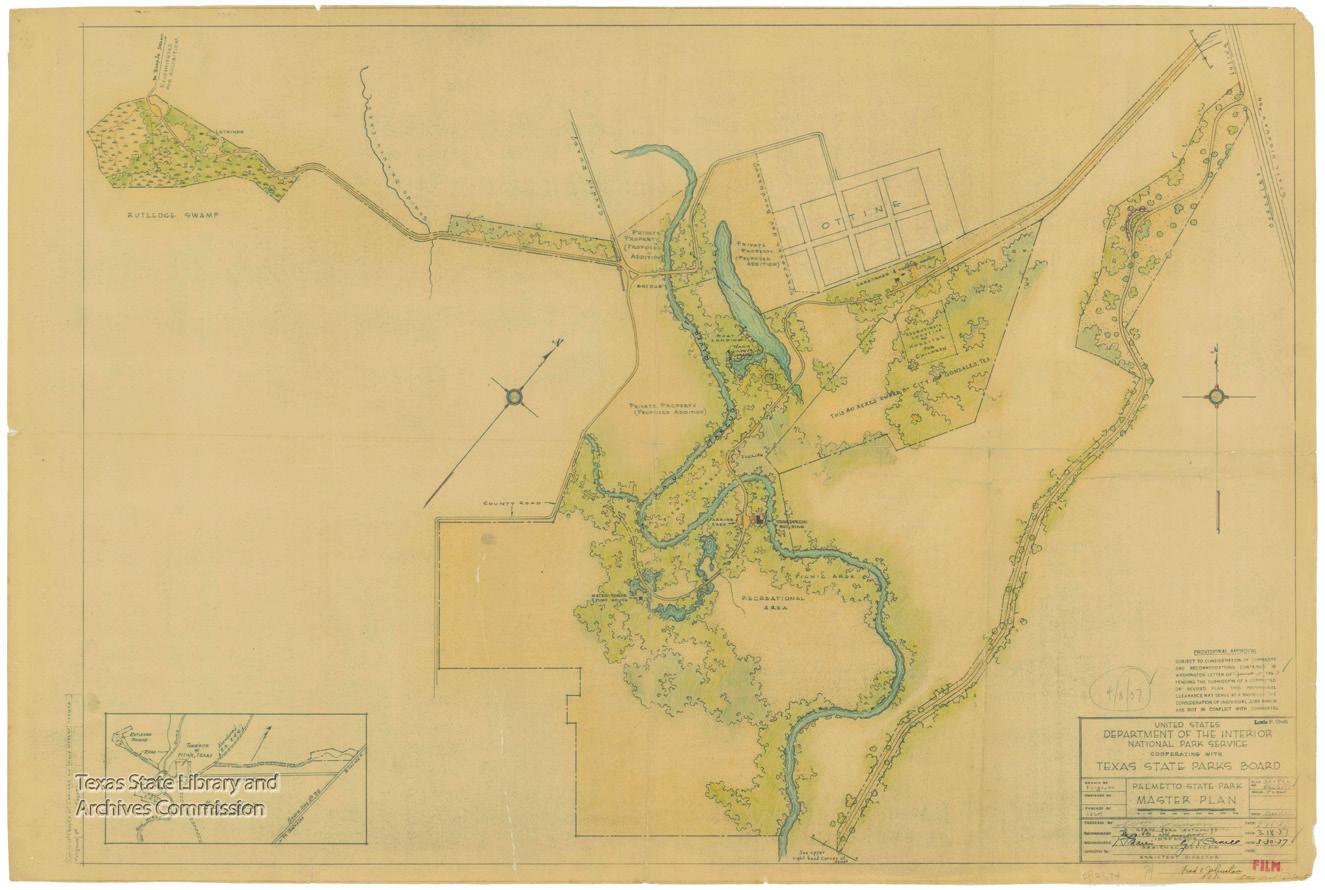
CCC Camp, Chisos Mountains, Big Bend, Tx, about 1933-1935 The camp was occupied by either Company #879 or #881, both of which would then be tasked to construct Indian Lodge following their work at Big Bend National Park.
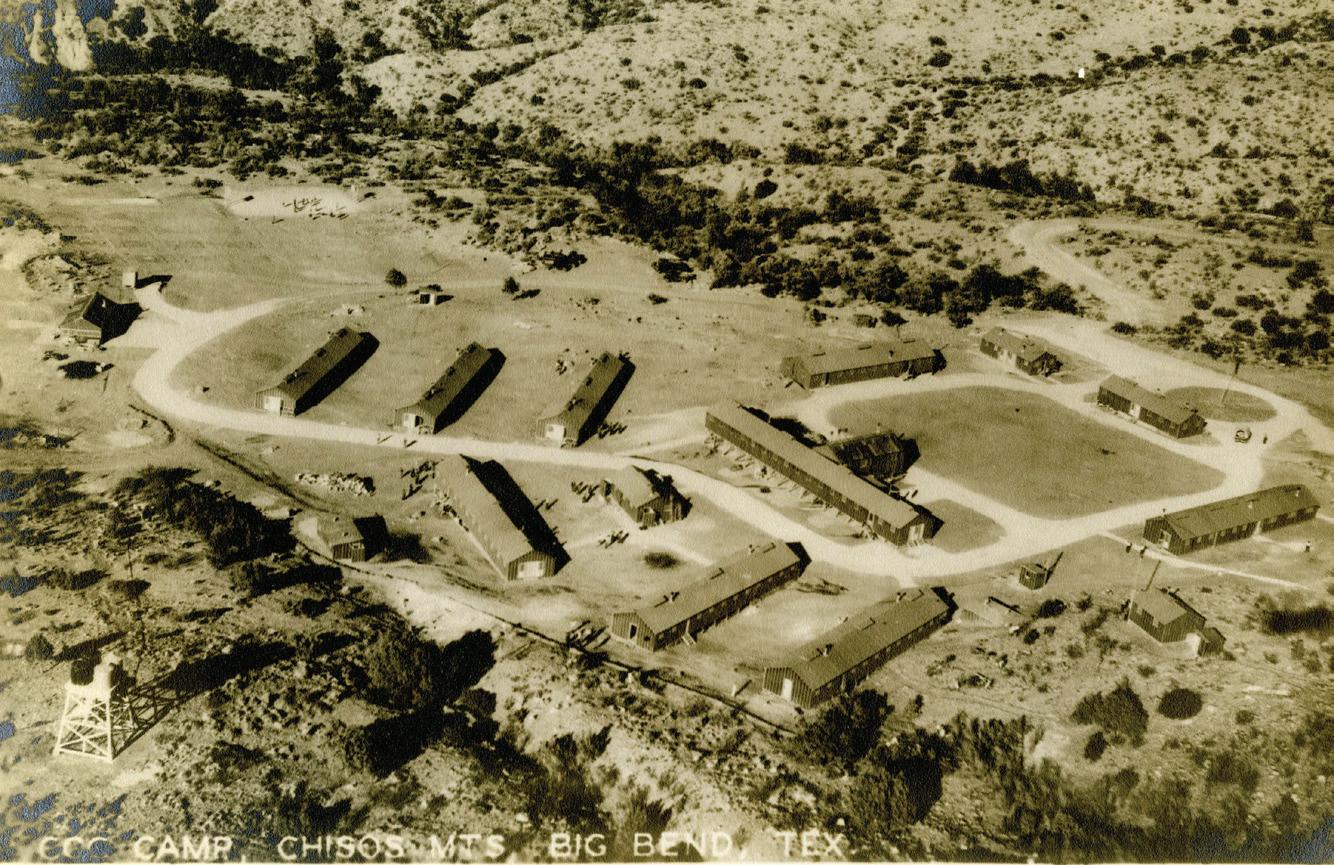
75 AUTHENTIC TEXAS FALL 2023

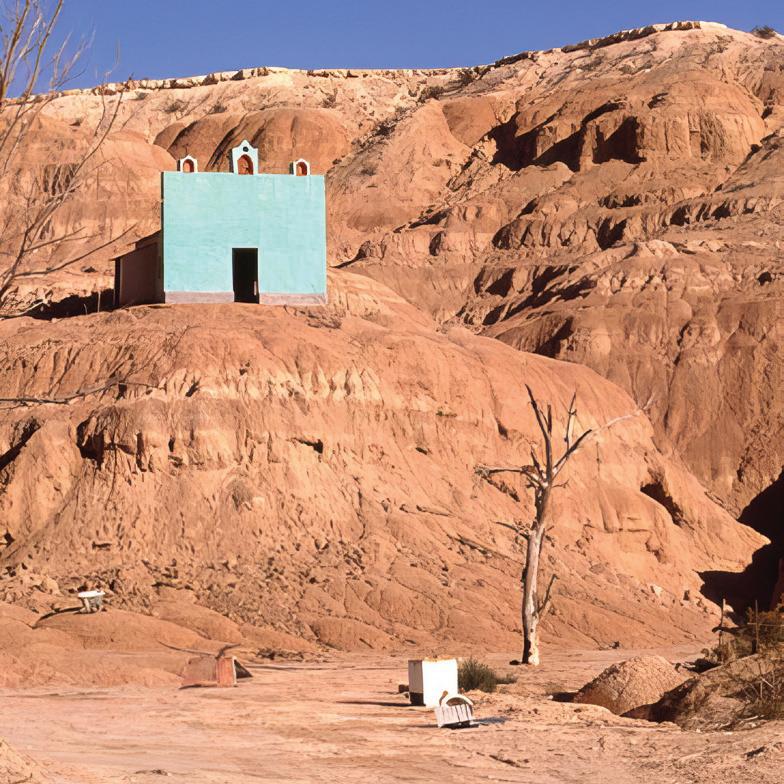

76 TEXAS STATE LIBRARY & ARCHIVES
Above Rear view, Indian Lodge, 1948. Fort Davis This photograph, intended for publication as a postcard, depicts the Lodge as it appeared from its opening to the public in 1939 until its renovation in 1964. In the background are the Davis Mountains.
Bottom left El Paso: Hueco Tanks State Park
Bottom right Palo Duro Canyon State Park: A man and woman climb a formation overlooking Lighthouse Rock at Palo Duro Canyon State Park in the 1960s.
1942. Gain a better understanding of the vision of our greatest shared natural resources though hand-drawn park blueprints, vintage tourism guides, period promotional photographs, and more—all compiled from the collections of the Texas State Archives.

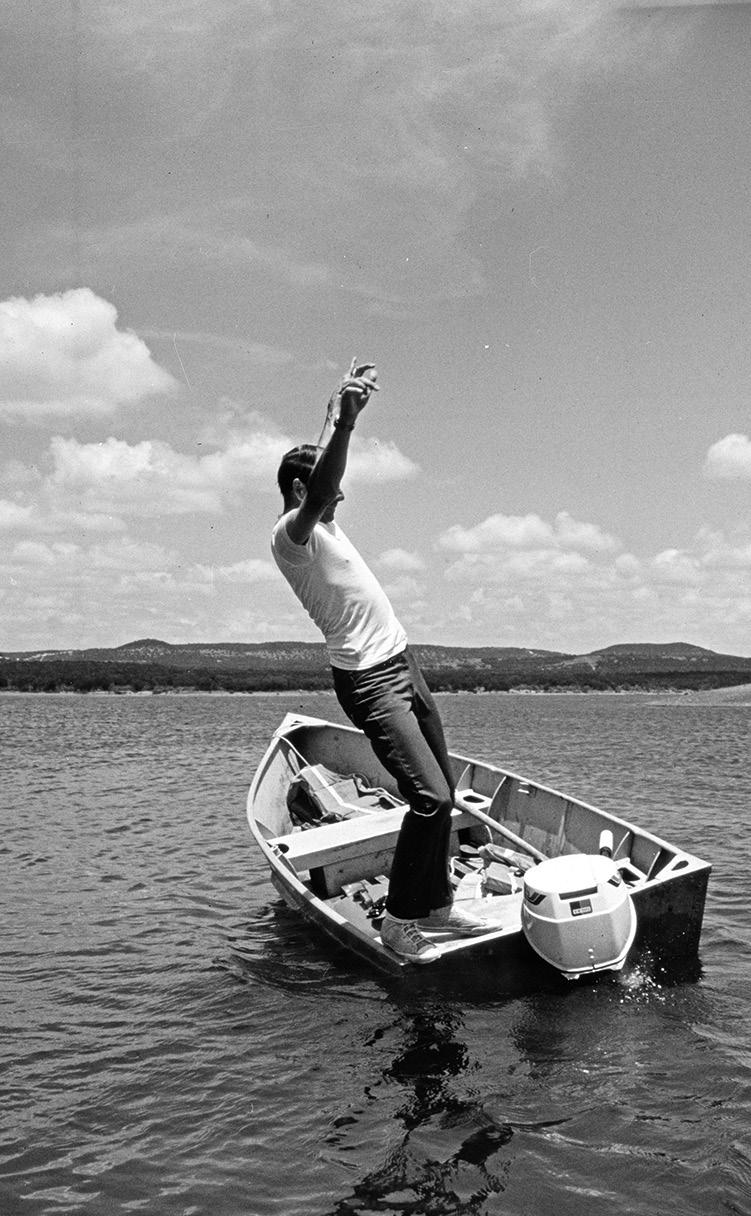

In 1923, Governor Pat Neff created the Texas State Parks Board thereby establishing the Texas State Parks system. Neff favored building parks for Texans who loved to travel, camp, and explore outdoors over the idea of preserving beautiful locales across Texas. Board members traveled around the state promoting the idea of a park system. Our only-online exhibit To Love the Beautiful: The Story of Texas State Parks (www.tsl.texas.gov/exhibits/ parks) details the early history of Texas’ parks and continues through their “Golden Age” in the 1960s. This exhibit is rich with historical information about the crucial establishing work of the State Parks Board in the 1920s; New Deal-era issues such as funding issues, internal politics, segregation, and, finally, how World War II
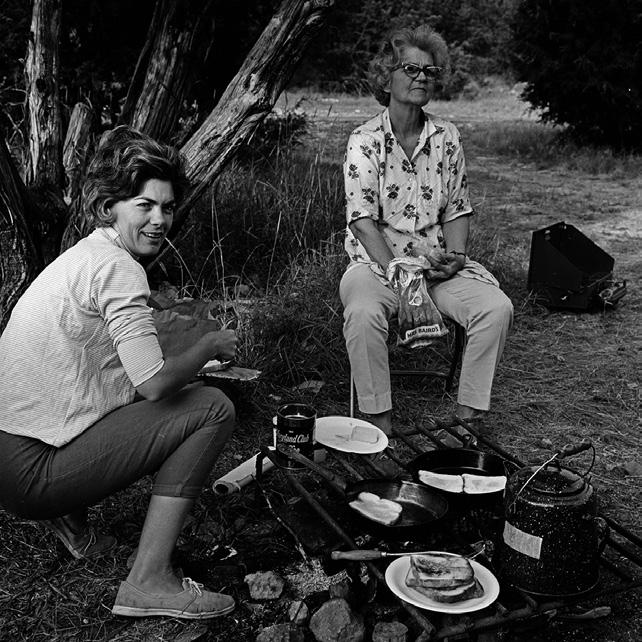


changed the expectations Texans had for their parks, which ultimately led to the creation of the Texas Parks and Wildlife Department (TPWD) in 1963. This led to a tripled budget for state parks under Governor John Connally, and by the end of the decade, the system boasted some 130 parks. In the past 50 years, TPWD has tackled many challenges, including but not limited to park renovations, desegregation, wildlife management and conservation, accelerating technology, and the soaring popularity of the parks among Texans and out-of-state visitors alike.
TSLAC regularly exhibits treasures from its collections in the lobby of the Lorenzo de Zavala State Archives and Library Building. We encourage you to visit to see these pieces of history for yourself. Of course, we understand that not everyone is able to stop by 1201 Brazos Street in Austin, so we’ve digitized most of what we display for you to view online. Please feel free to browse our current and previous exhibits at tsl.texas.gov/ lobbyexhibits.
77 AUTHENTIC TEXAS FALL 2023
Select photographs, 1938-1976 These photographs document recreational activities at Bastrop, Goose Island, Possum Kingdom, and Velasco state parks. Note: Velasco State Park no longer exists. It was established in 1939 and located on the coast of Brazoria County near Brazosport until 1980.
Unearthing the Past
Celebrate Texas Archeology Month in October
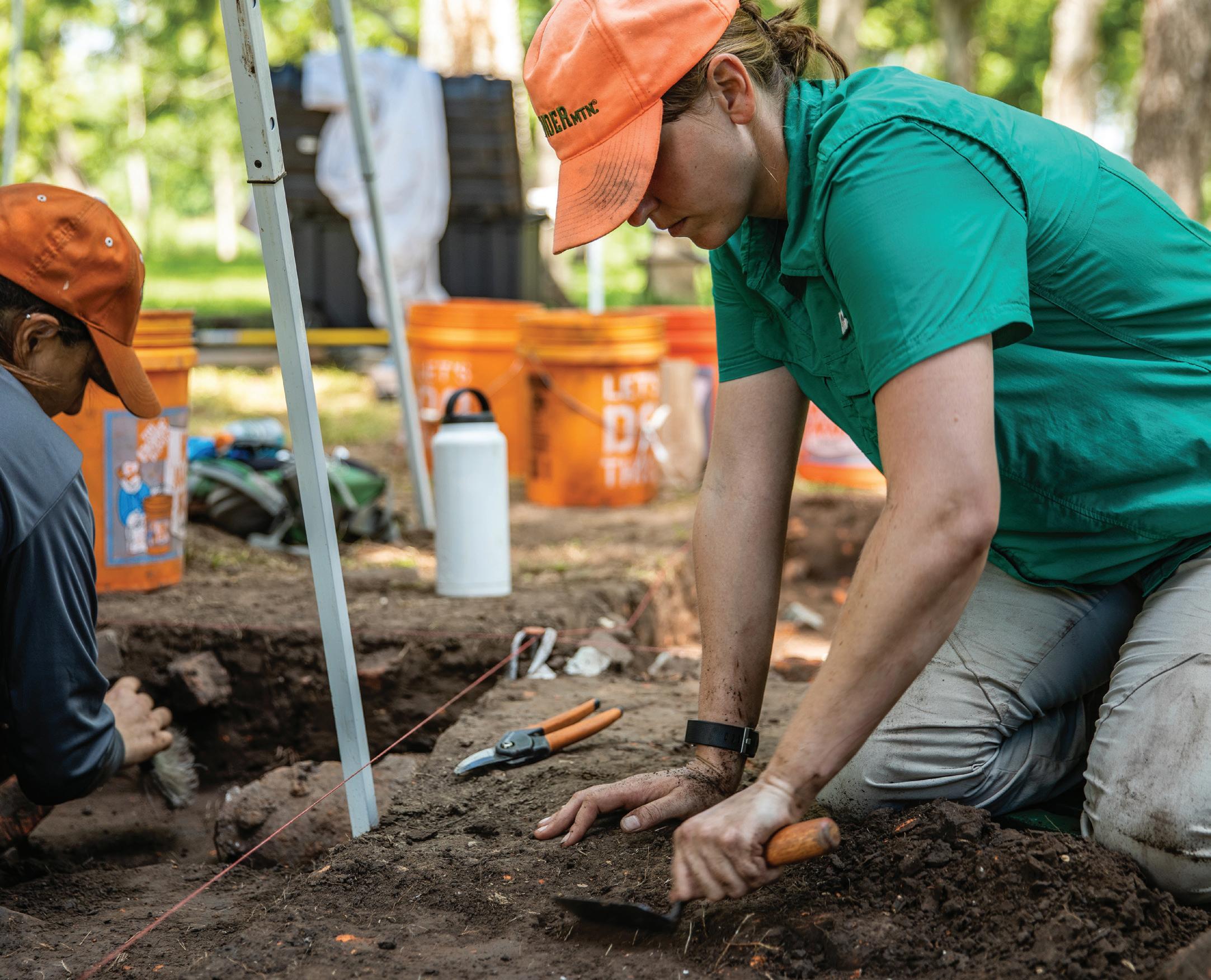 by Rob Hodges
by Rob Hodges
Each October, Texas Archeology Month celebrates the state’s history and heritage through the lens of archeology. What started decades ago as a relatively small weeklong celebration, could not remain diminutive—not in the Lone Star State! The commemoration has grown into one of the biggest, if not the biggest, state celebrations of archeology in the country.
Throughout the month, the Texas Historical Commission (THC) and partners across the state provide hands-on activities and host commemorative events such as archeology fairs, demonstrations, presentations, museum exhibits, and walking tours. Archeological societies, county historical commissions, museums, and other groups will host a multitude of events this October—with support from a legion of volunteers, many of them members of the THC’s archeological stewardship program, a statewide network of avocational archeologists who assist the THC’s small staff of archeologists. The THC relies on its partners in the Texas Archeological Society and Council of Texas Archeologists as Texas Archeology Month co-sponsors.
The featured event this month is the 2023 Archeology Fair at the THC’s French
78 TEXAS HISTORICAL COMMISSION
Legation State Historic Site in Austin on Sunday, October 15 from 11 a.m. to 4 p.m. The event is free to the public.

State and local partners will provide hands-on activities and demonstrations, take-home activity kits, museum tours and special exhibits, lectures and presentations, history walks, and more family-friendly activities.
One of the most popular activities at the annual Archeology Fair is the atlatl throw, where visitors eagerly wait in line for their turn to try a prehistoric device that propels a hunting spear much farther than the human arm alone. Another favorite activity is the hands-on pinch-pot kits, which allow participants of all ages to experience one of the oldest pottery techniques in the world (learn more below).
These and many other activities such as flintknapping demonstrations will be presented by partner agencies and organizations, including Bastrop Independent School District, the Center for Archaeological
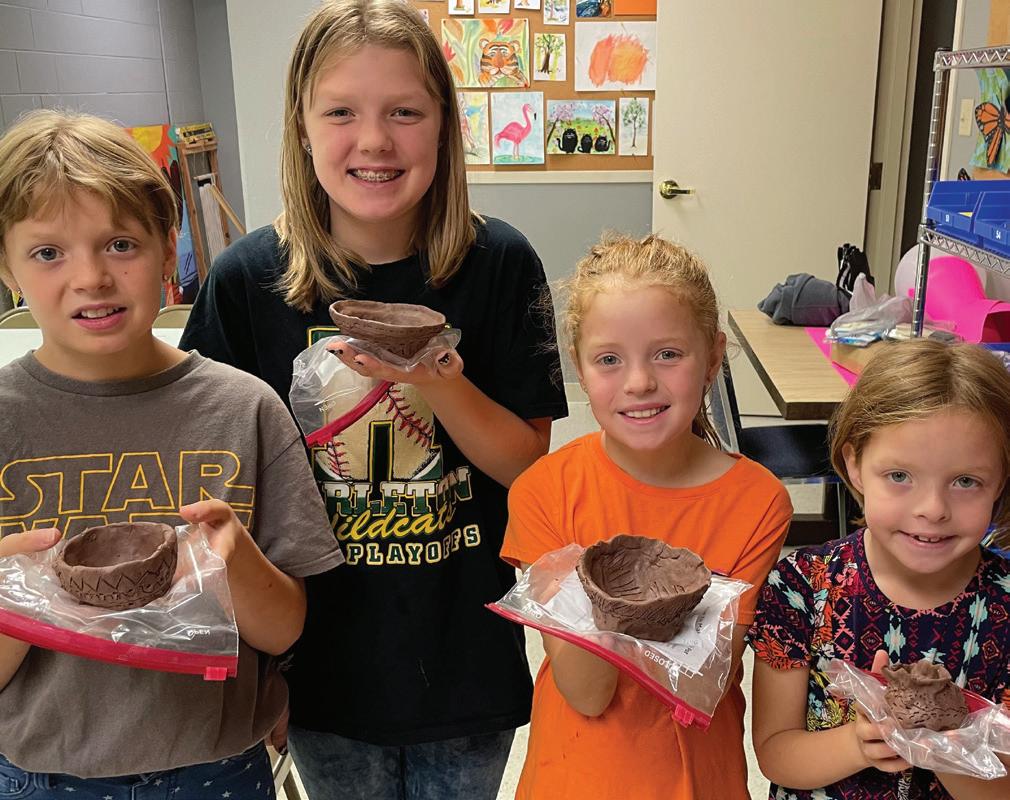
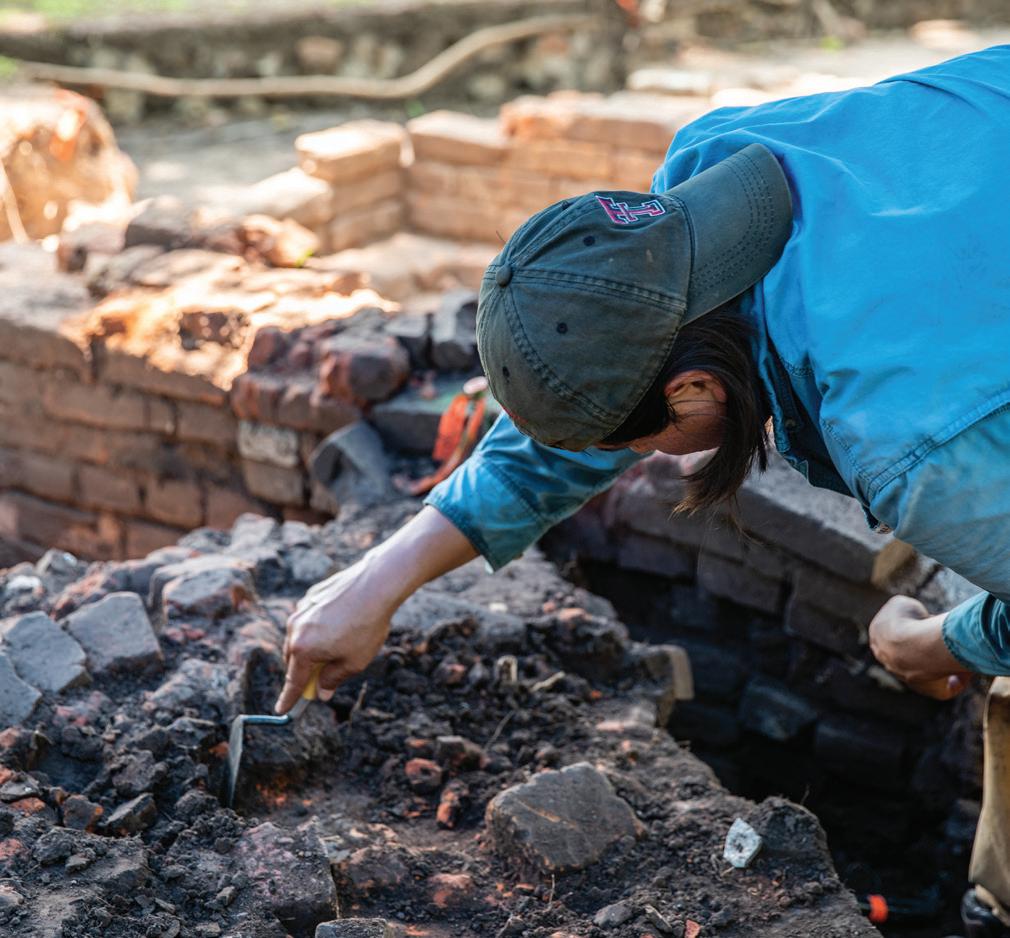
Studies at Texas State University, Generation Serve, Horizon Environmental Services, the Texas Archeological Research Laboratory at The University of Texas at Austin, Texas Archeological Society, Texas Beyond History, Texas Department of Transportation, Texas Parks and Wildlife Department, and the Texas Science and Natural History Museum.
To RSVP for the Texas Archeology Fair, go to texasarcheologyfair.eventbrite.com.
Another special event is the Foundations of the Republic archeology tours at Washingtonon-the-Brazos State Historic Site, where visitors can experience a once-in-a-lifetime excavation of the remains of the town of Washington. Guided walking tours of ongoing archeological work will be offered to the public several times throughout the month. The 30–45-minute tours will take place at 11 a.m. on Tuesdays, Wednesdays, and Thursdays in October.
Visitors will learn about the
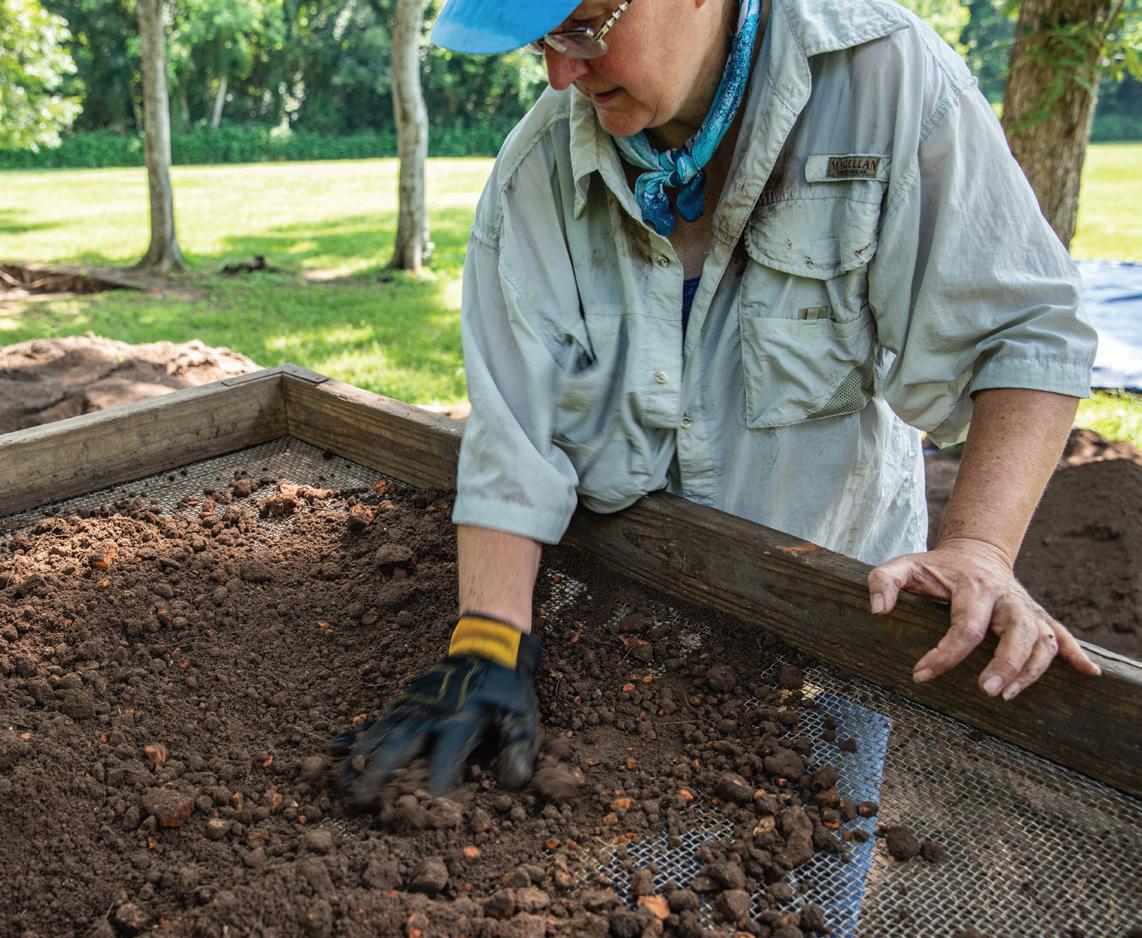
79 AUTHENTIC TEXAS FALL 2023
archeological process and the history of the early to mid-19th century townsite during active archeological excavations at 11 building locations. Project goals are to uncover various buried building remains and then perform analysis on what is anticipated to be a large number of artifacts. Guests will get to speak with archeologists and visit the field lab to see what has been uncovered.
During the height of the pandemic, when in-person events were mostly canceled, the THC began distributing free, interactive archeology activity kits across the state. The pinch-pot kits come with everything needed to learn about, make, and decorate a “pinch pot”—a simple pottery technique used by early Texans and other cultures for thousands of years. They have been popular among primary schools, homeschool groups, and local archeology and history organizations, and the THC has responded by increasing the number of kits distributed each year—up to 10,000 in 2023.
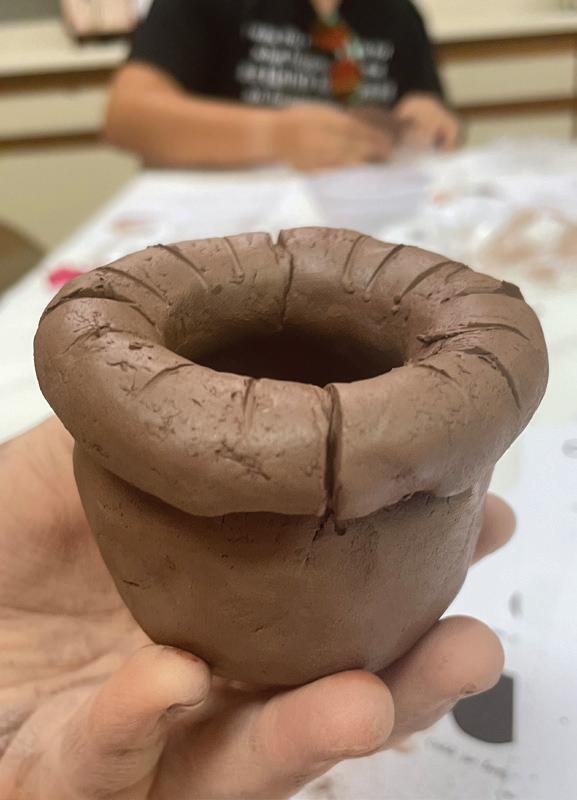
Pinch-pot kits are available for pick up at many THC state historic sites and participating museums during October. Find locations near you, as well as additional events across the state, free resources, volunteer opportunities, and more at thc.texas. gov/tam.
Business Award Spotlights
Shipley Donuts
Houston — 1936
Little Red Nursery LLC
Lubbock — 1959
The Cammack Family
Sullivan Funeral Home
Marshall — 1931
Wilcox Drug Store
Anahuac — 1948
Boots Burgers Rockwall — 1968

DB&E Co
Dalhart — 1947
Mission Auto Supply
Dalhart — 1957
Legend Bank Bowie — 1890
Progress Times Mission — 1972
KXIT Radio
Dalhart — 1948
Felix Studio Mission — 1949
Spikes Motor Co. Mission — 1937
The Benton Lutrell Co. Van Alystyne — 1896
City Drug Van Alystyne — 1890
Scoggins Funeral Home
Van Alystyne — 1885
Chambers County Abstract Company, Inc.
Anahuac — 1875
Halamicek Auto Supply
Gonzales — 1928
Fort Stockton Insurance Agency
Fort Stockton — 1911
Gibson’s Discount Center
Kerrville — 1968
Texas Farm Products
Nacogdoches — 1930
Sammy’s Restaurant Castroville — 1948
Central Texas BBQ
Pearland — 1969
El Fenix Café — Established: 1950
“This restaurant has seen many significant disasters come through the city; for instance, Hurricane Beulah and Dolly, floods, and Covid-19, but we continued the legacy my parents left and worked so hard for: ‘The American Dream.’ My father was an immigrant and he would mention that when you own a part of America and are able to pass that on to your kids, it makes life worth living.”
Furniture Fashions — Established: 1965
“Our community believes that nothing is unattainable. If the big cities can have it, so can we. If you can experience it in larger venues, you can experience it here as well. Furniture Fashions has the same mindset. They try to provide quality merchandise for all customers. They maintain an outstanding stock of goods that rivals much larger stores in larger cities.”
Monte Carlo Café — Established: 1960
In the 1920s or 1930s, Fermina Torres Rodriguez owned a little fonda, or inn, where people in the area could get a warm meal. Fermina’s daughter, Cipriana “Cipi” Rodriguez, learned the business from her mother; unfortunately, Fermina died when Cipi was only 16 or 17 years old and the fonda closed down... She married a foreman in the Bracero Program and began preparing meals for them, which was the unofficial duty of a Bracero wife... in those days, they wouldn’t sell property to a woman. Her brother, Lorenzo Rodriguez, helped her purchase a parcel of land with a house on Miller Avenue under her father’s name. In 1960, Lorenzo converted the house into a restaurant, which he named the Monte Carlo Café.
80 TEXAS HISTORICAL COMMISSION
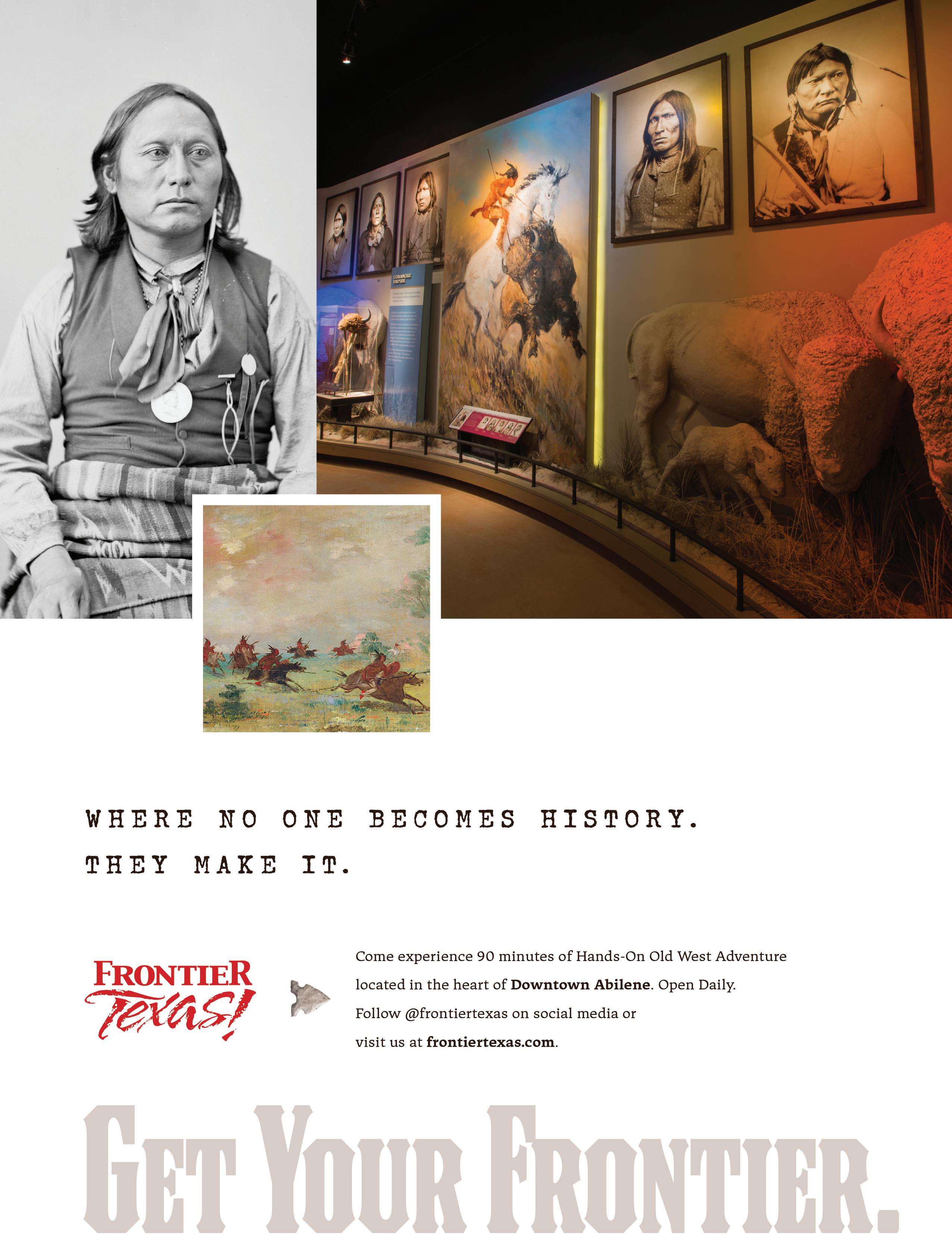
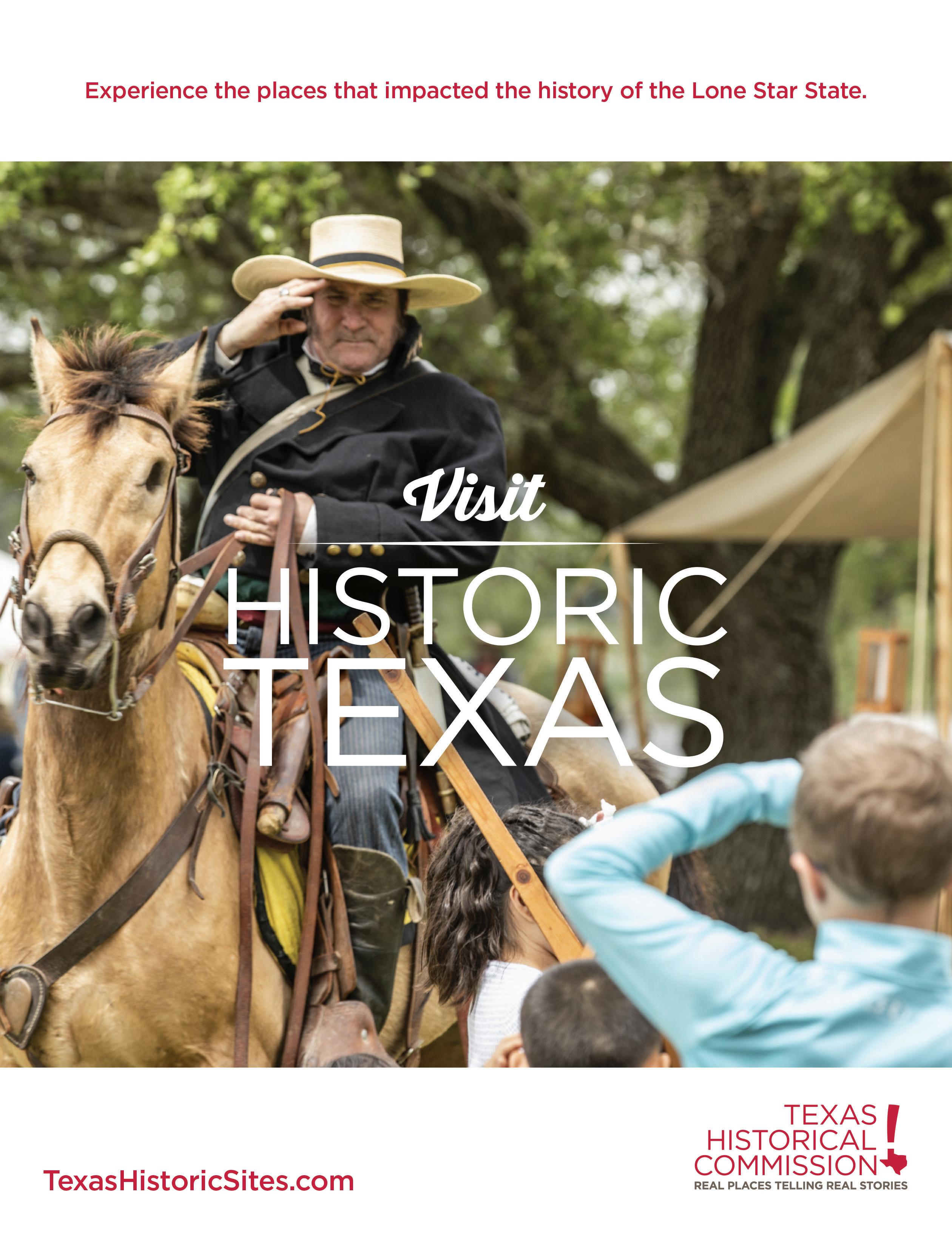

















 by Randall Kinzie
by Randall Kinzie











 by Tristan Smith
by Tristan Smith


































 by Allison Kendrick
by Allison Kendrick










 by Eric W. Miller
by Eric W. Miller

 by Tristan Smith
by Tristan Smith

















 by Julie Smith
by Julie Smith













































 by Rob Hodges
by Rob Hodges







